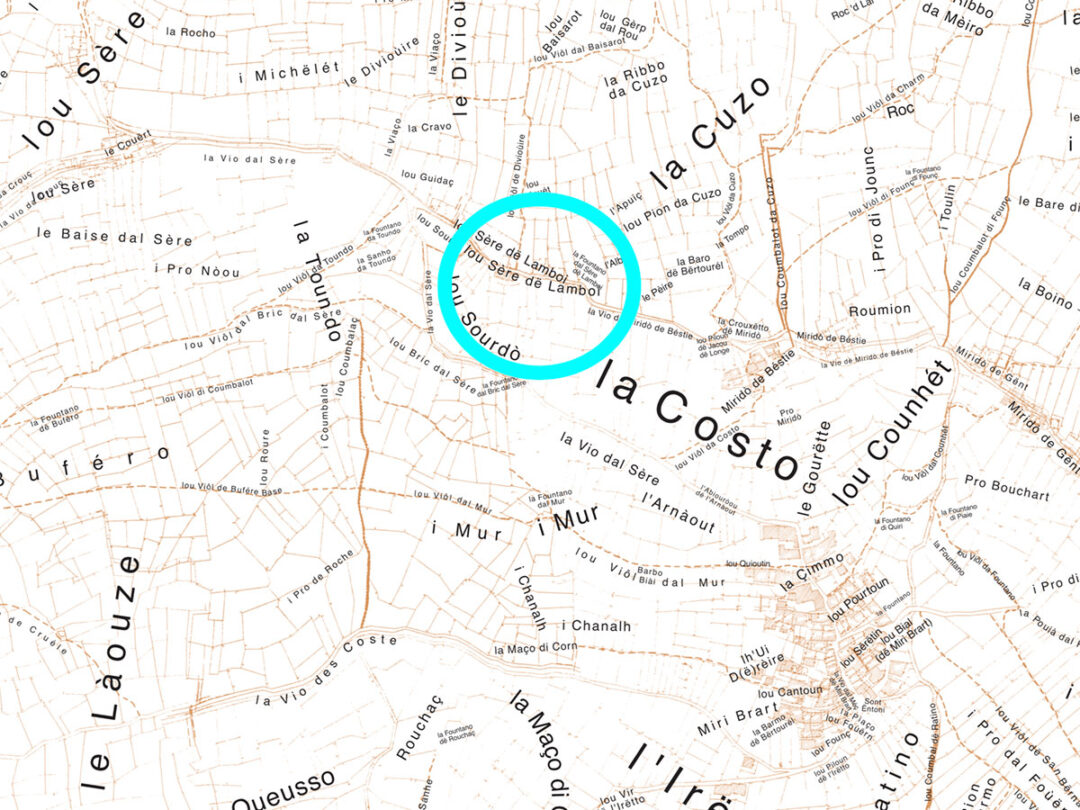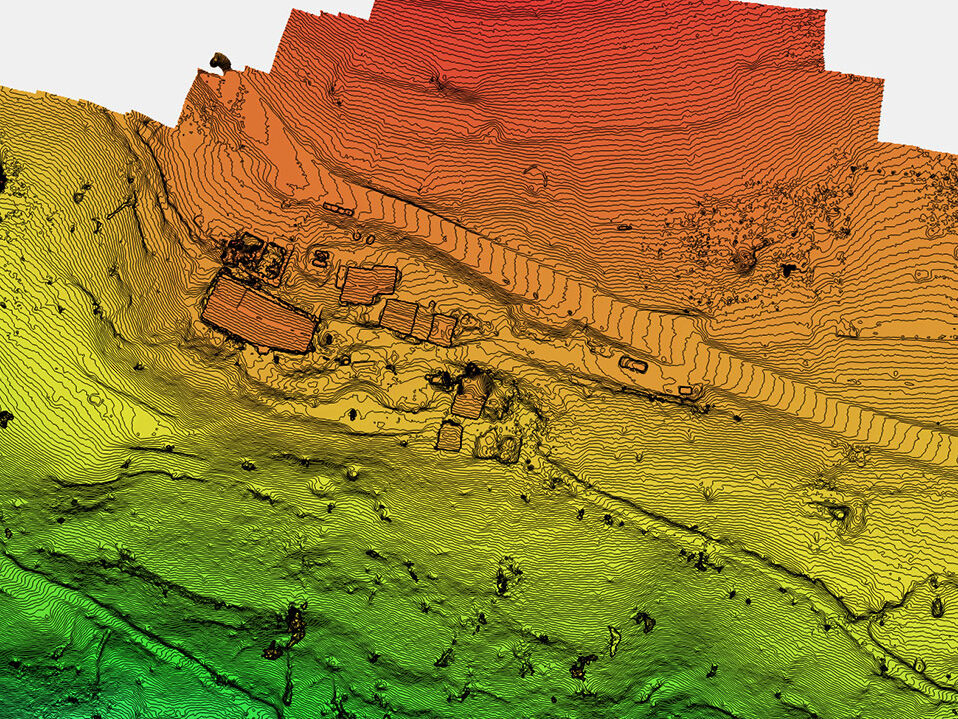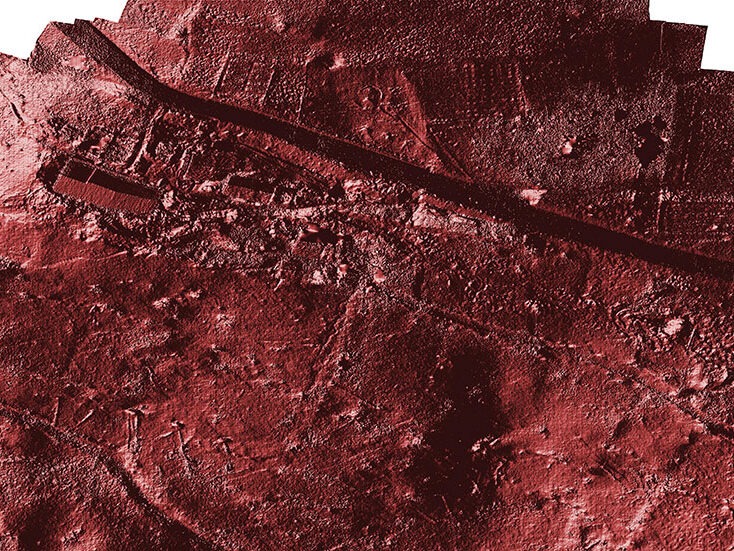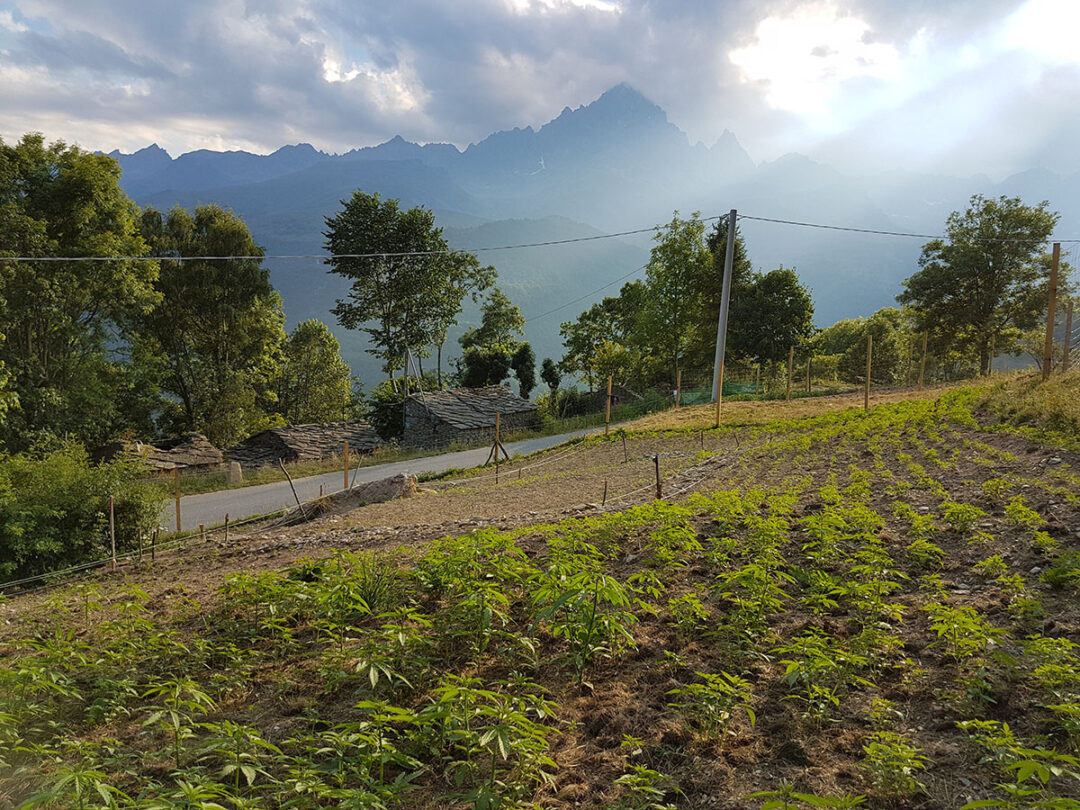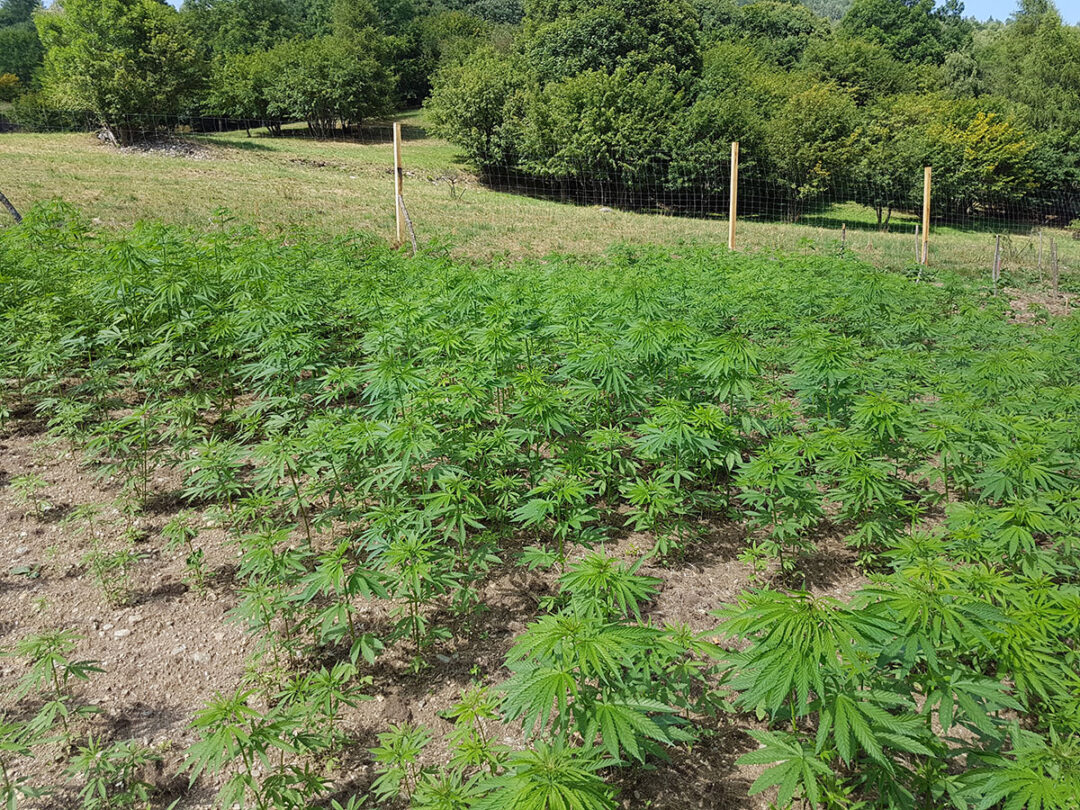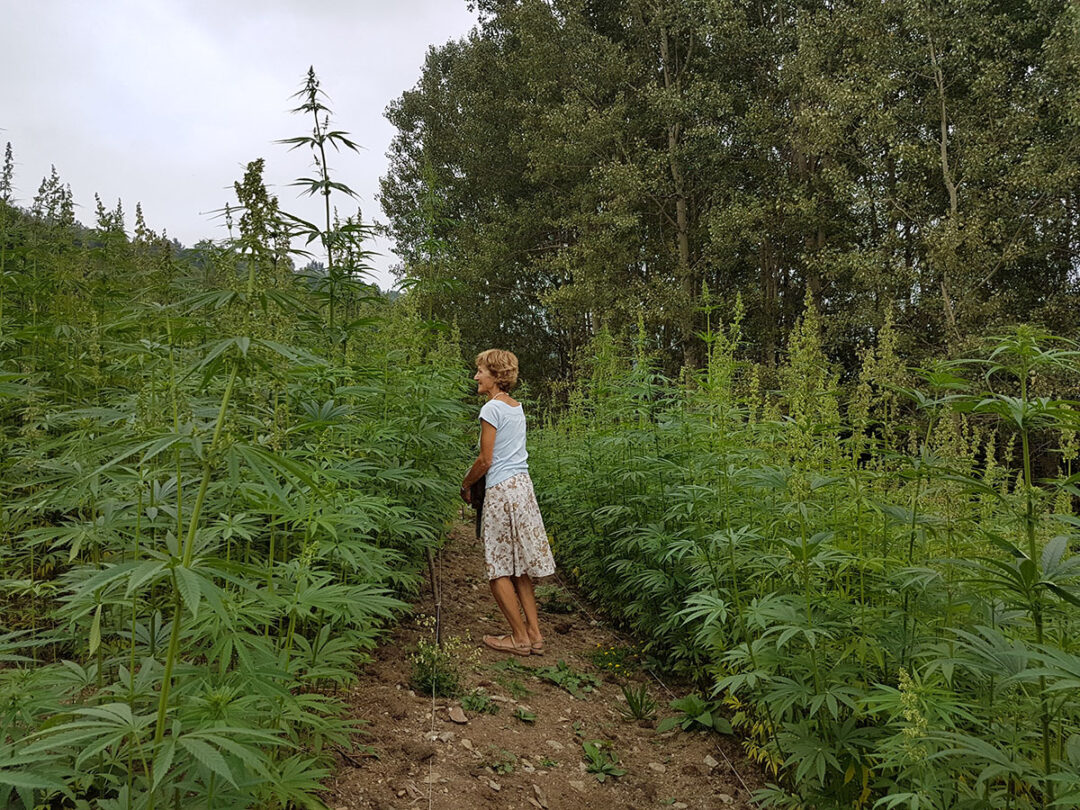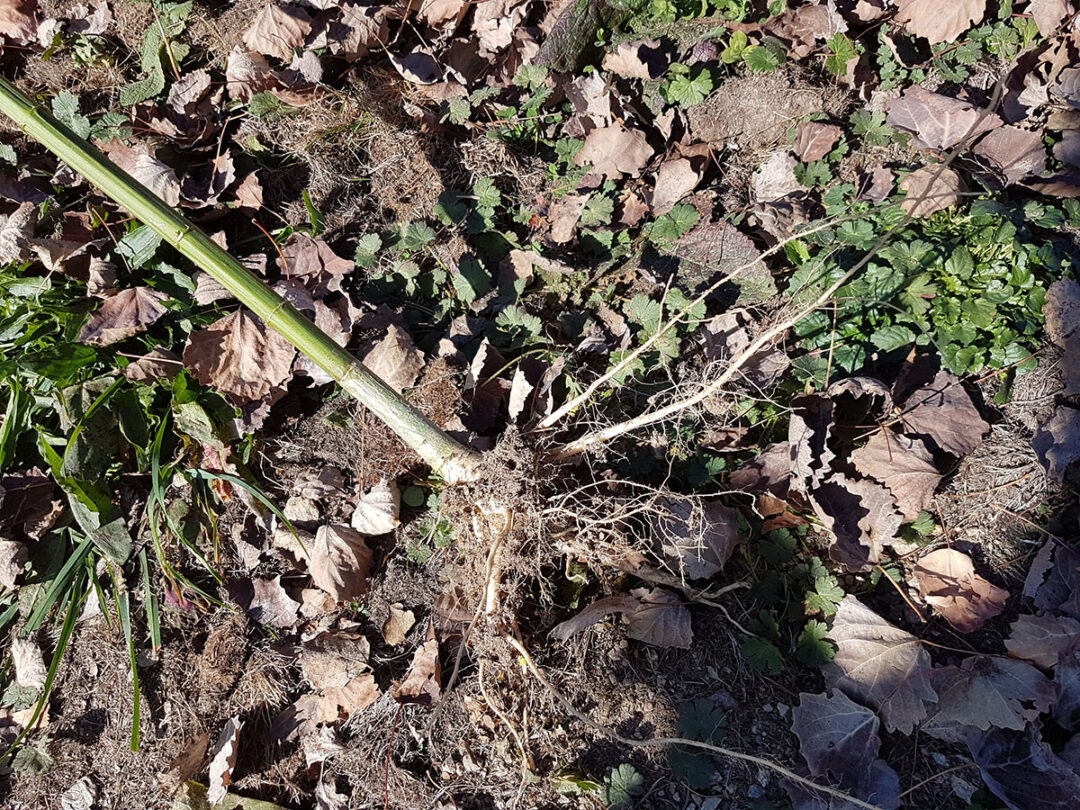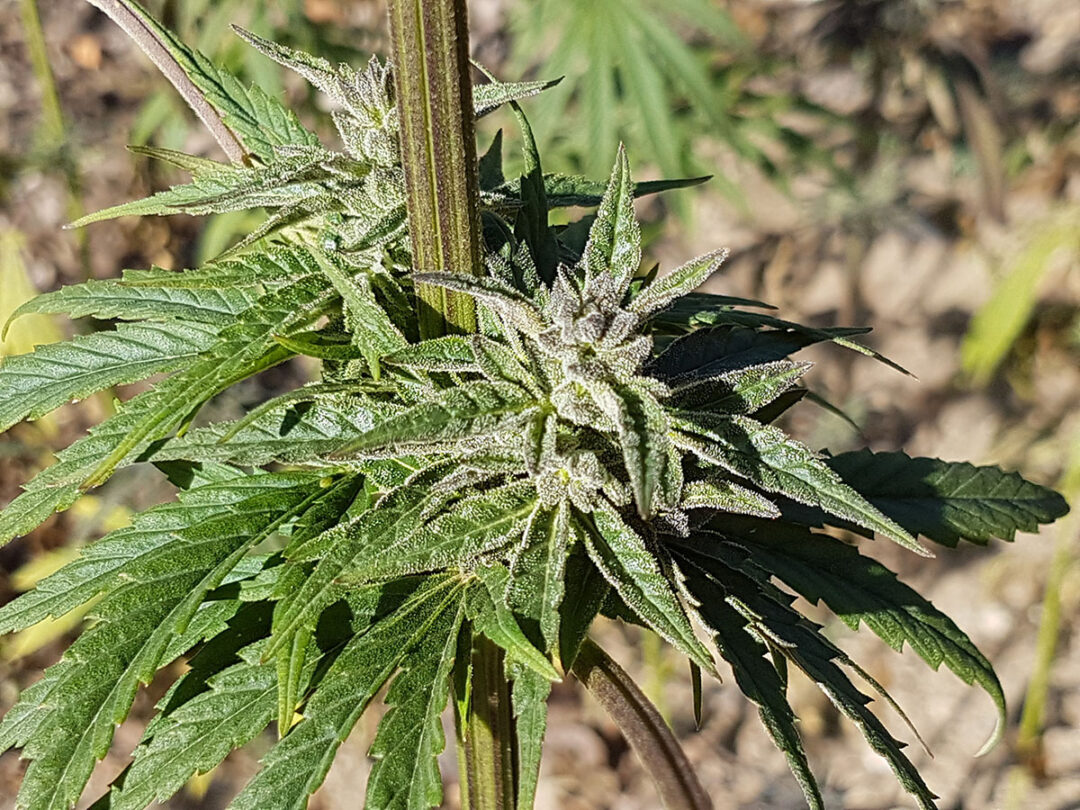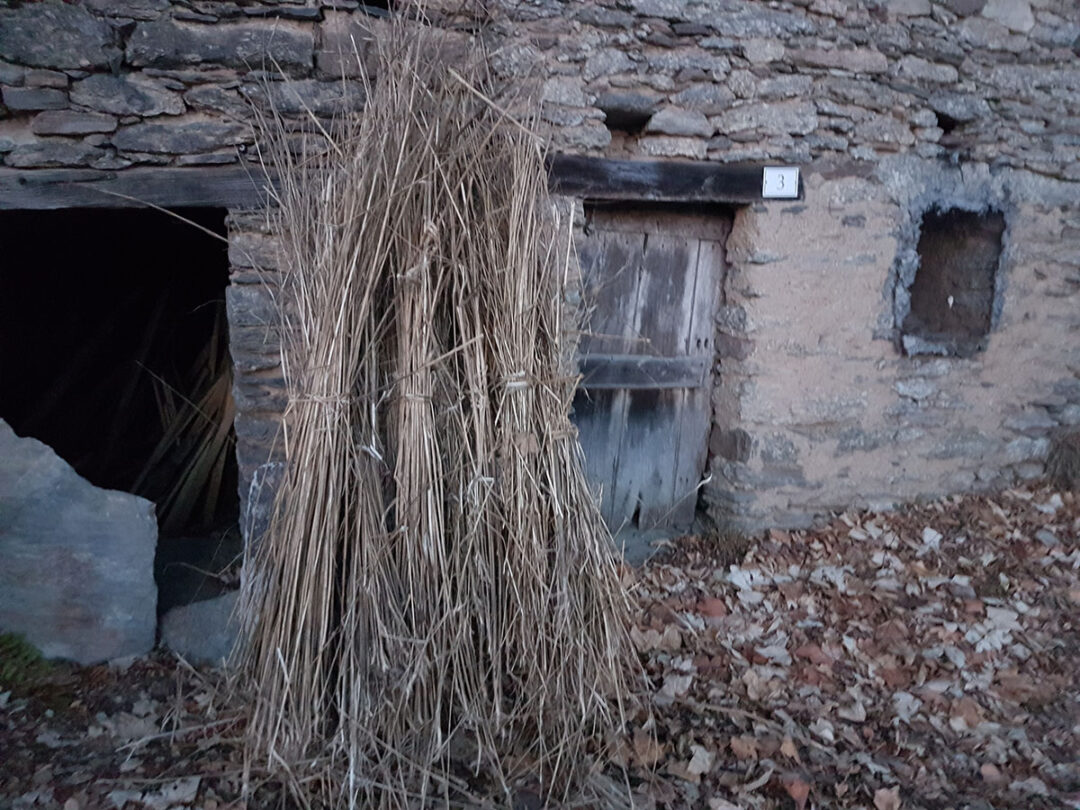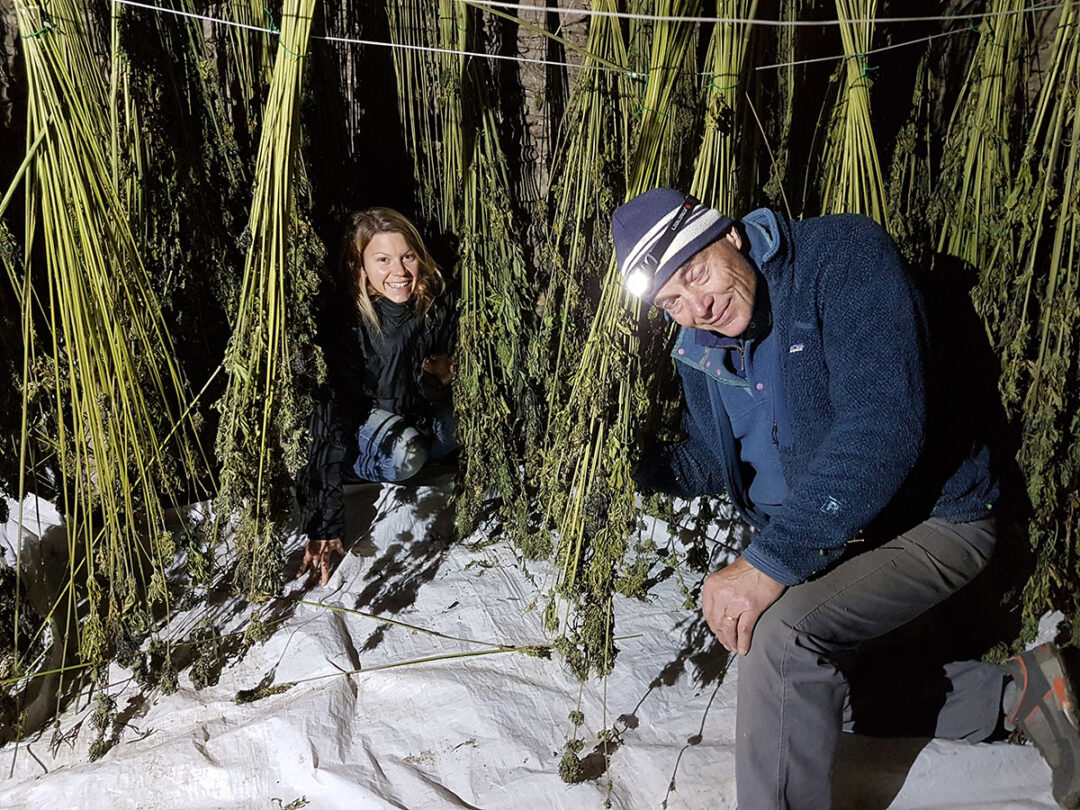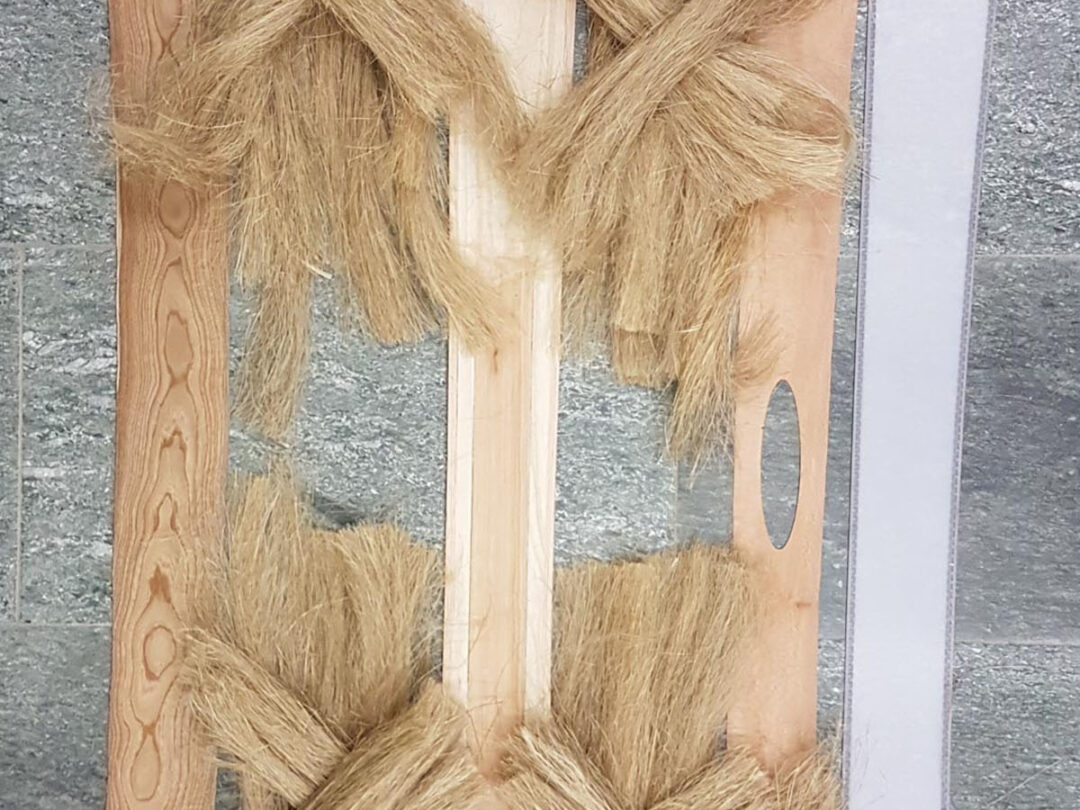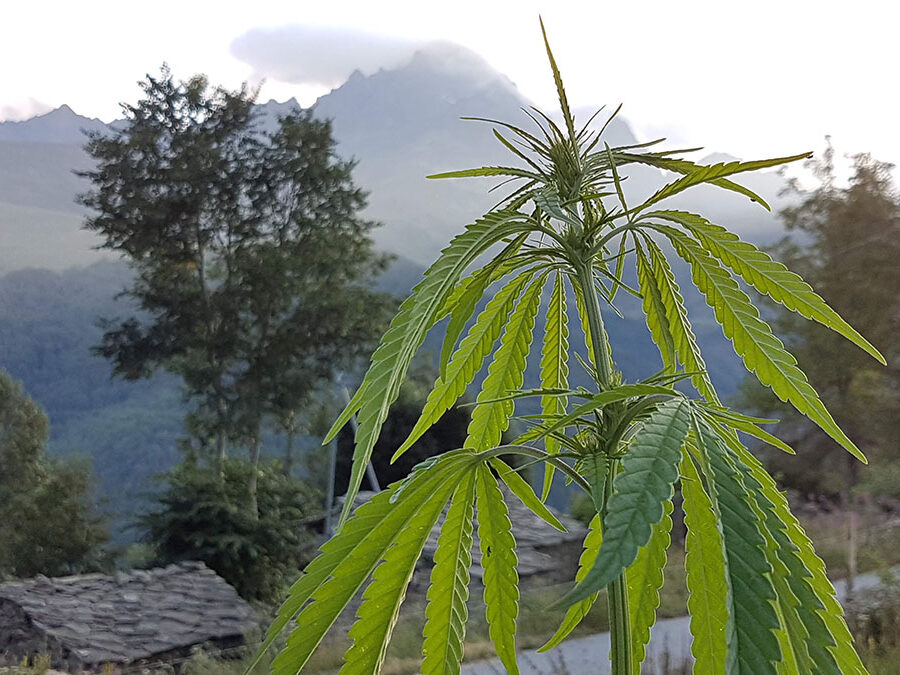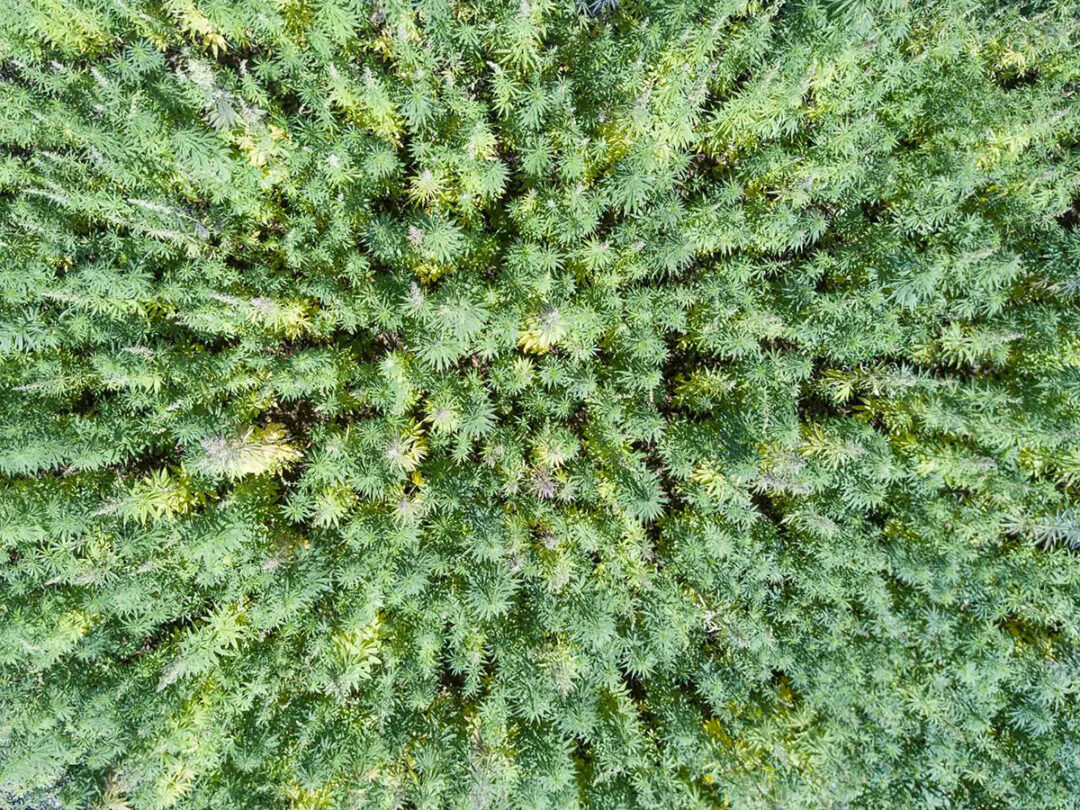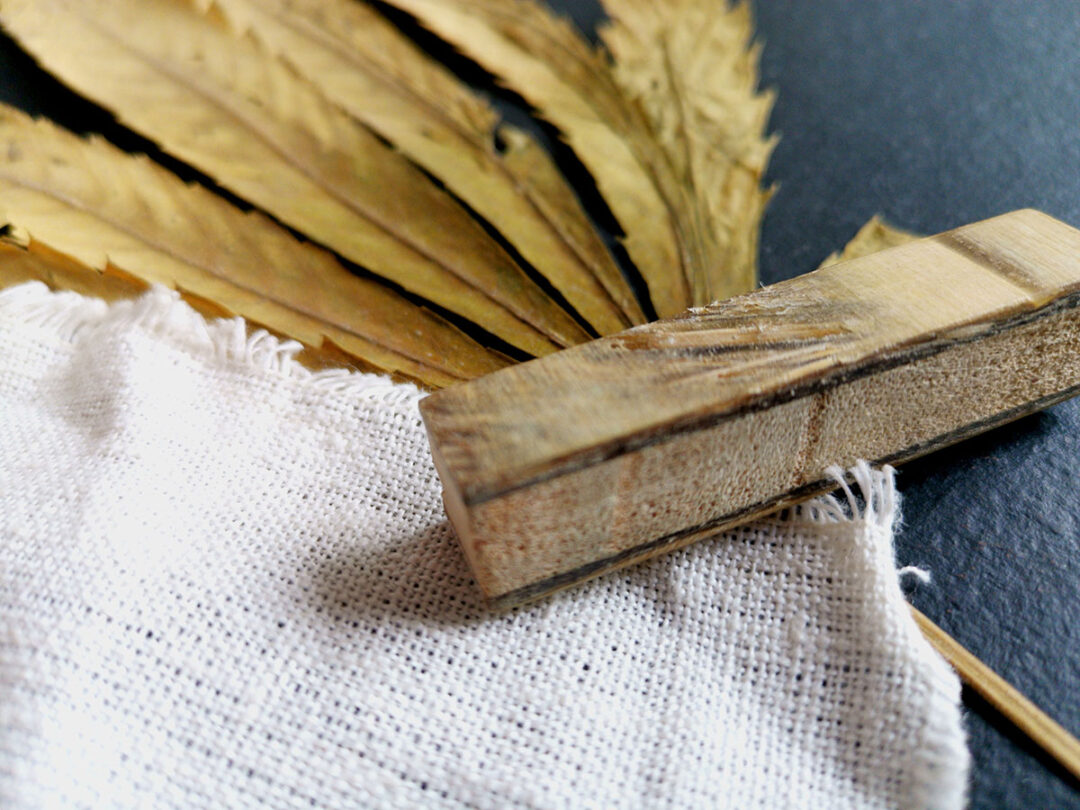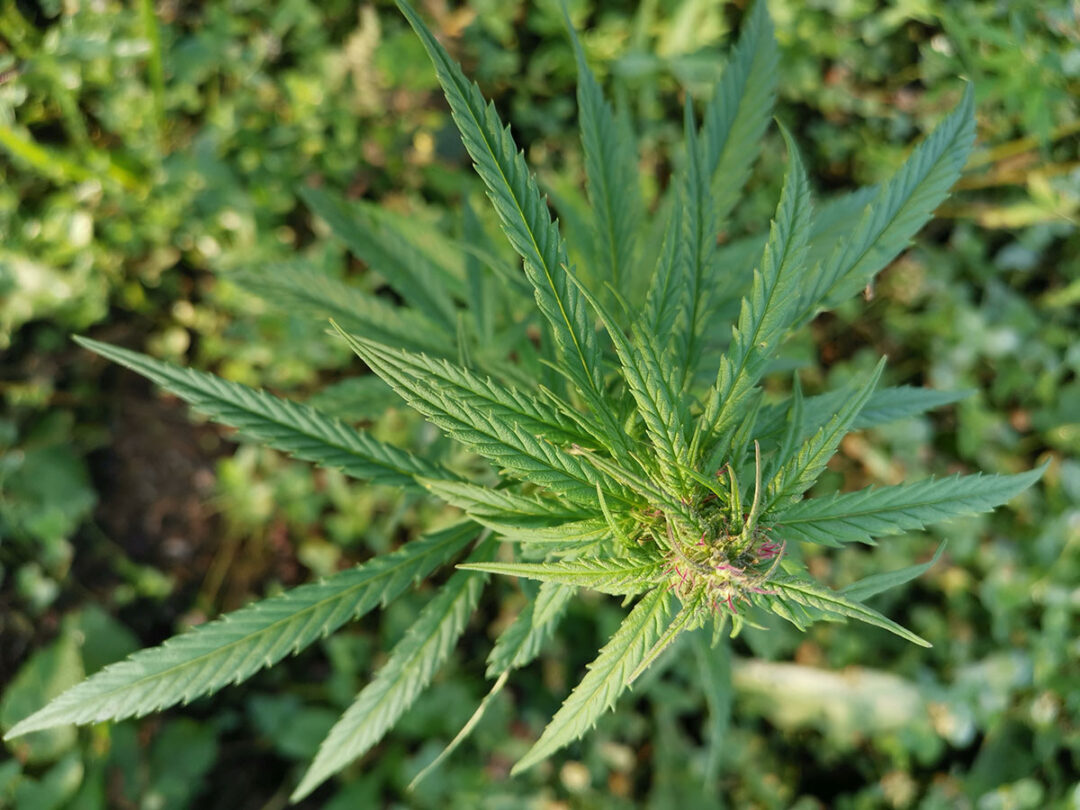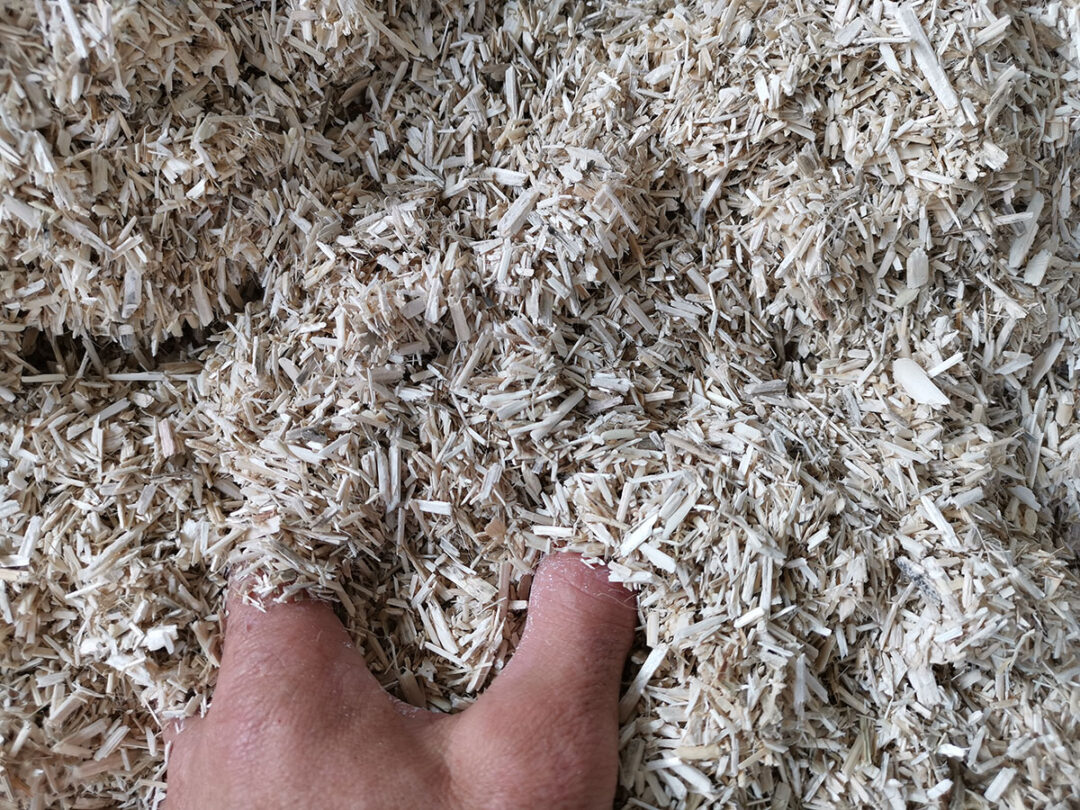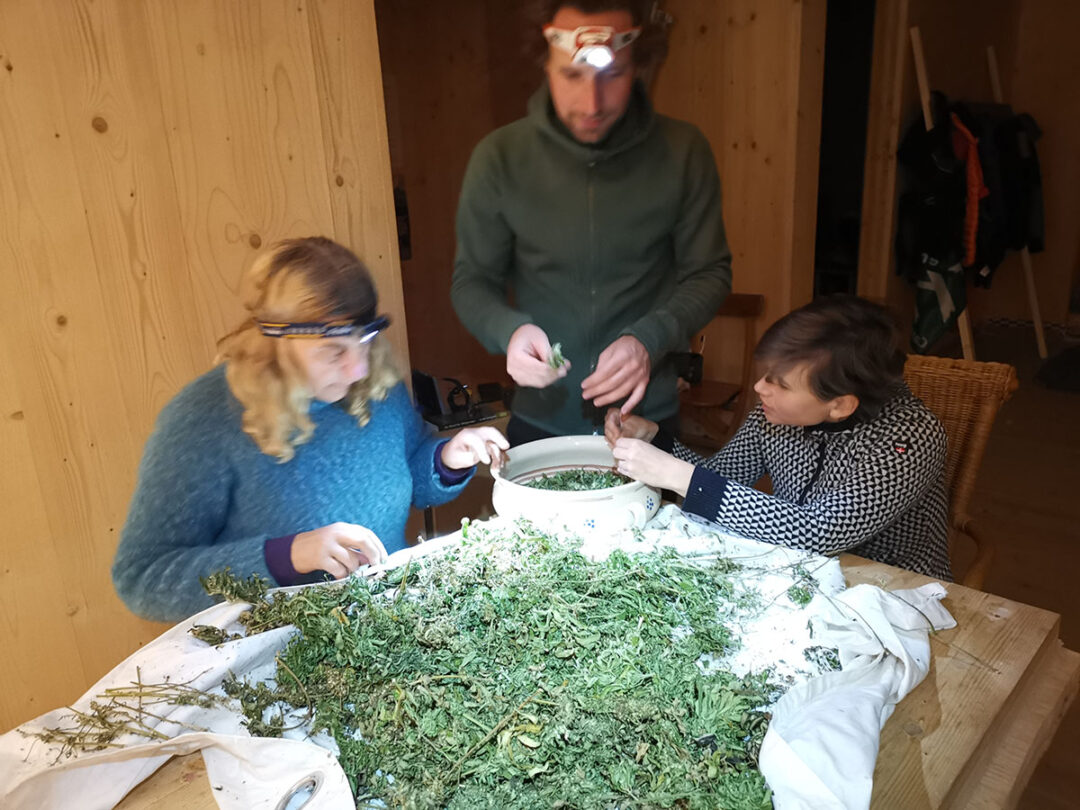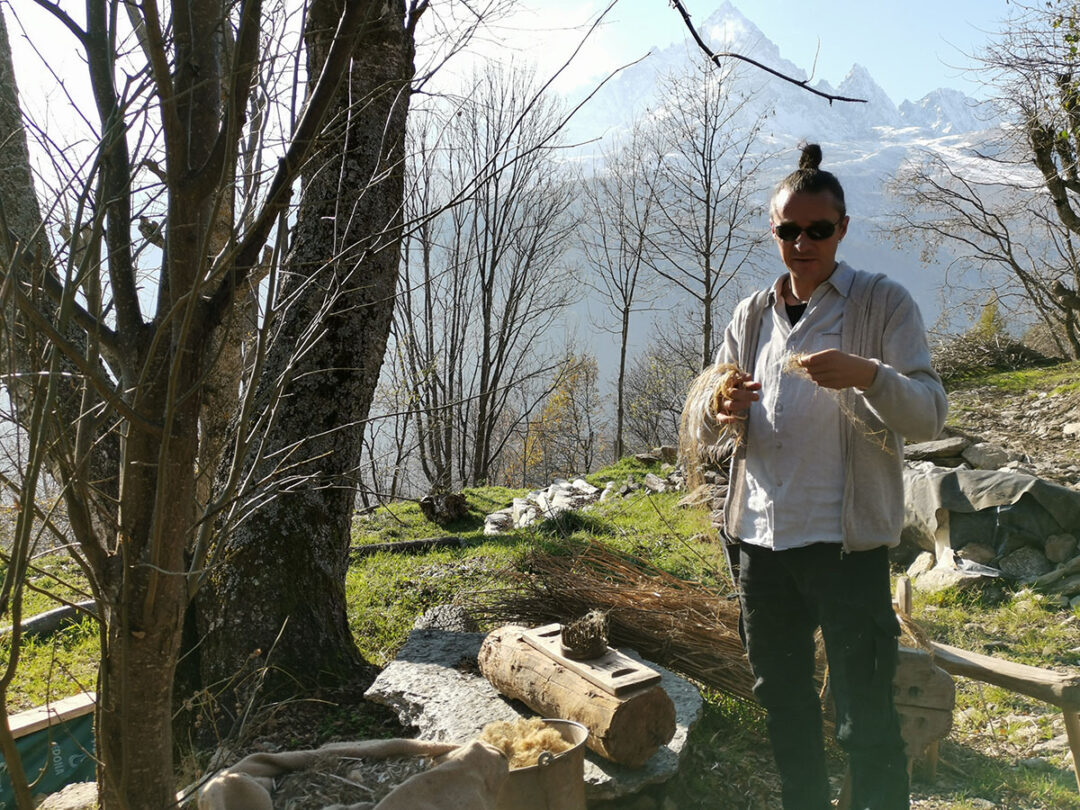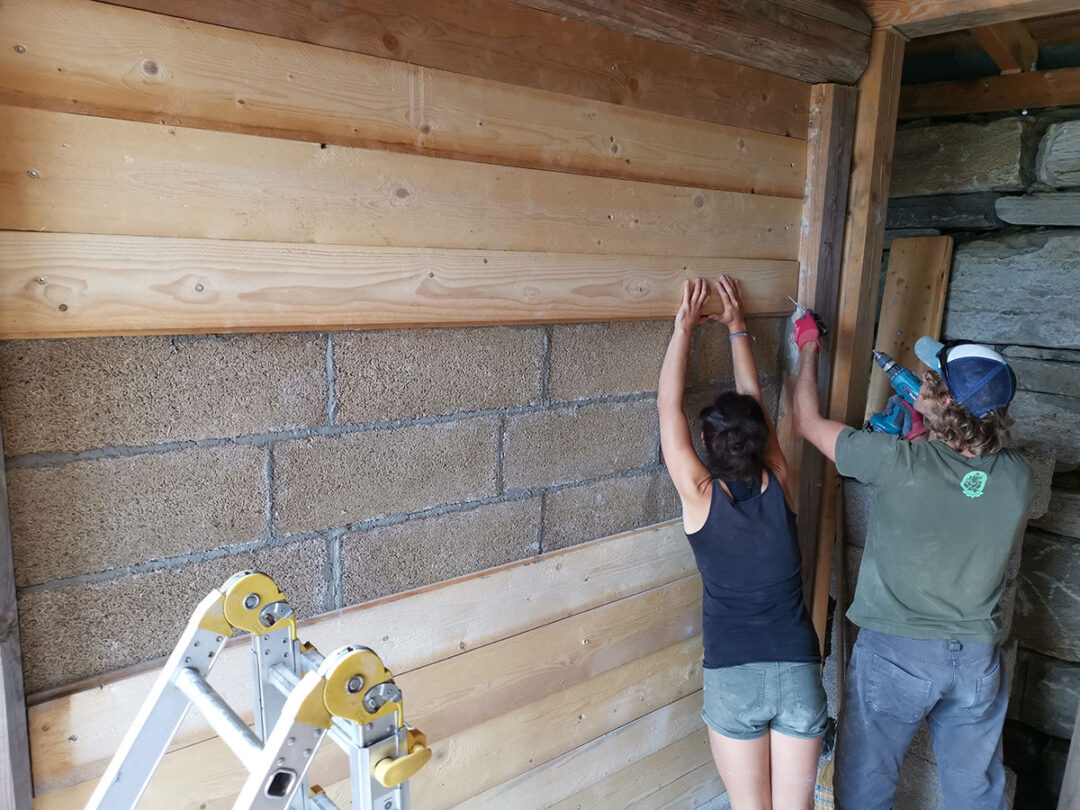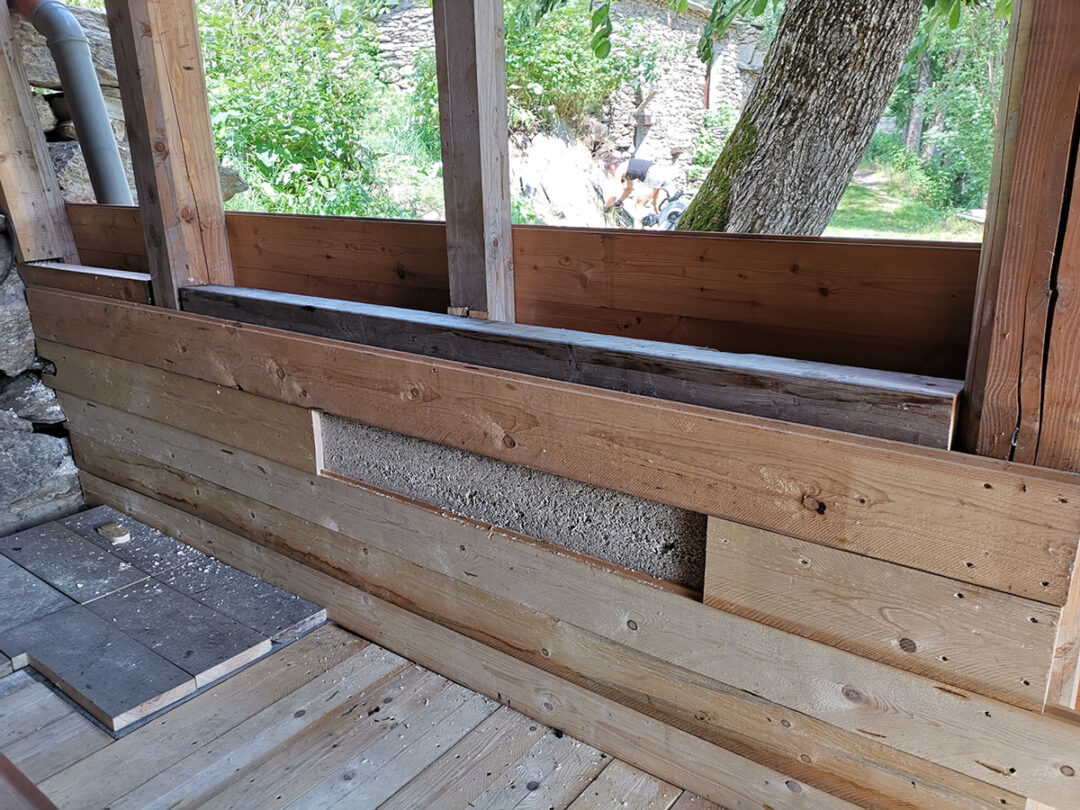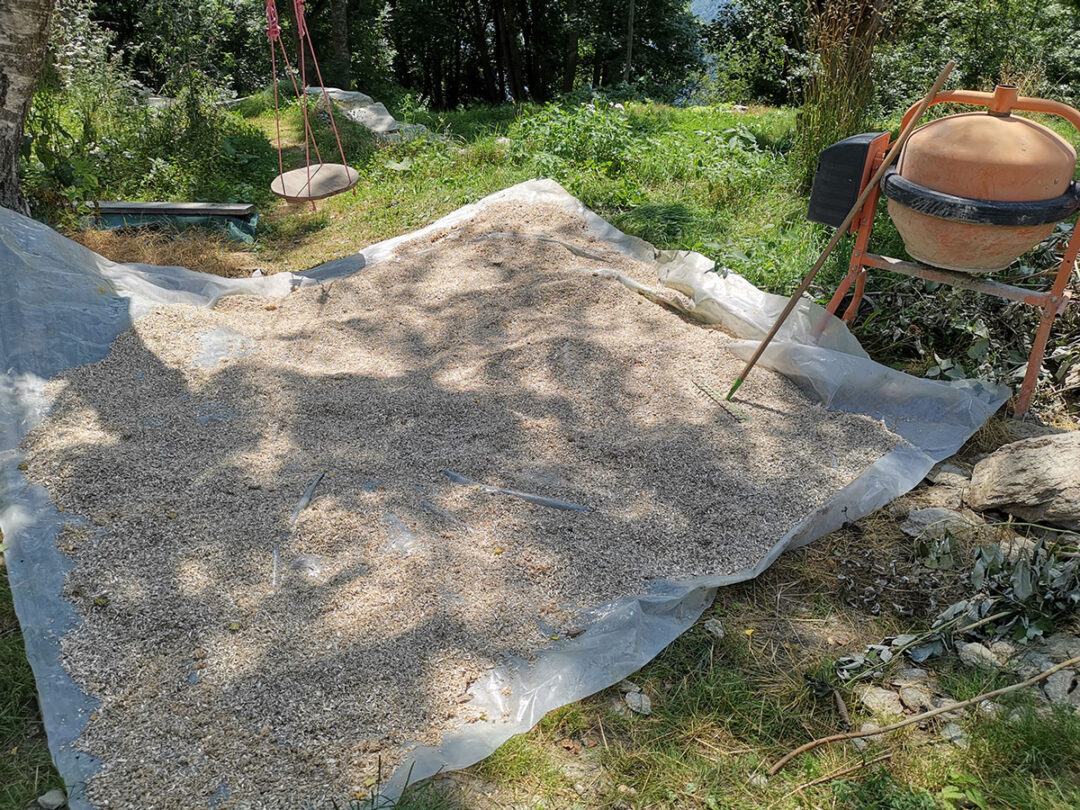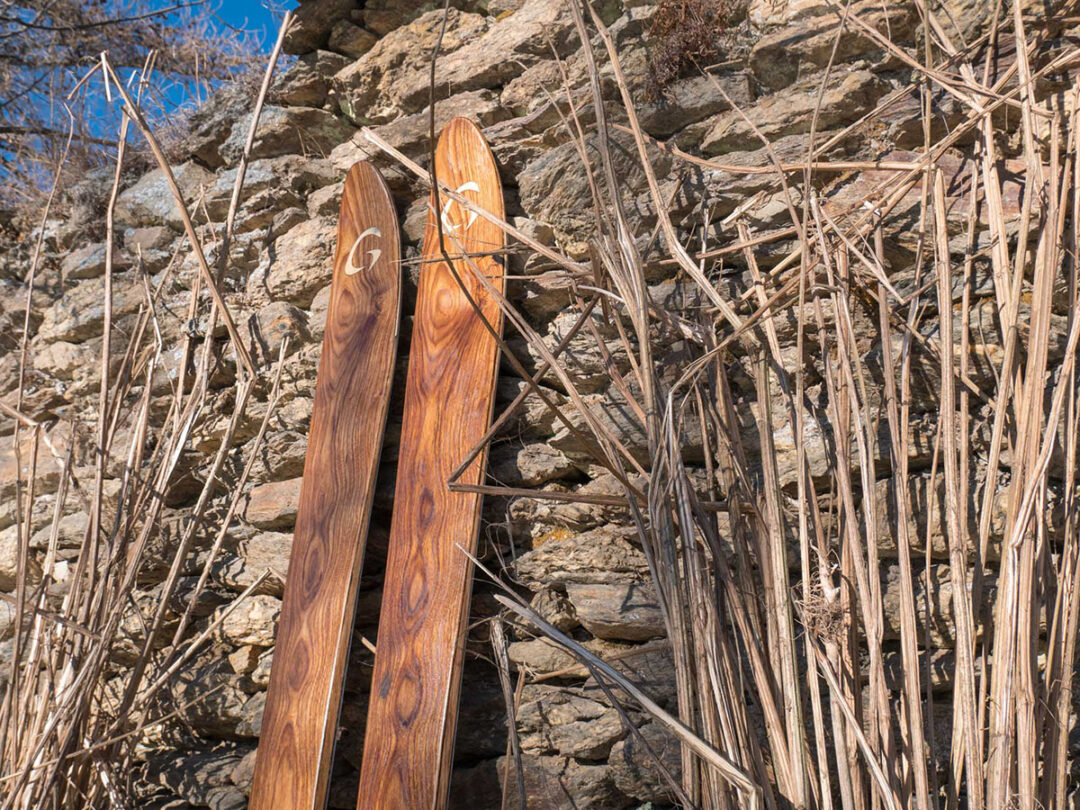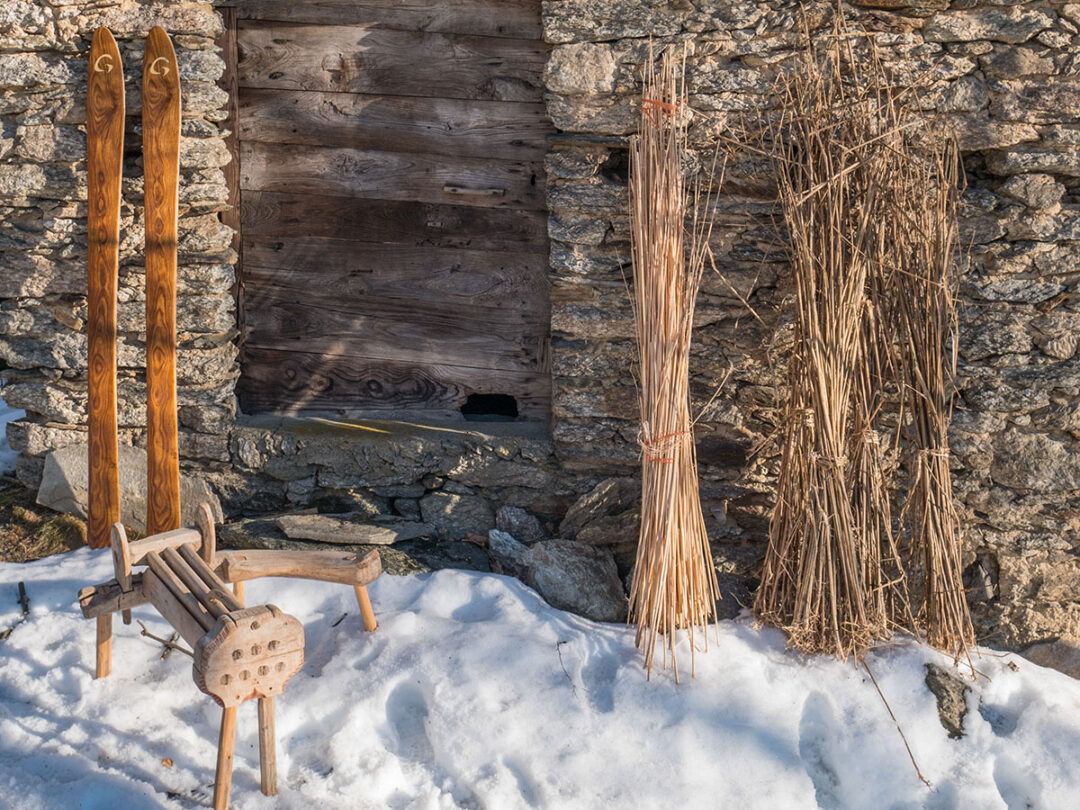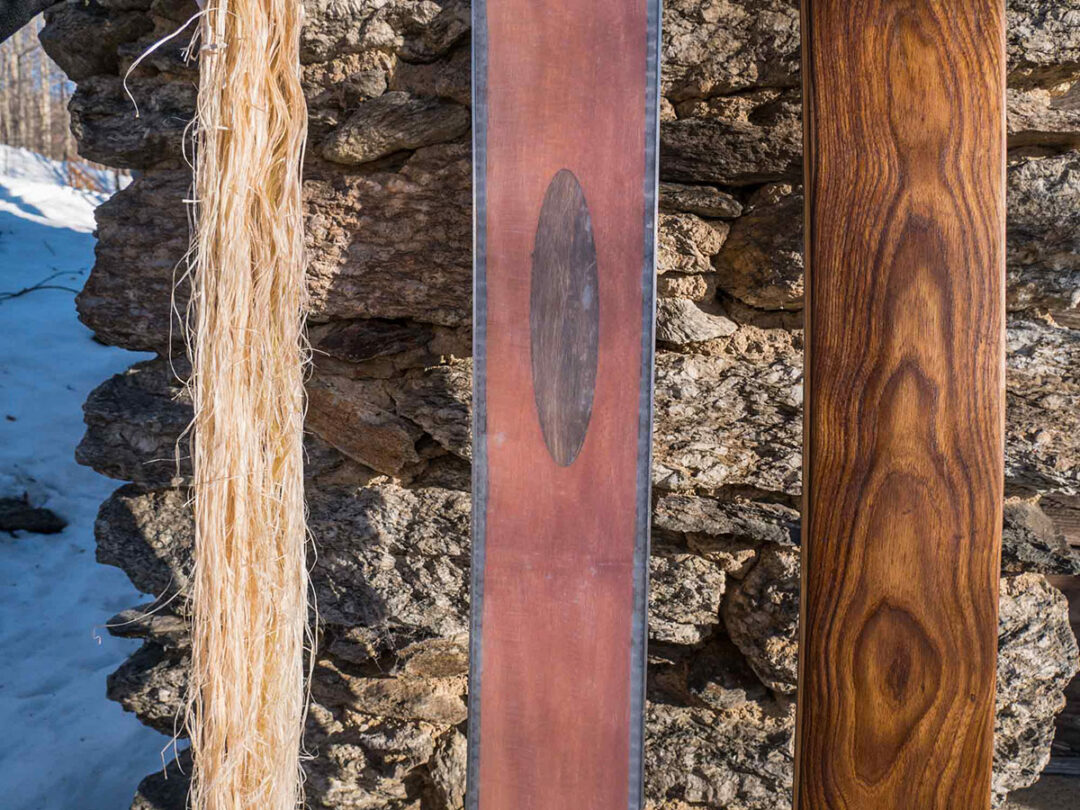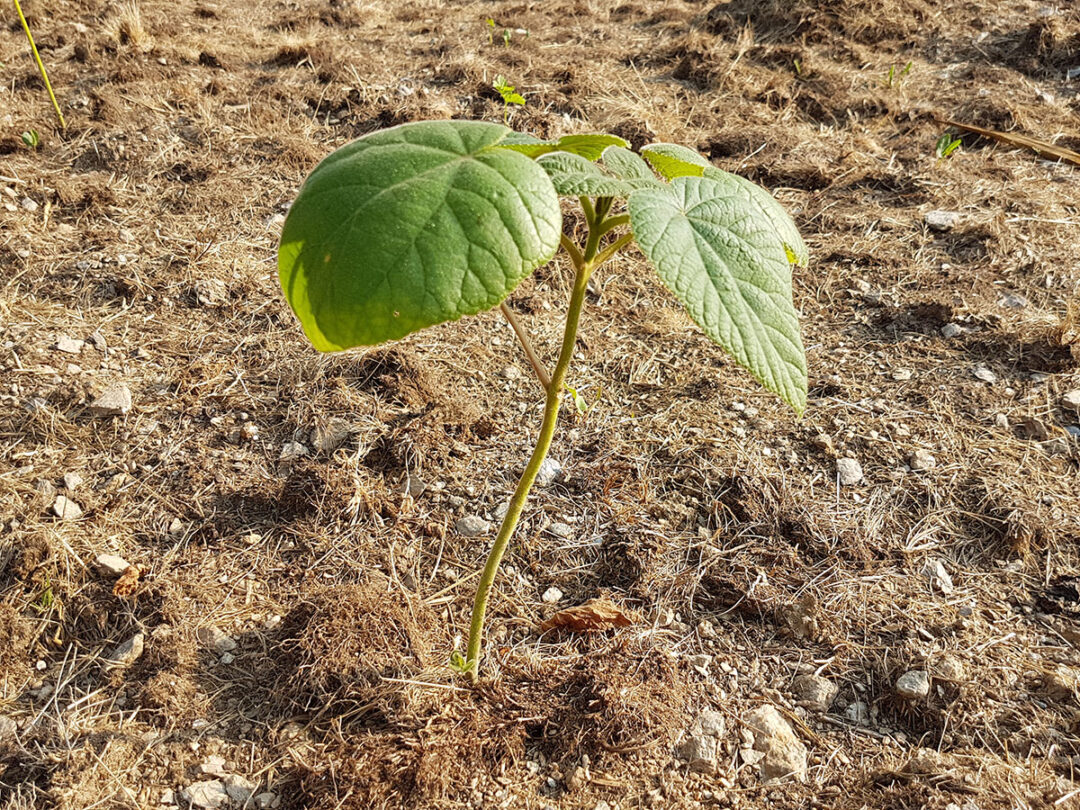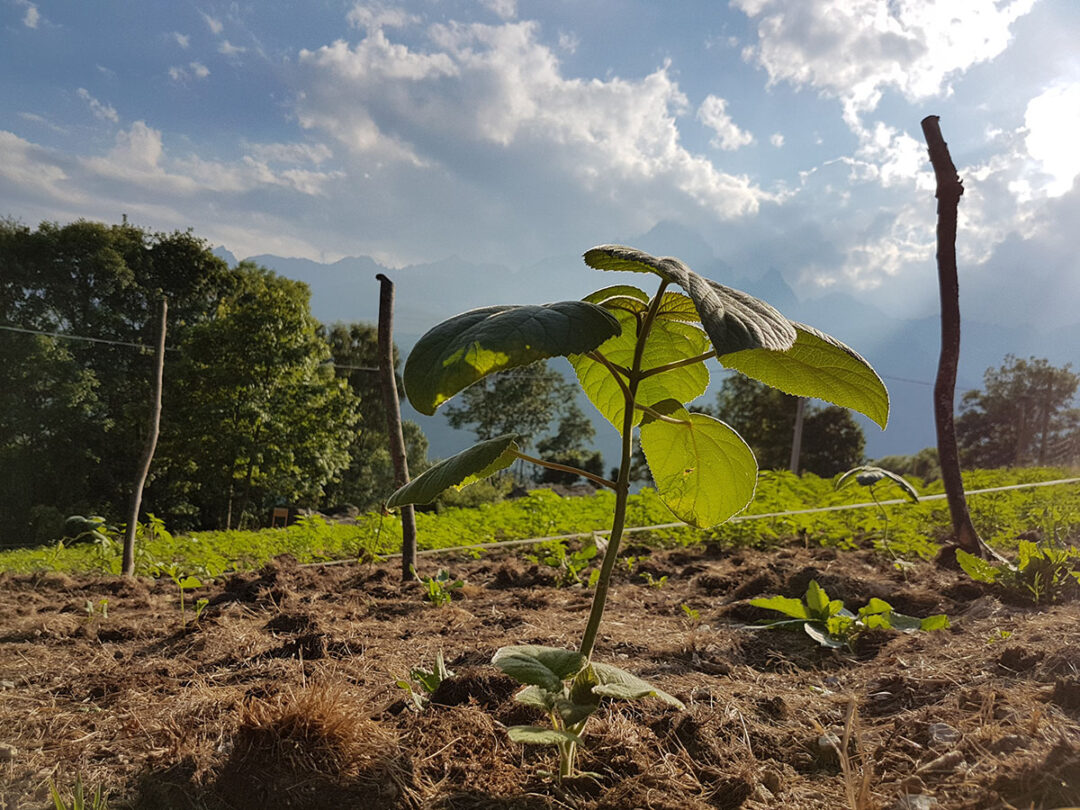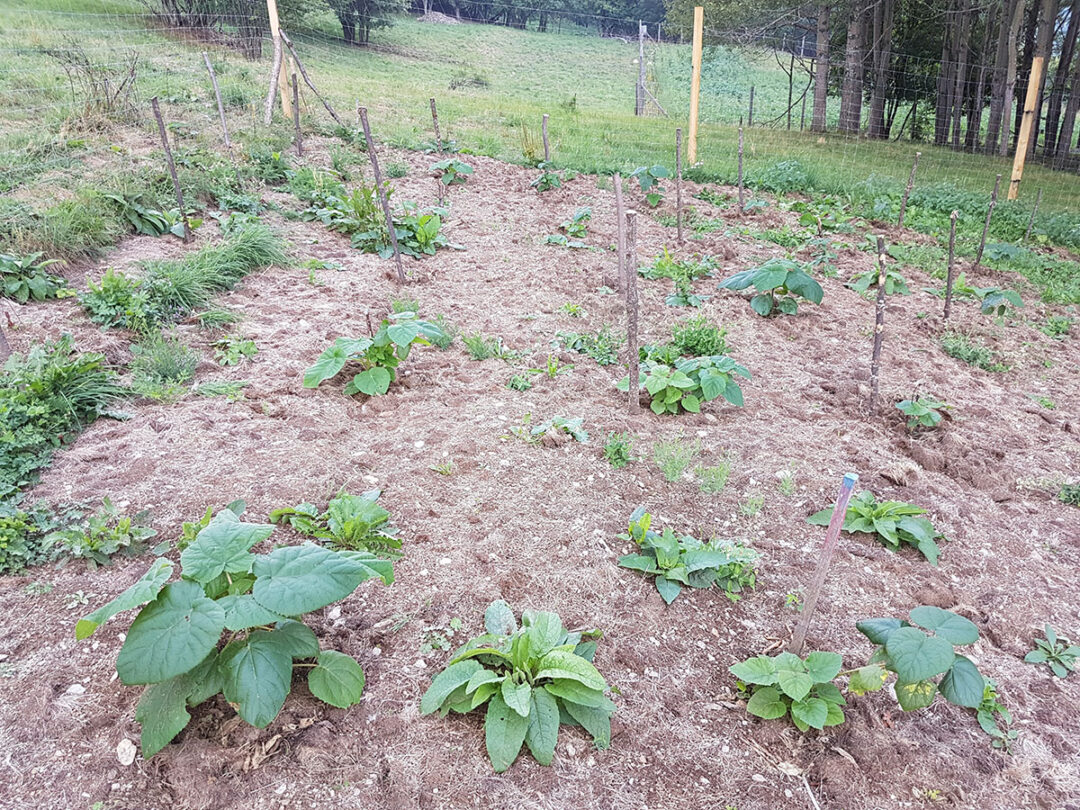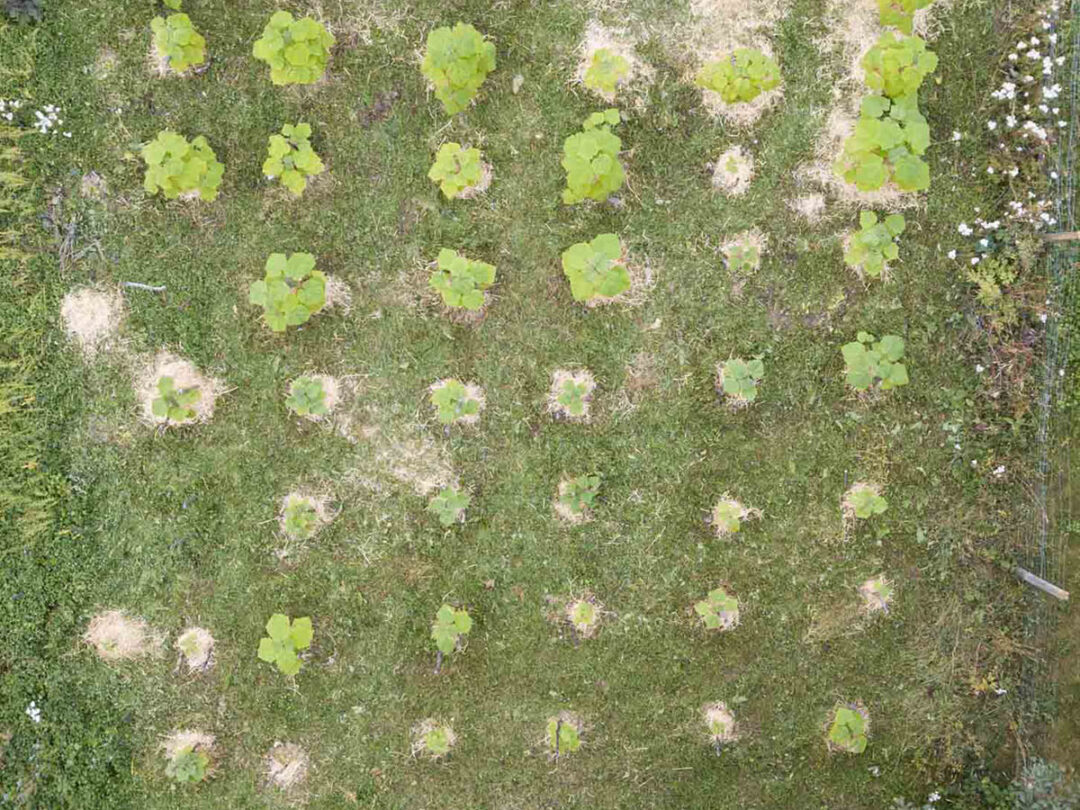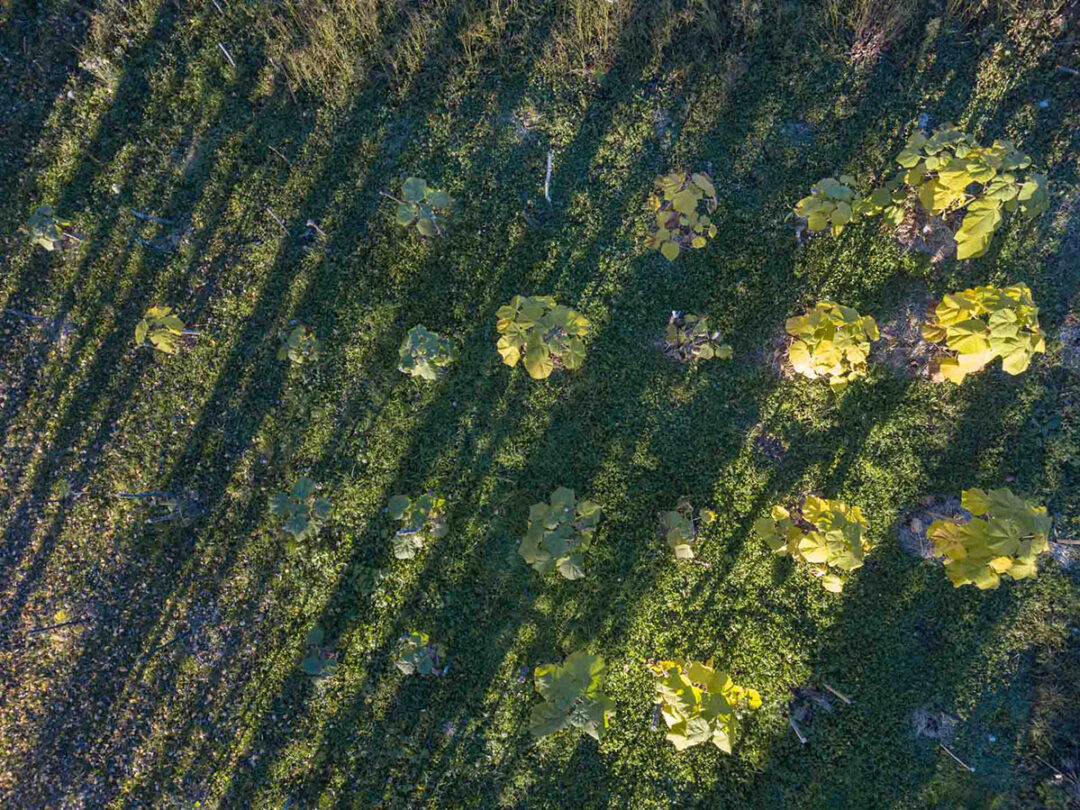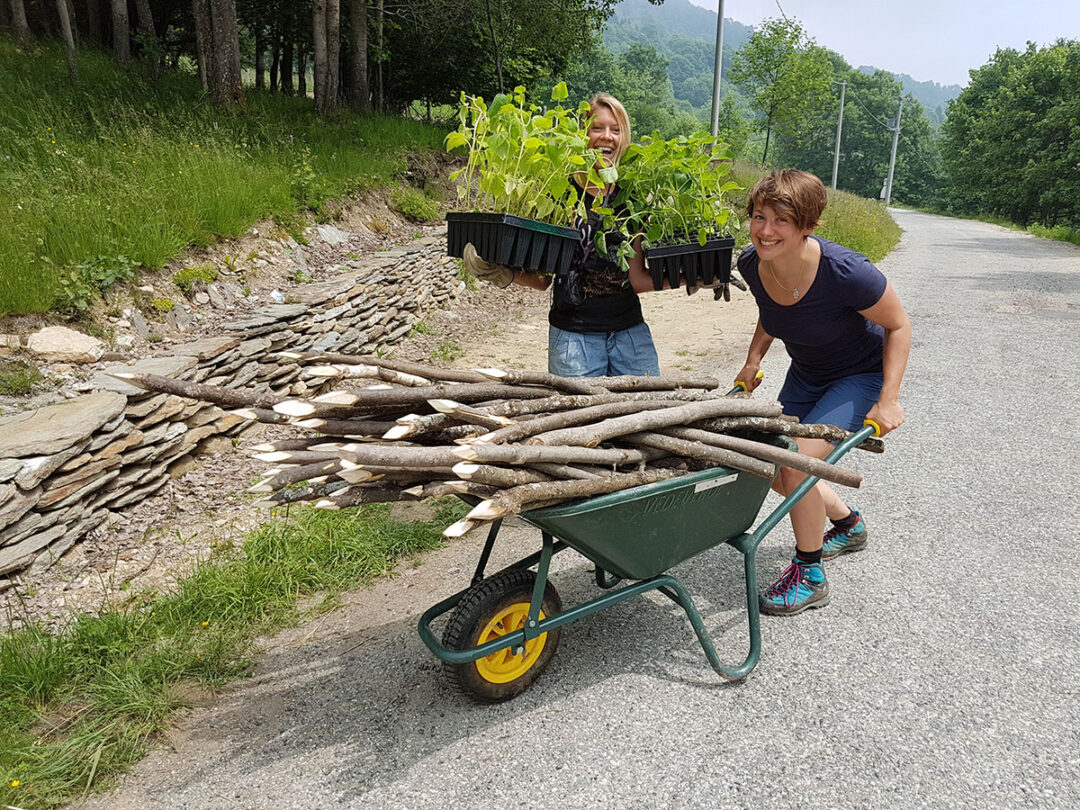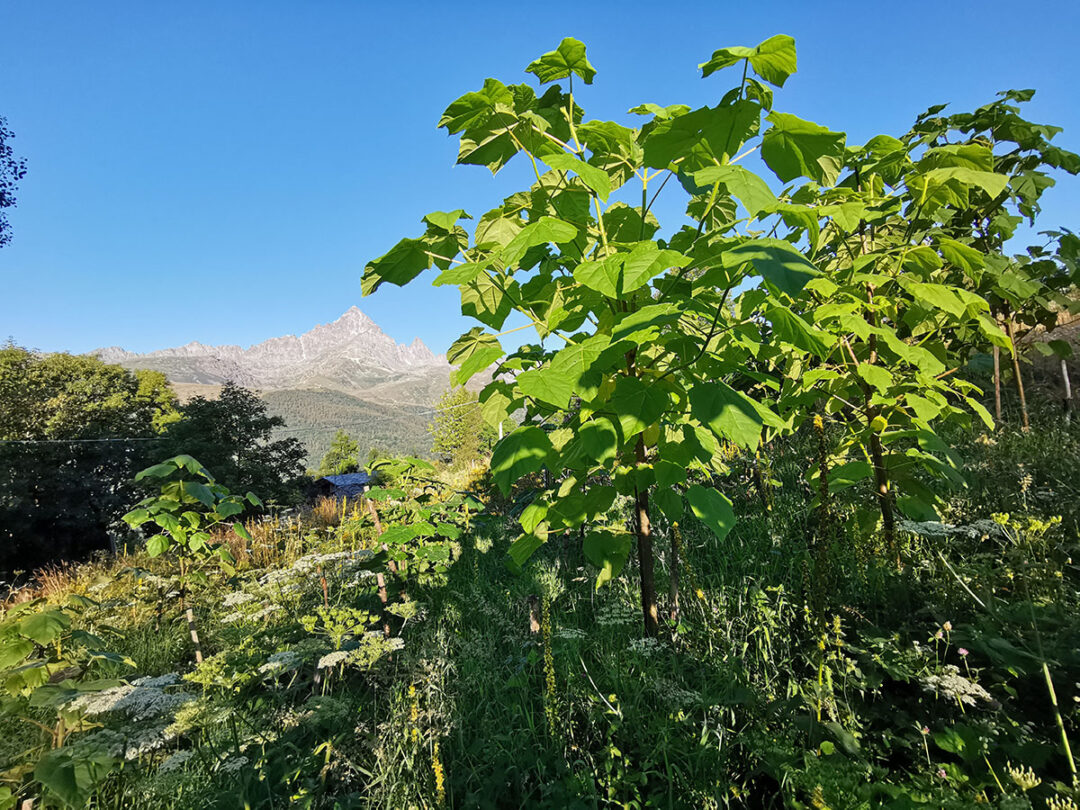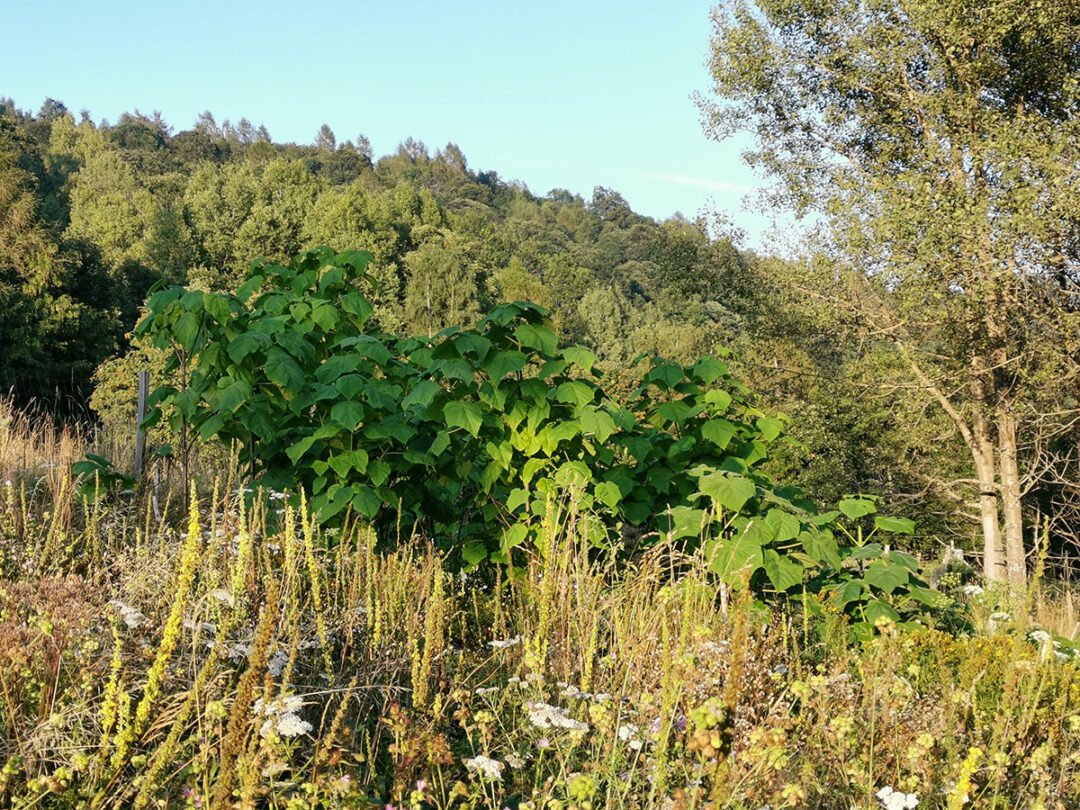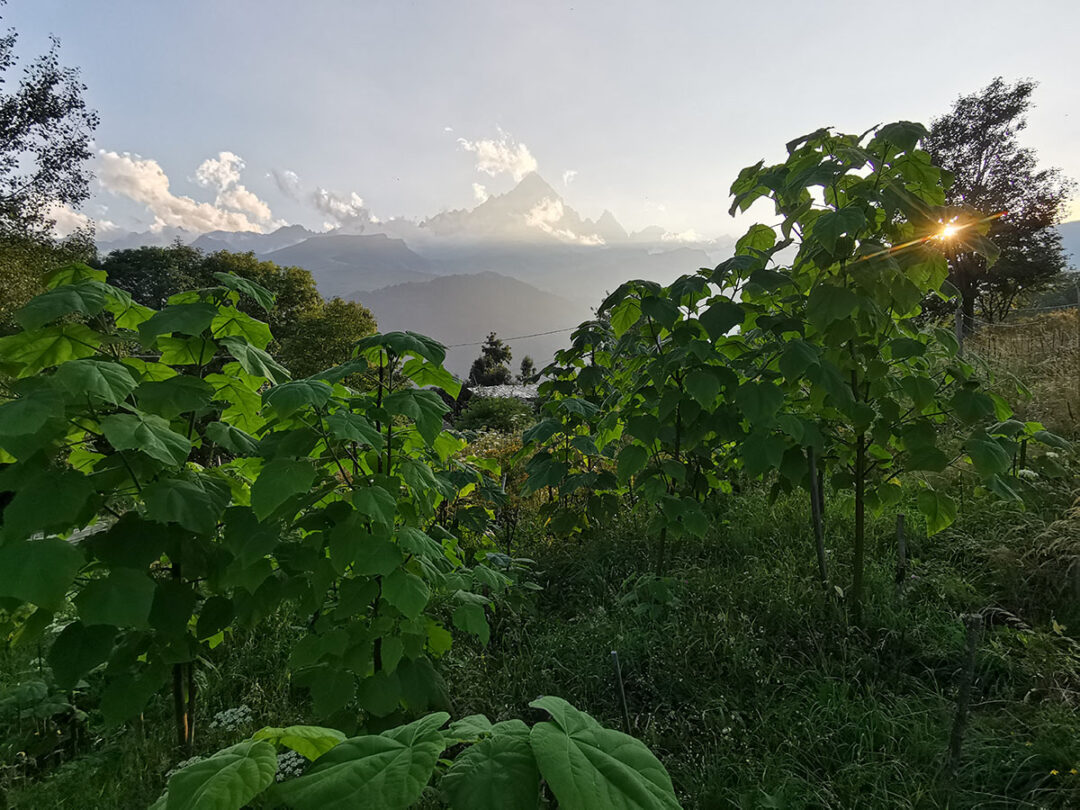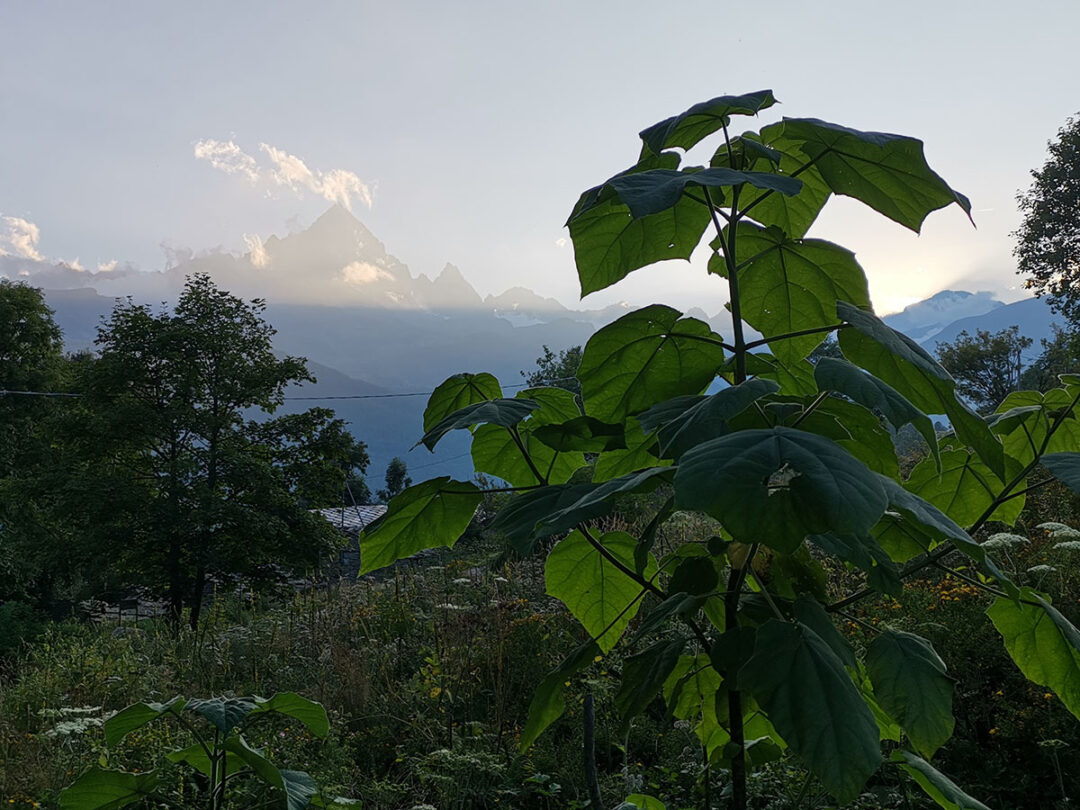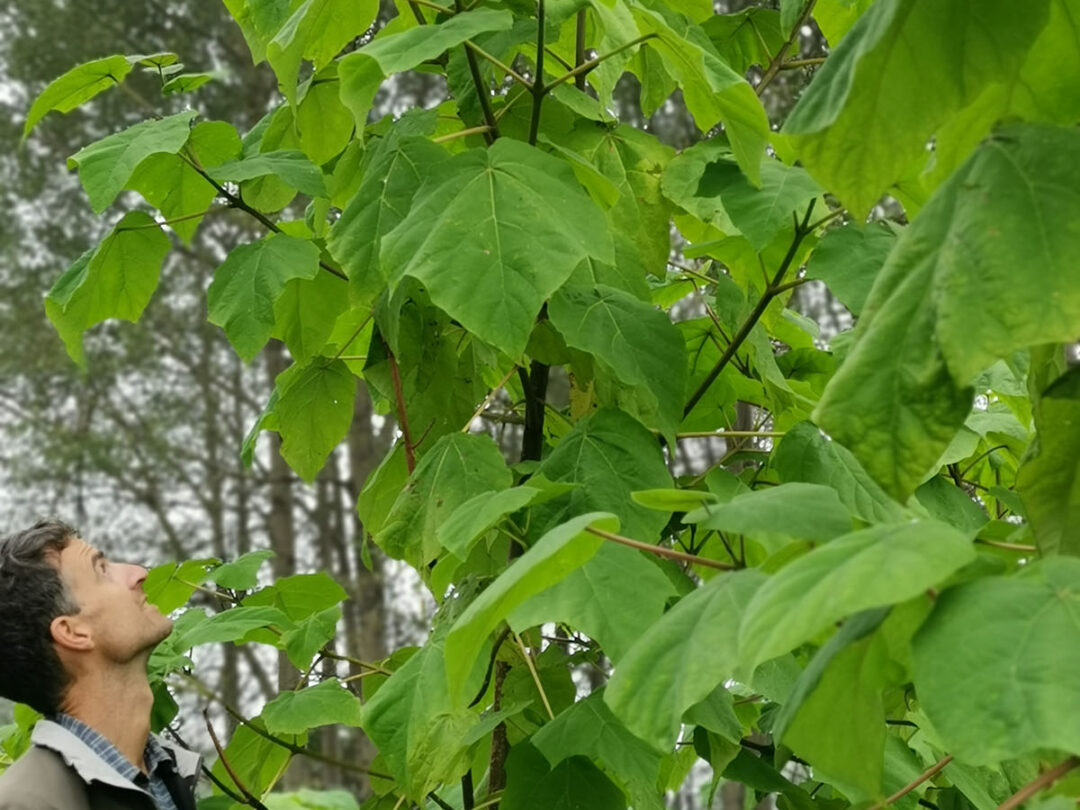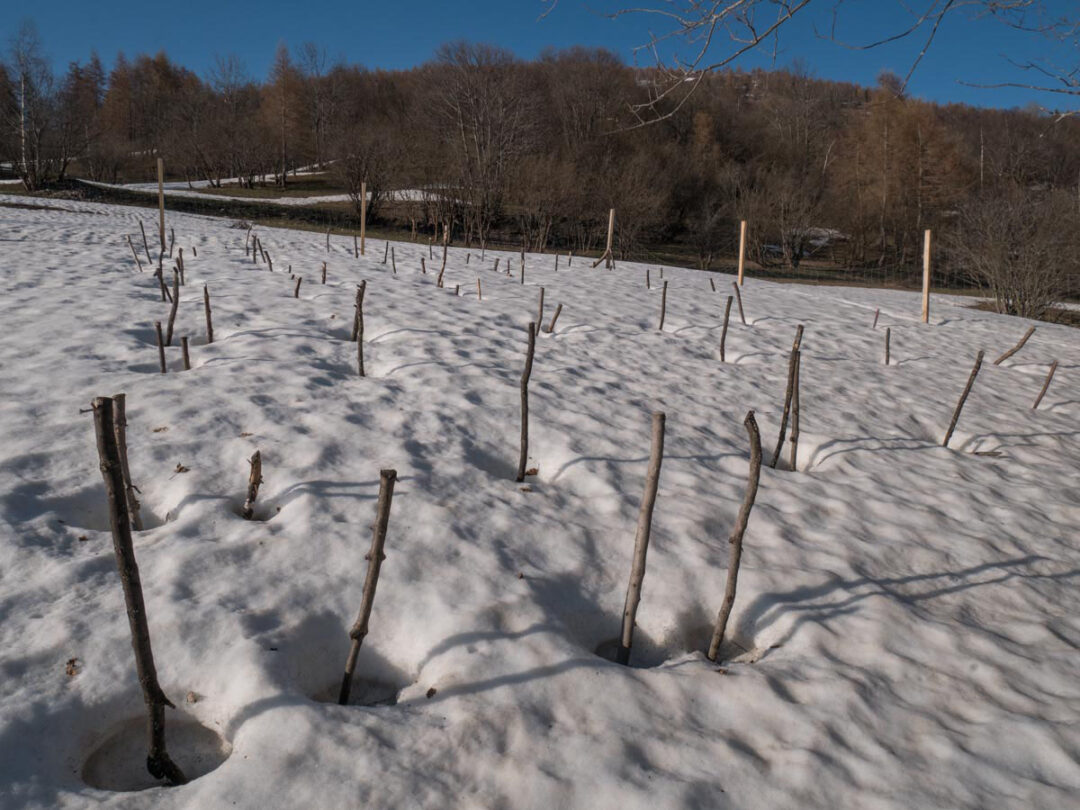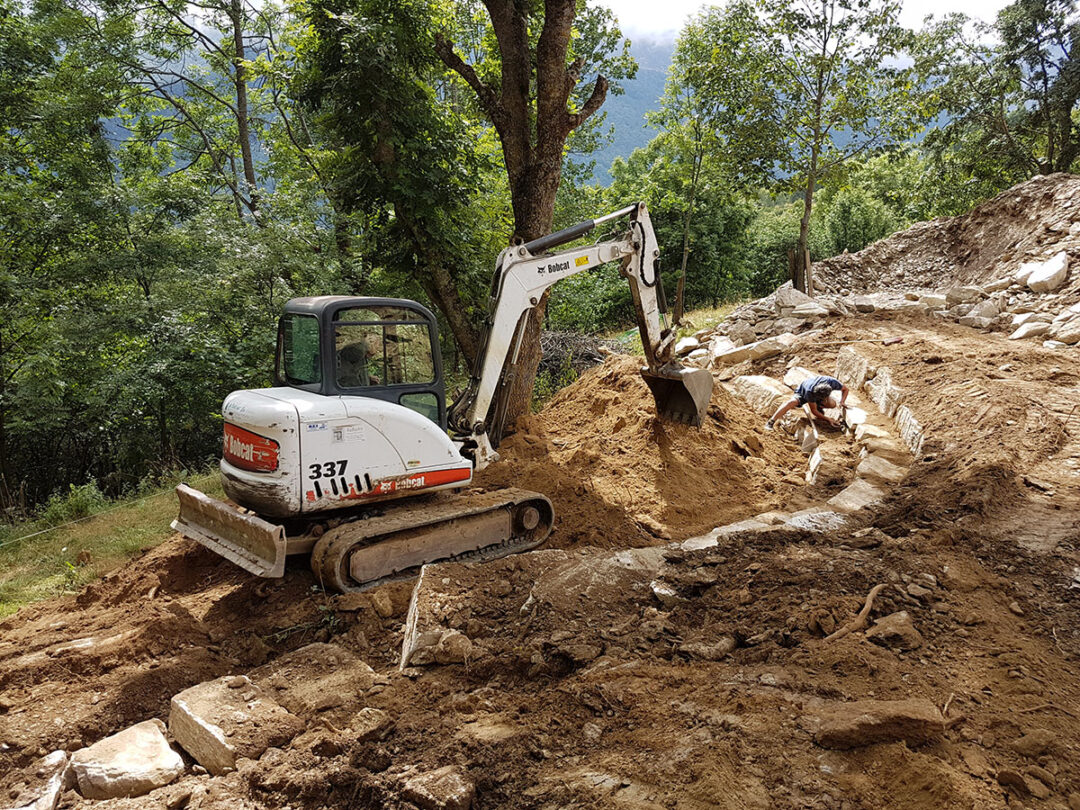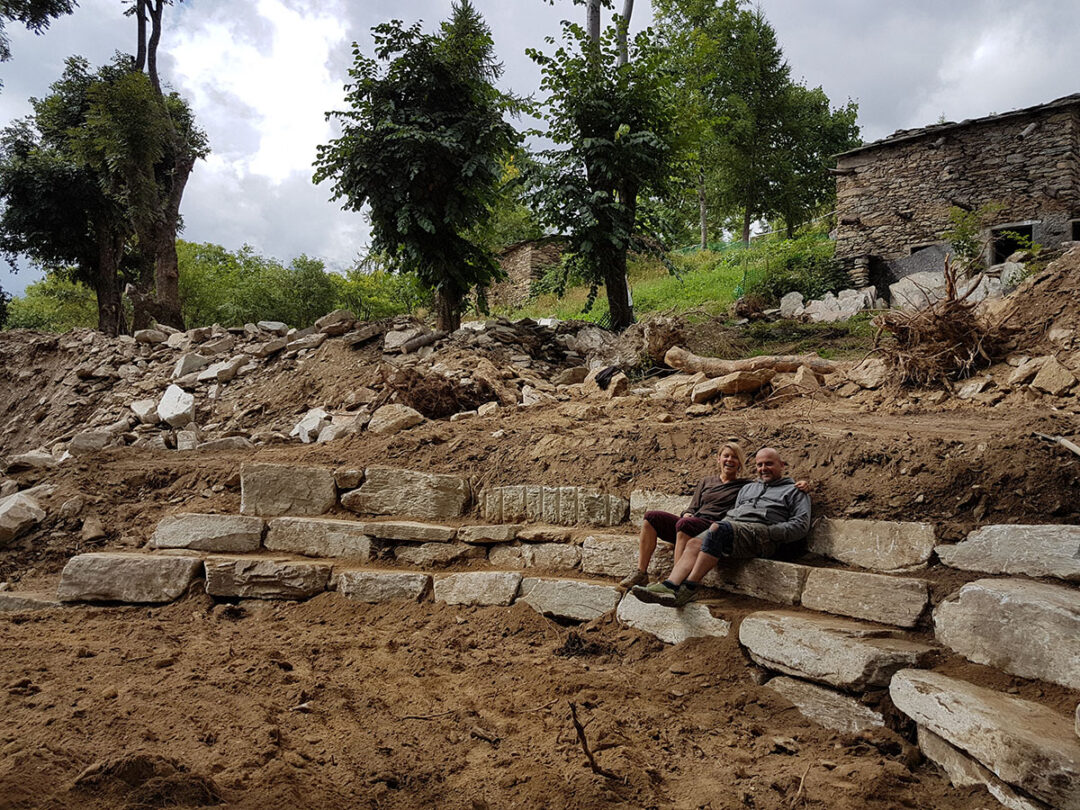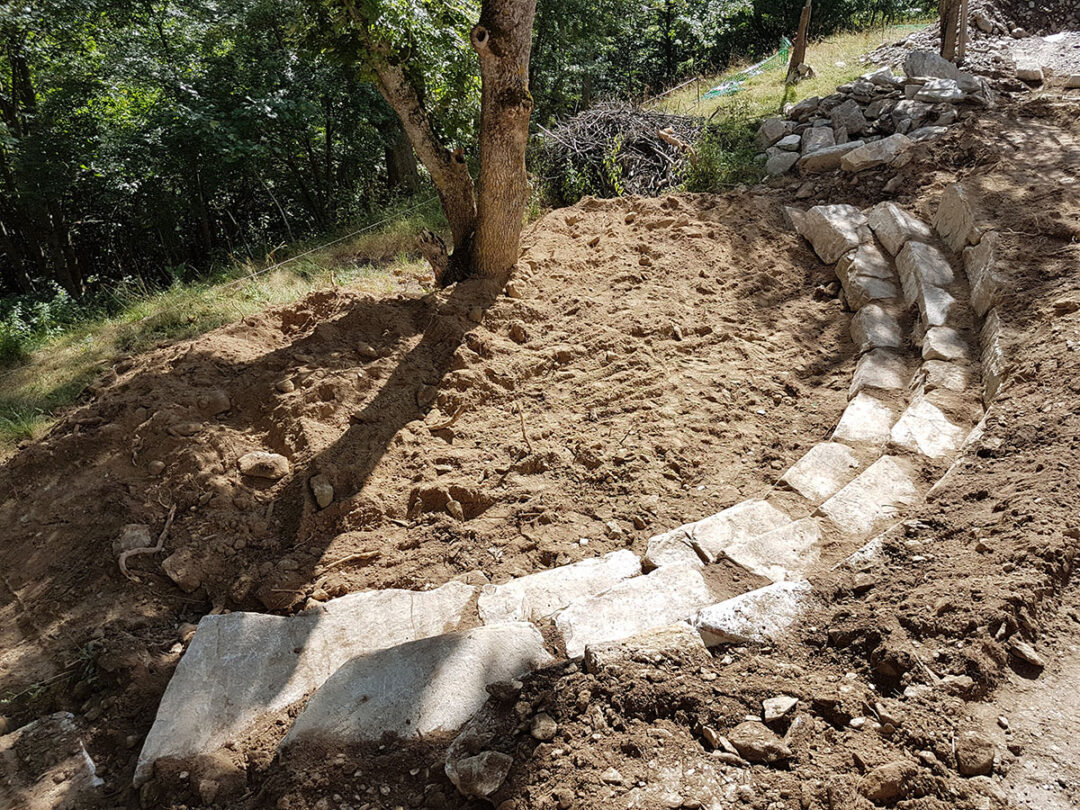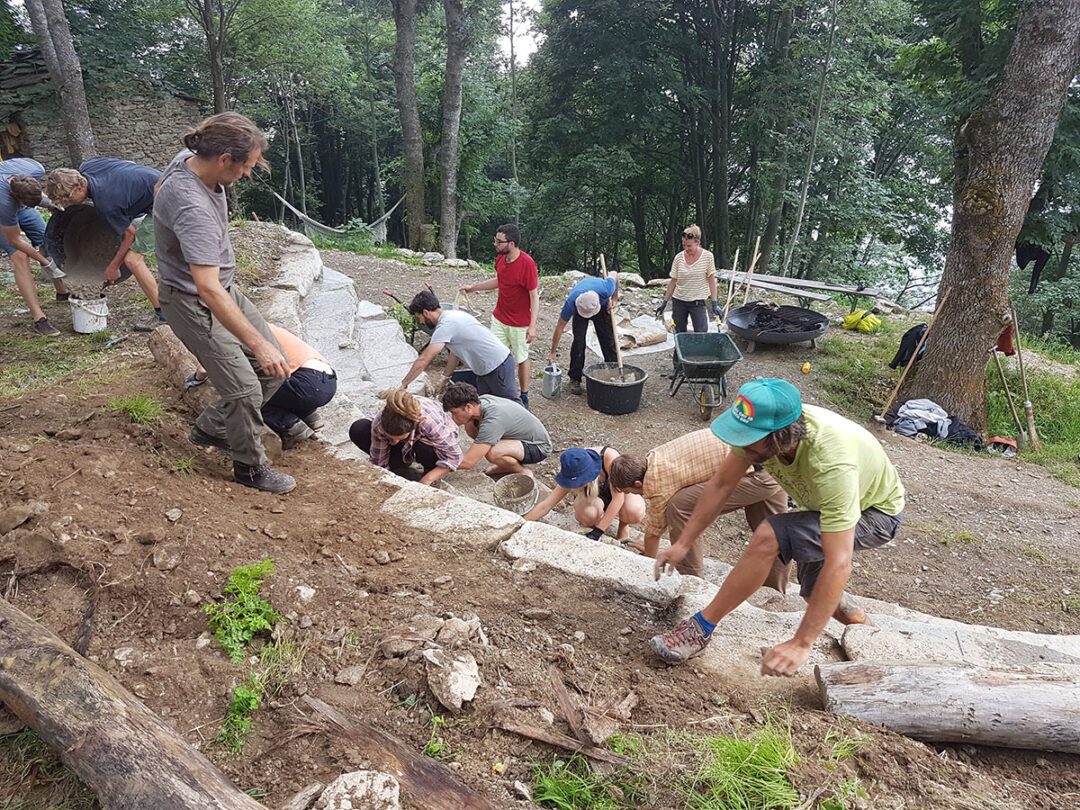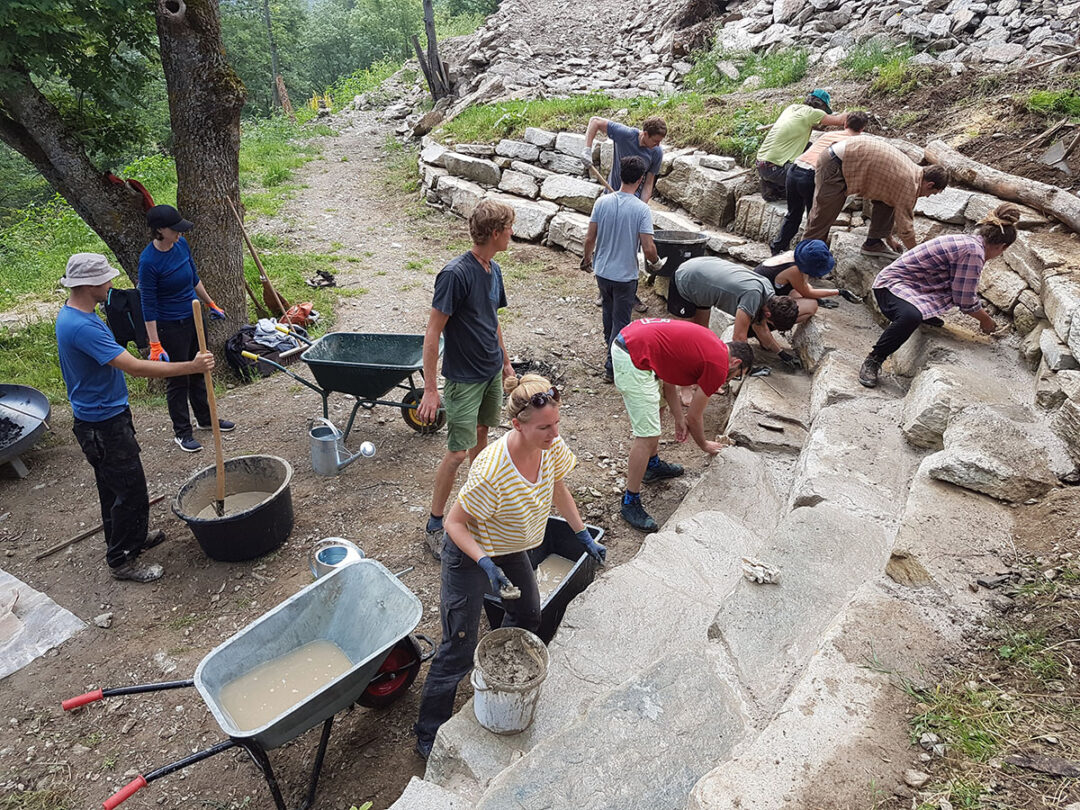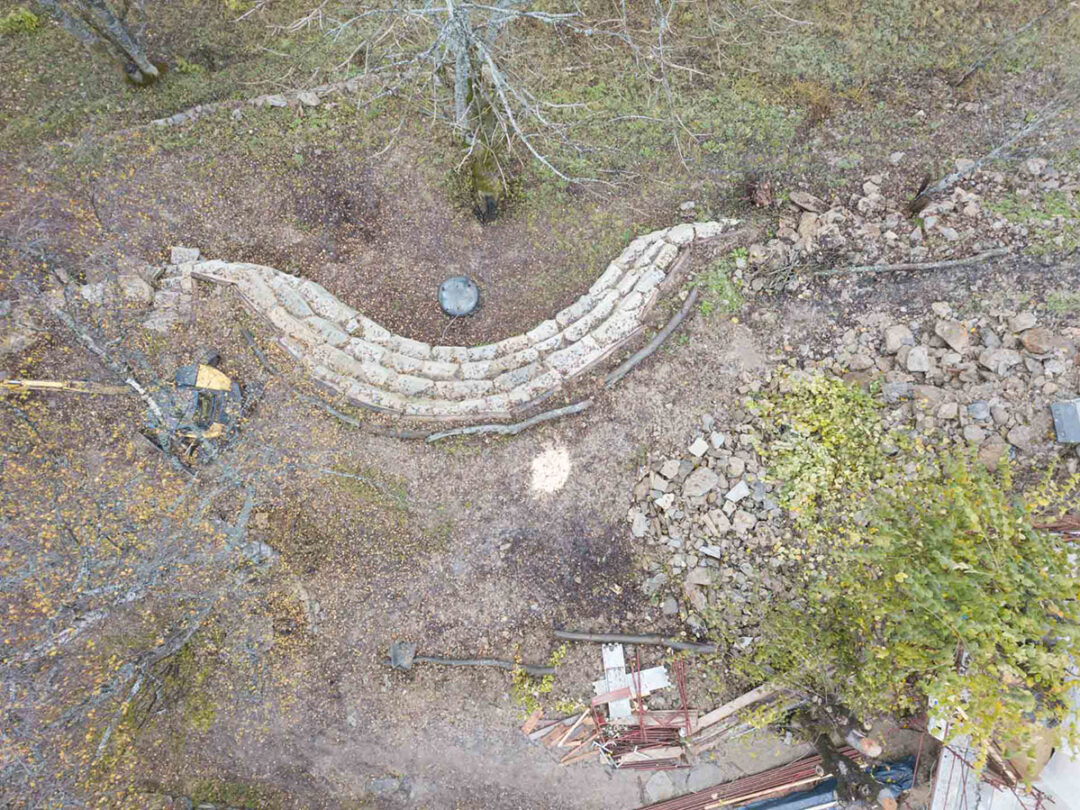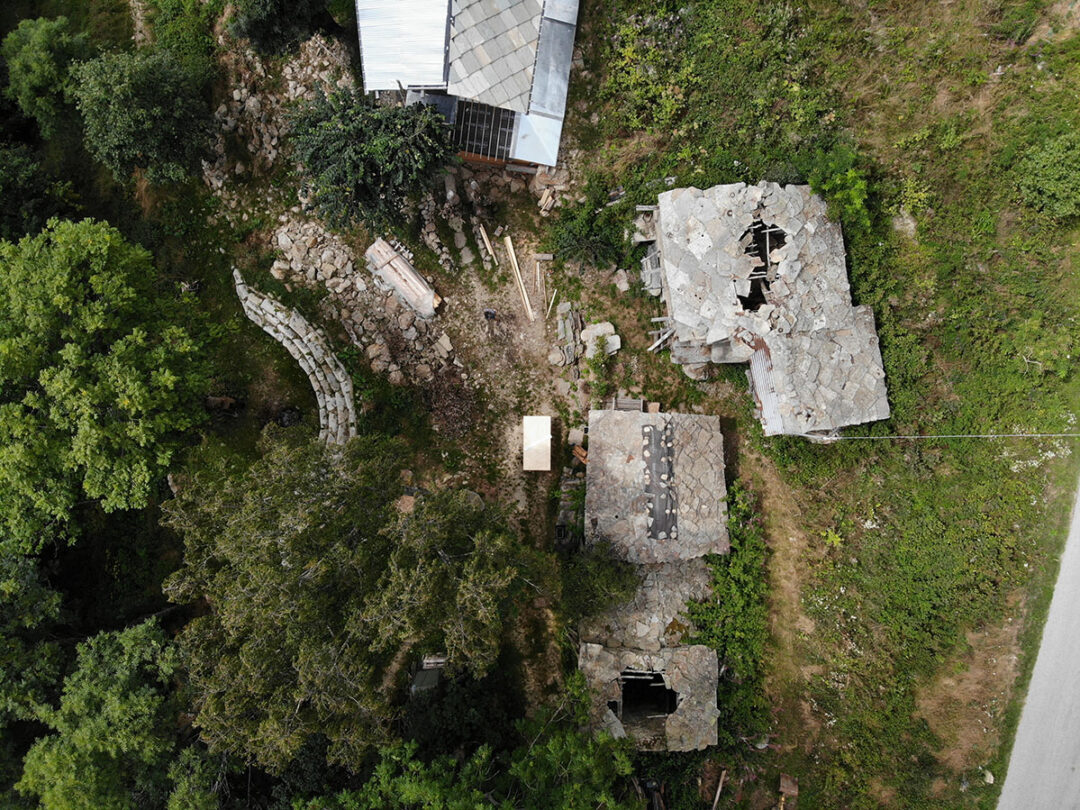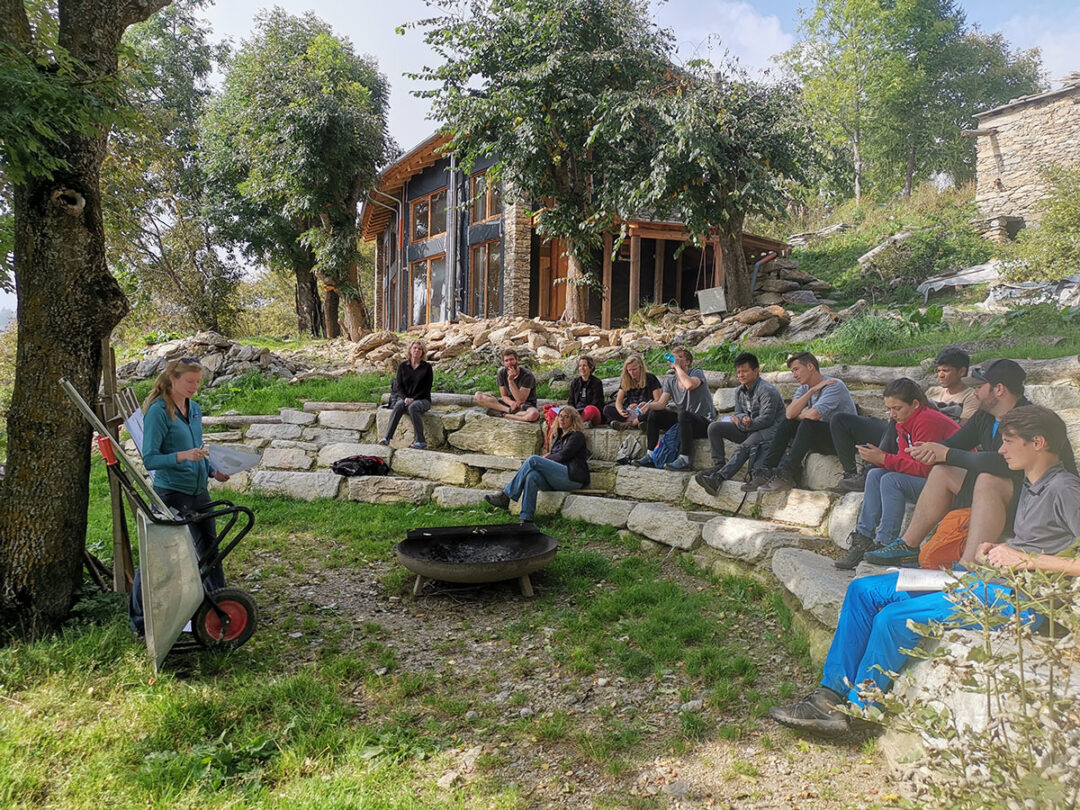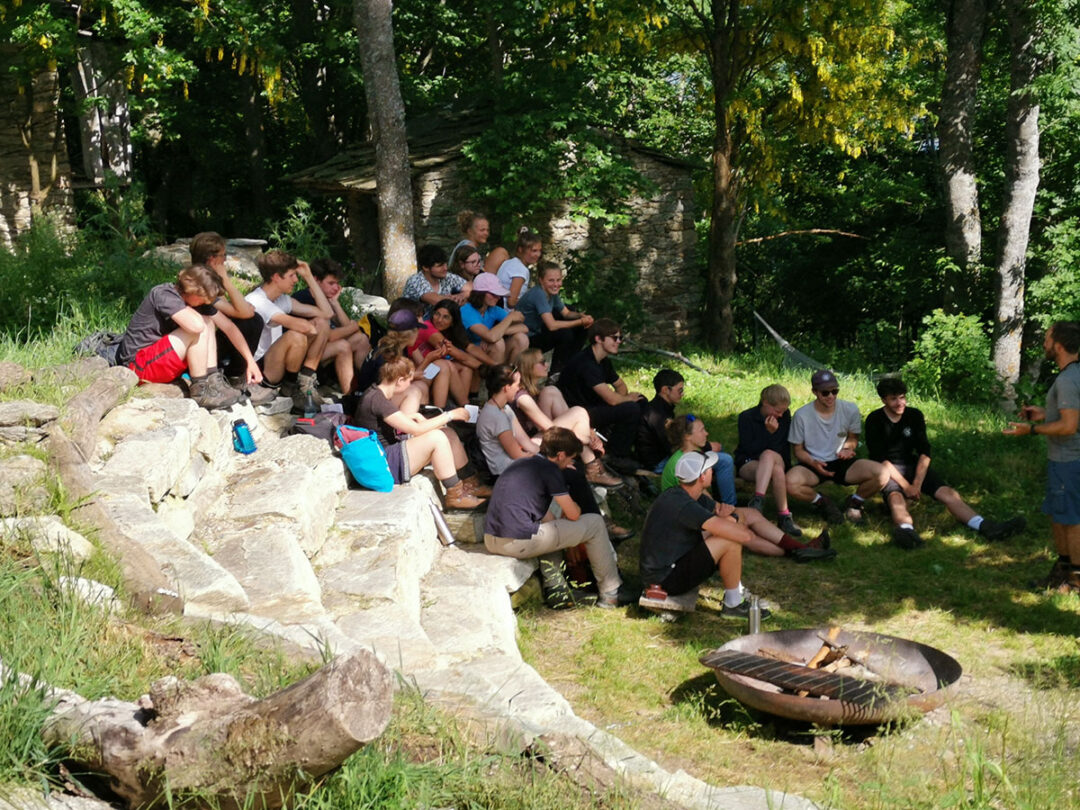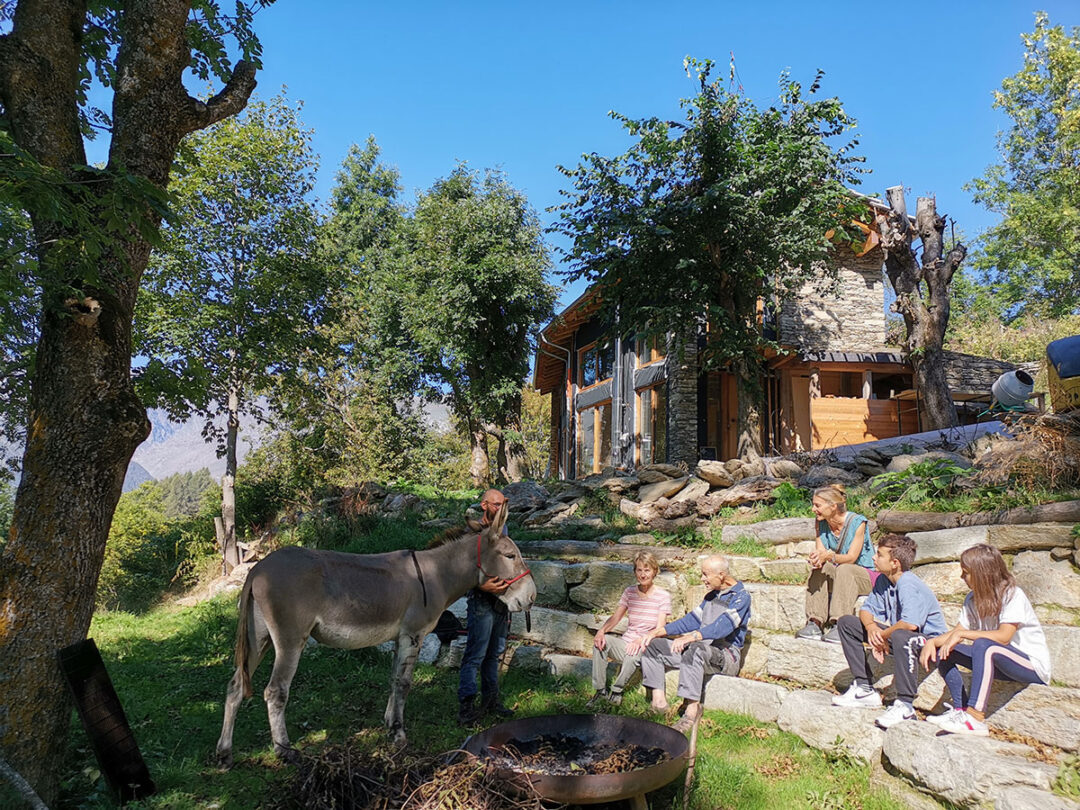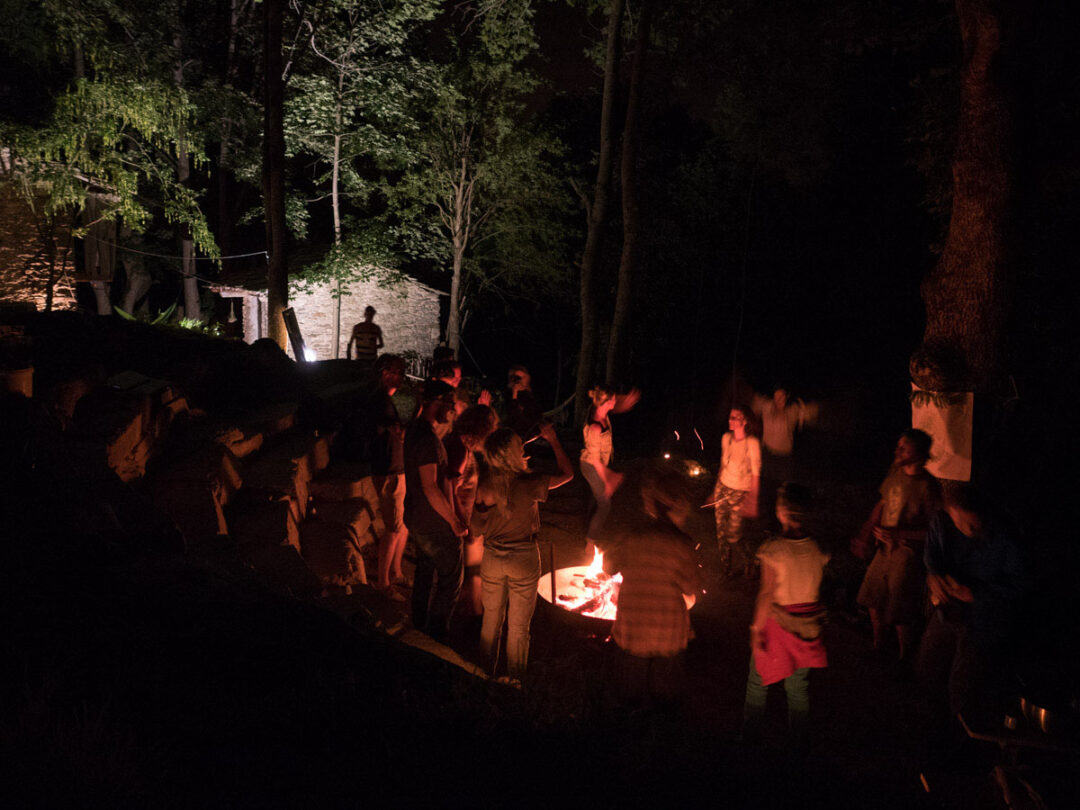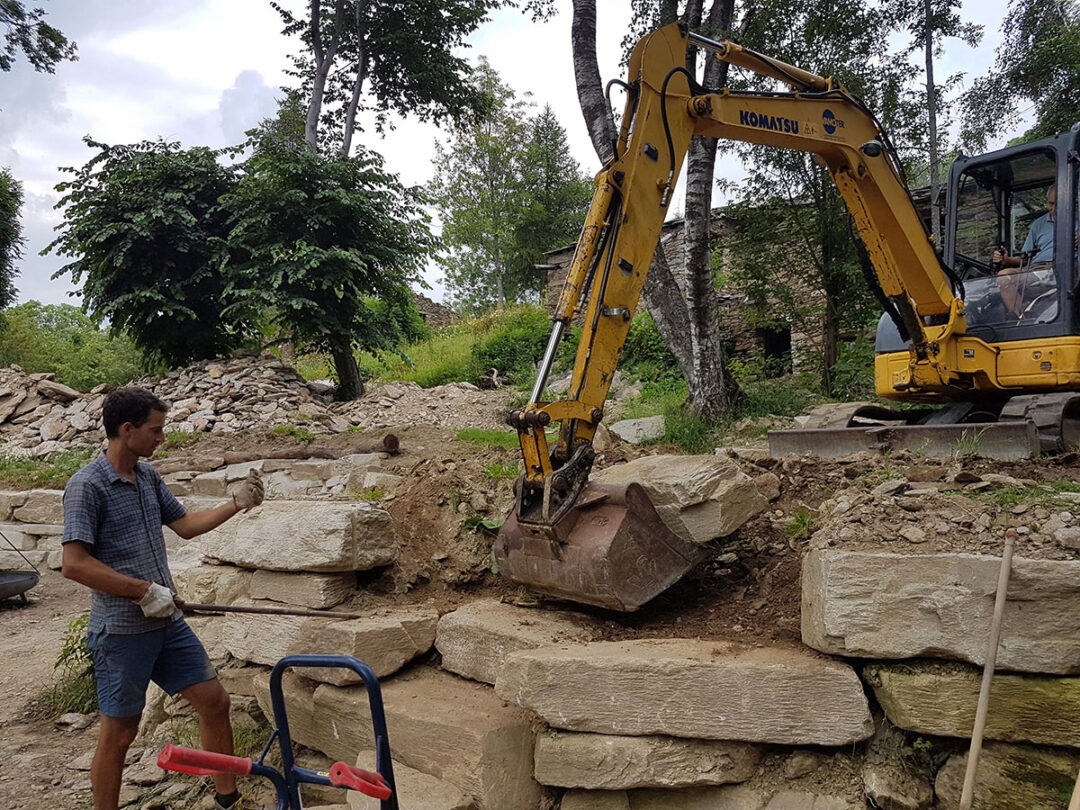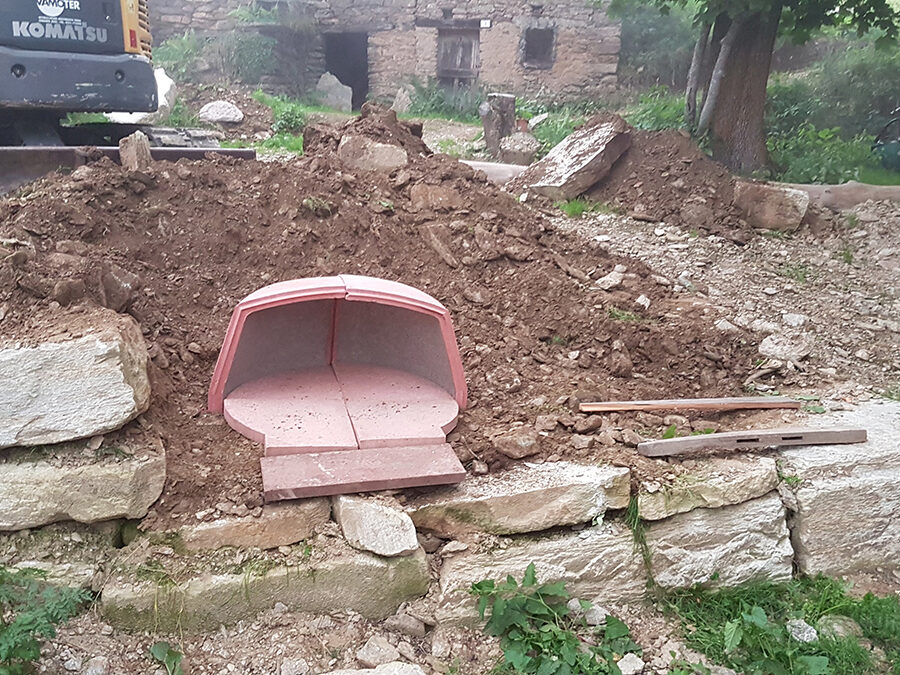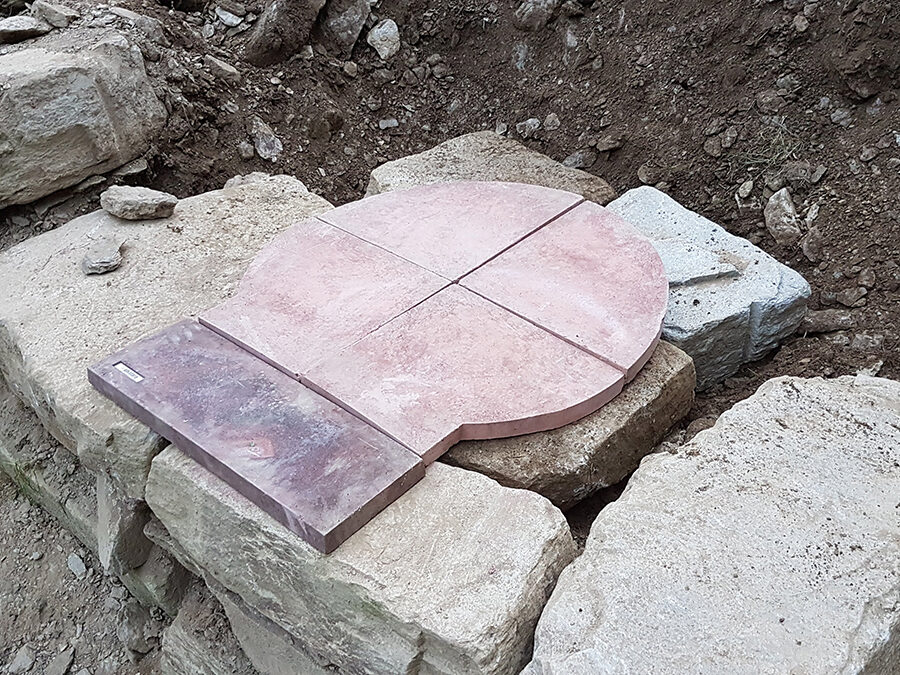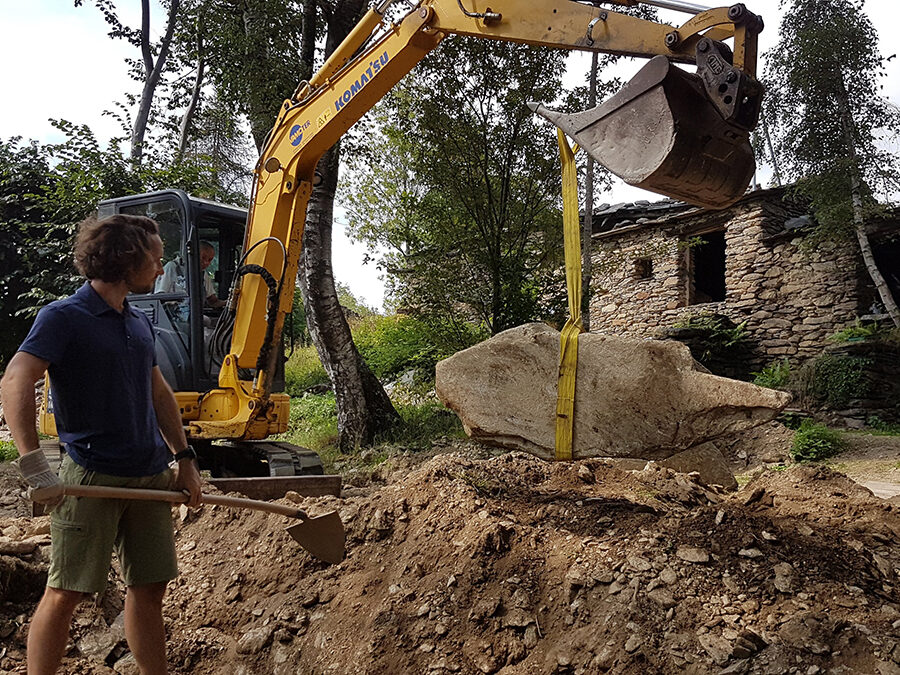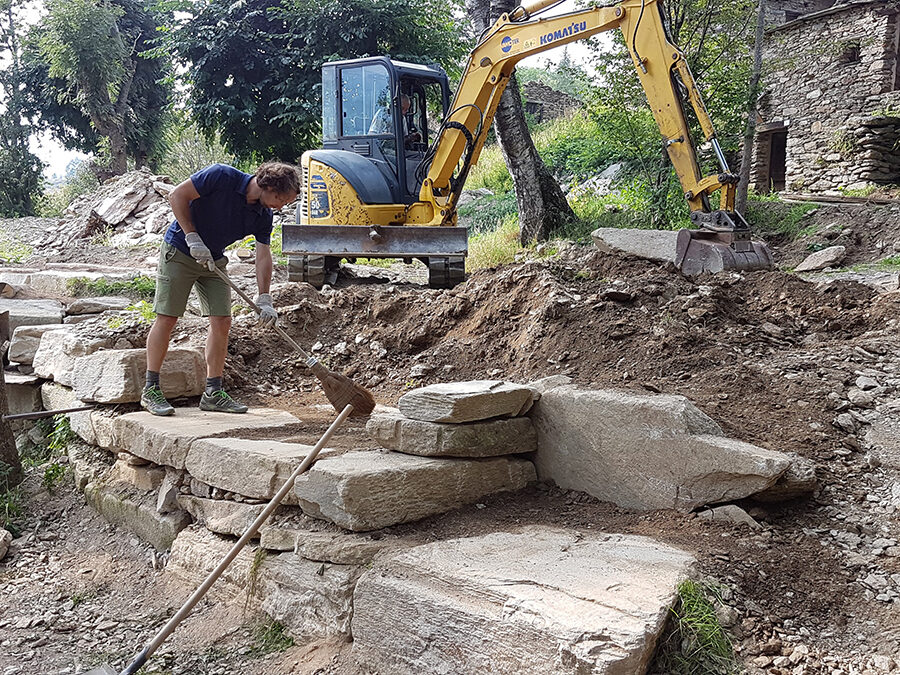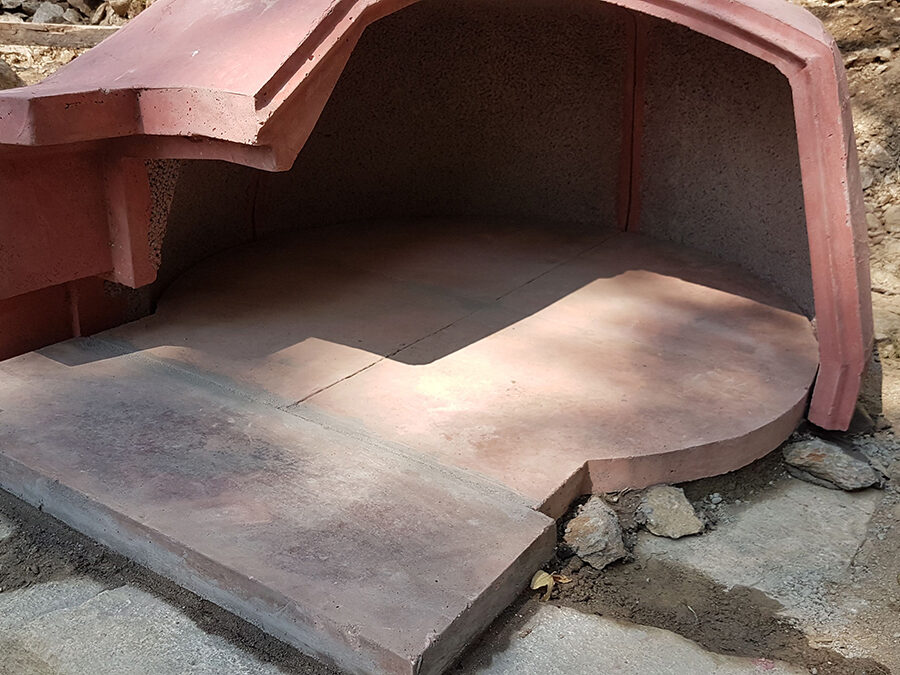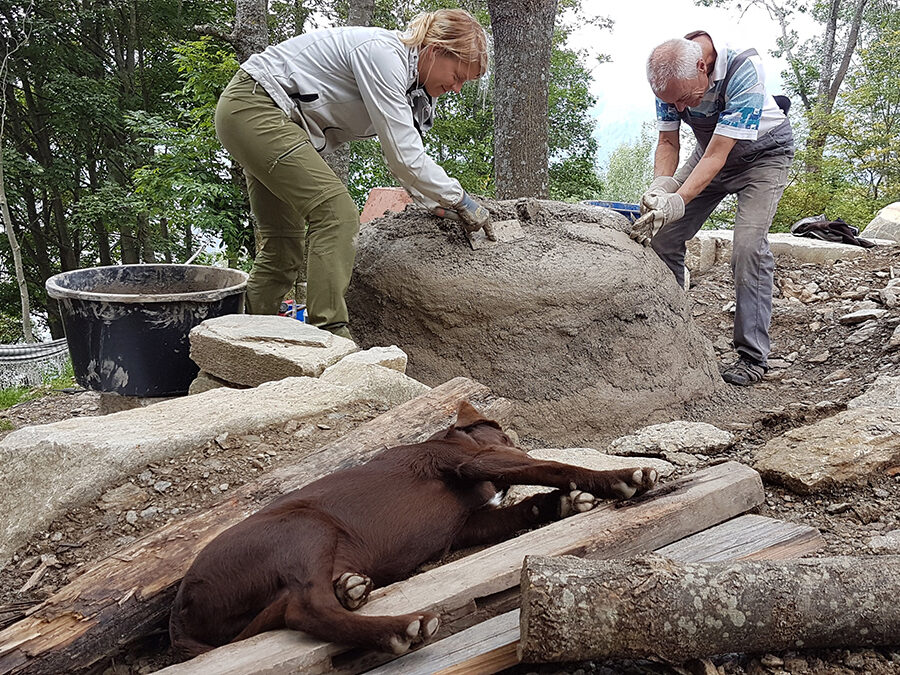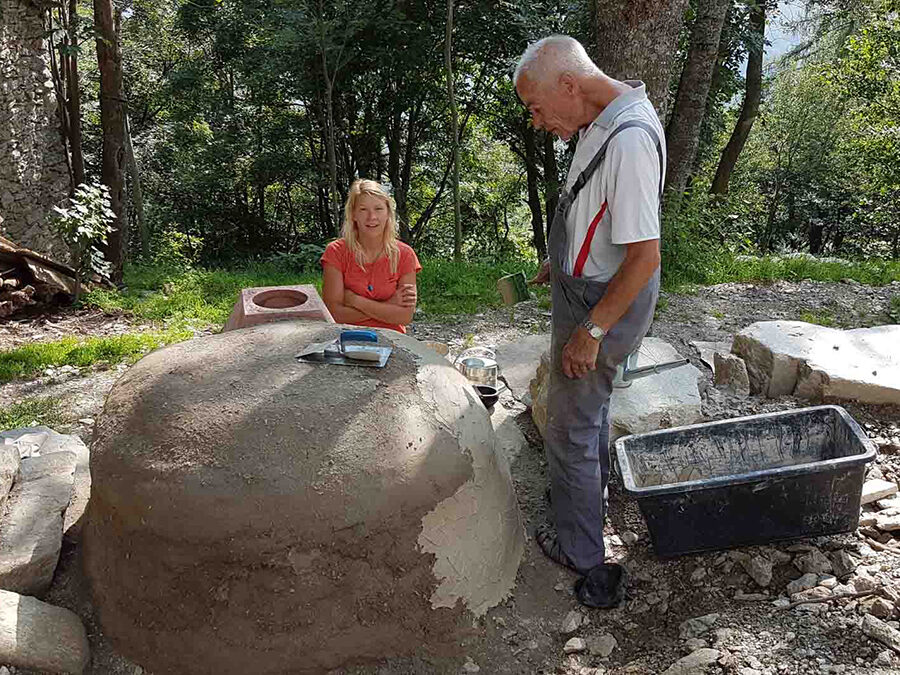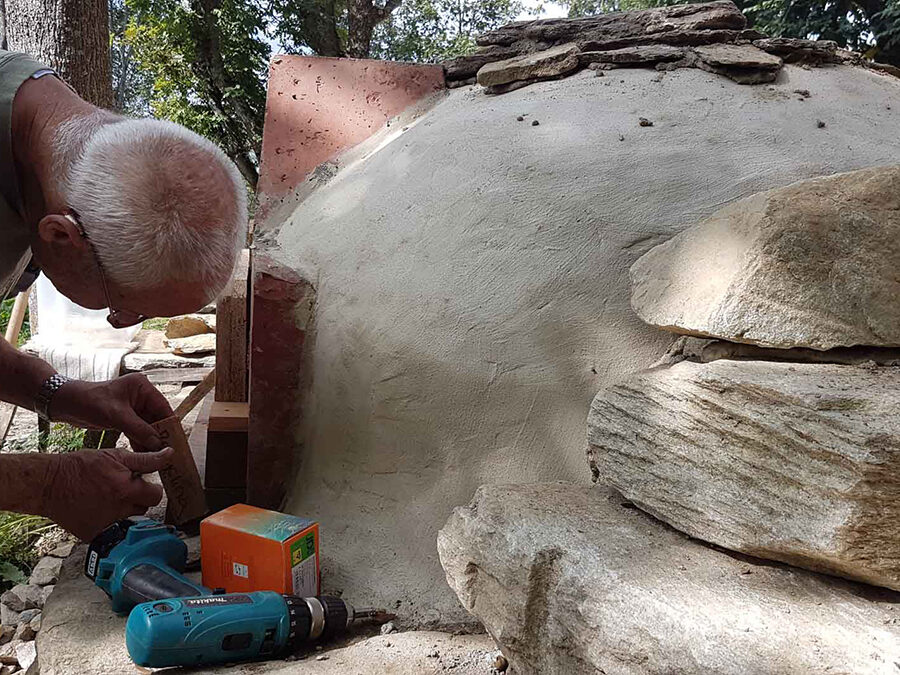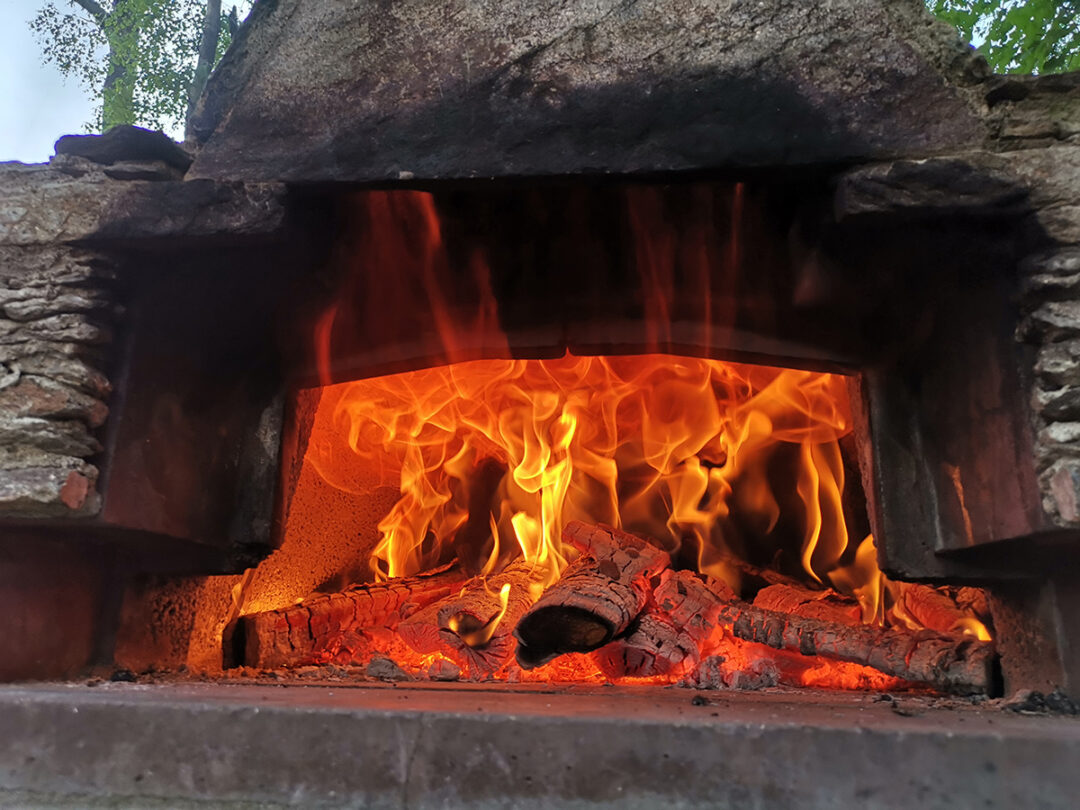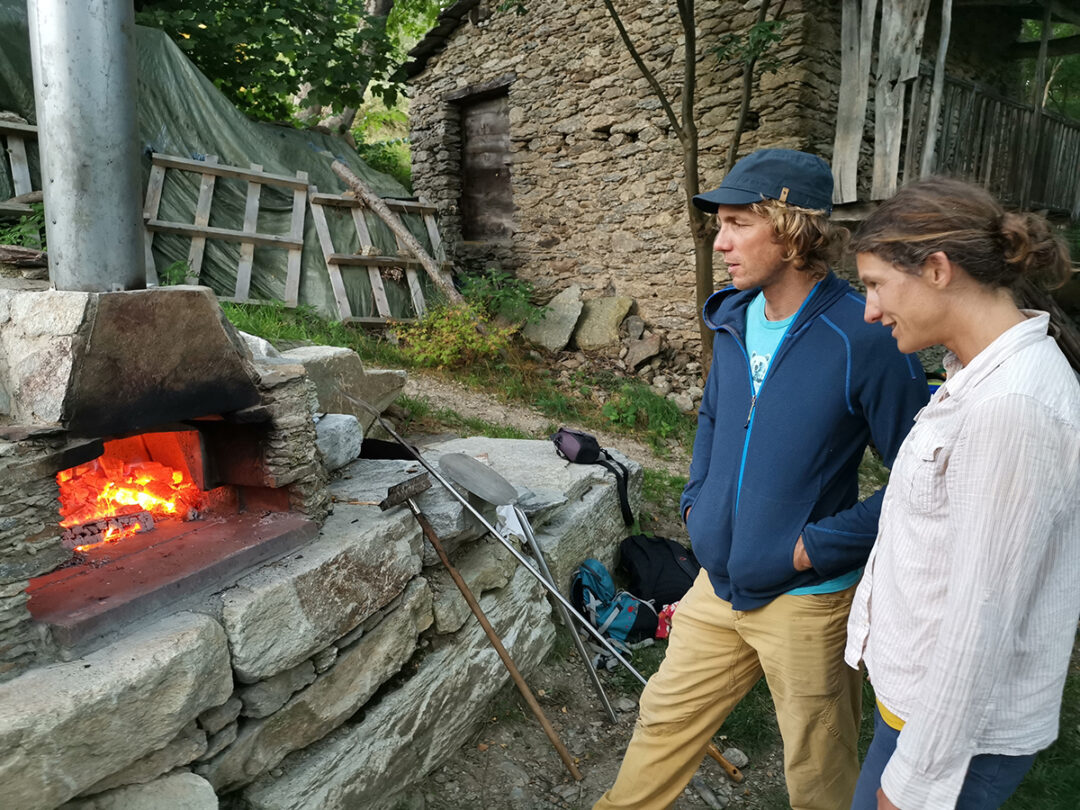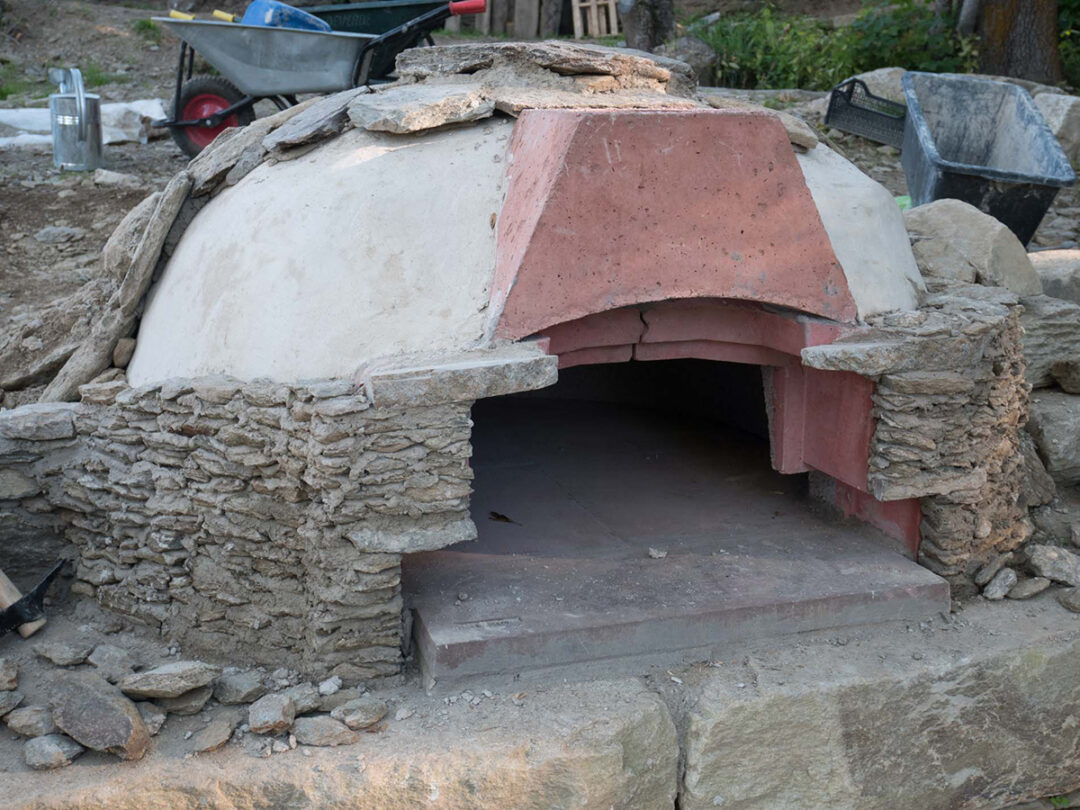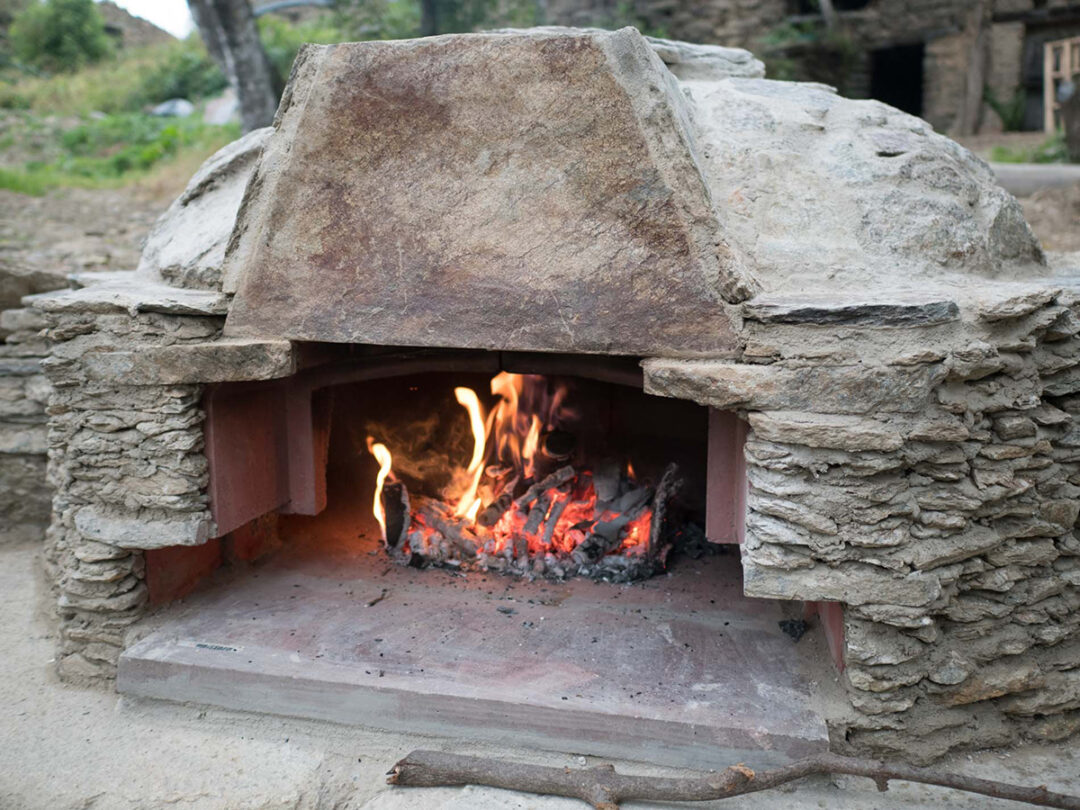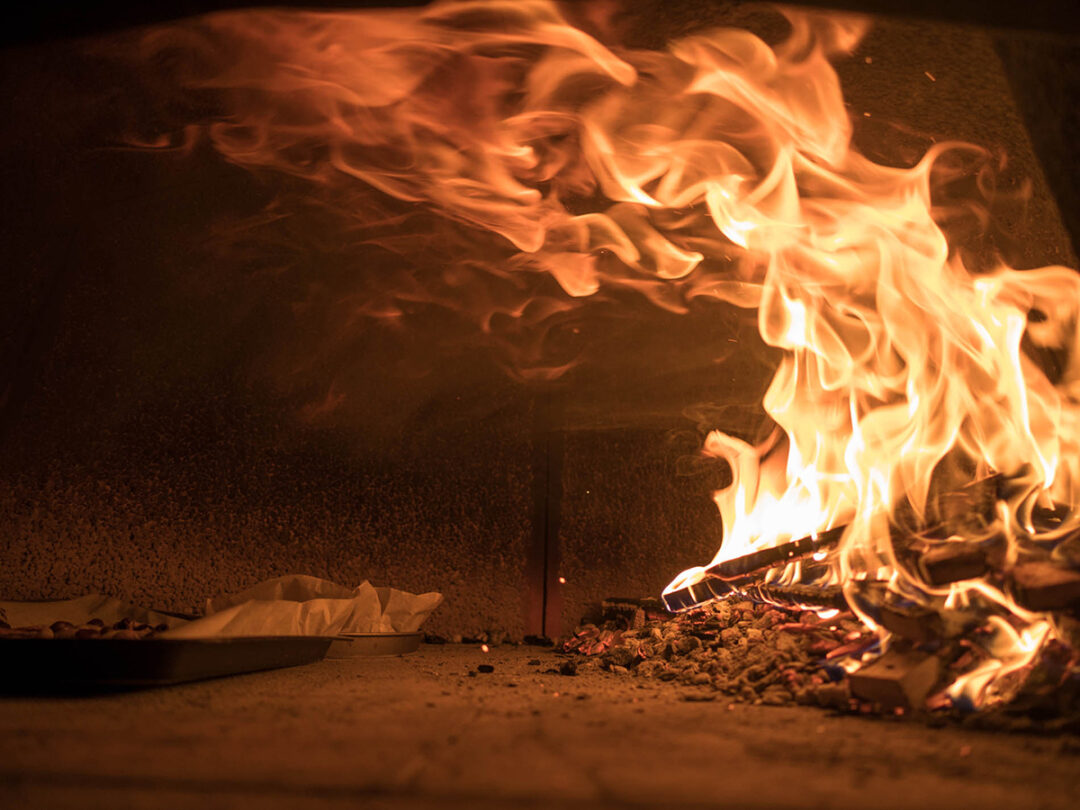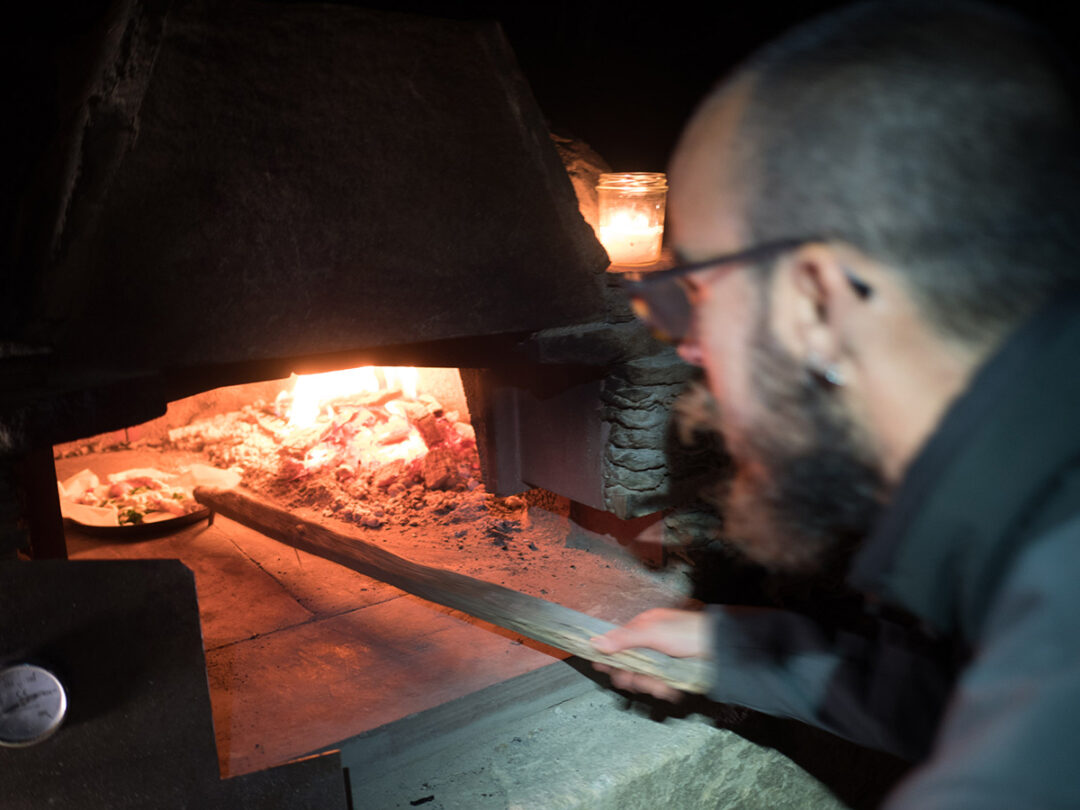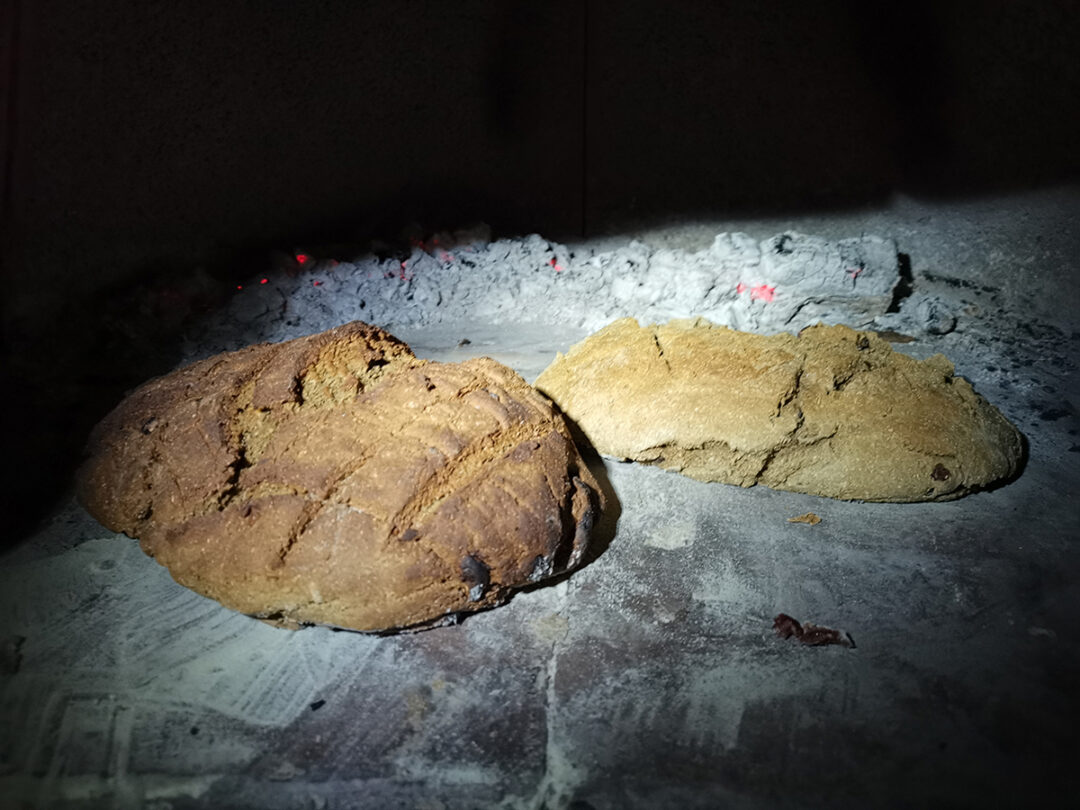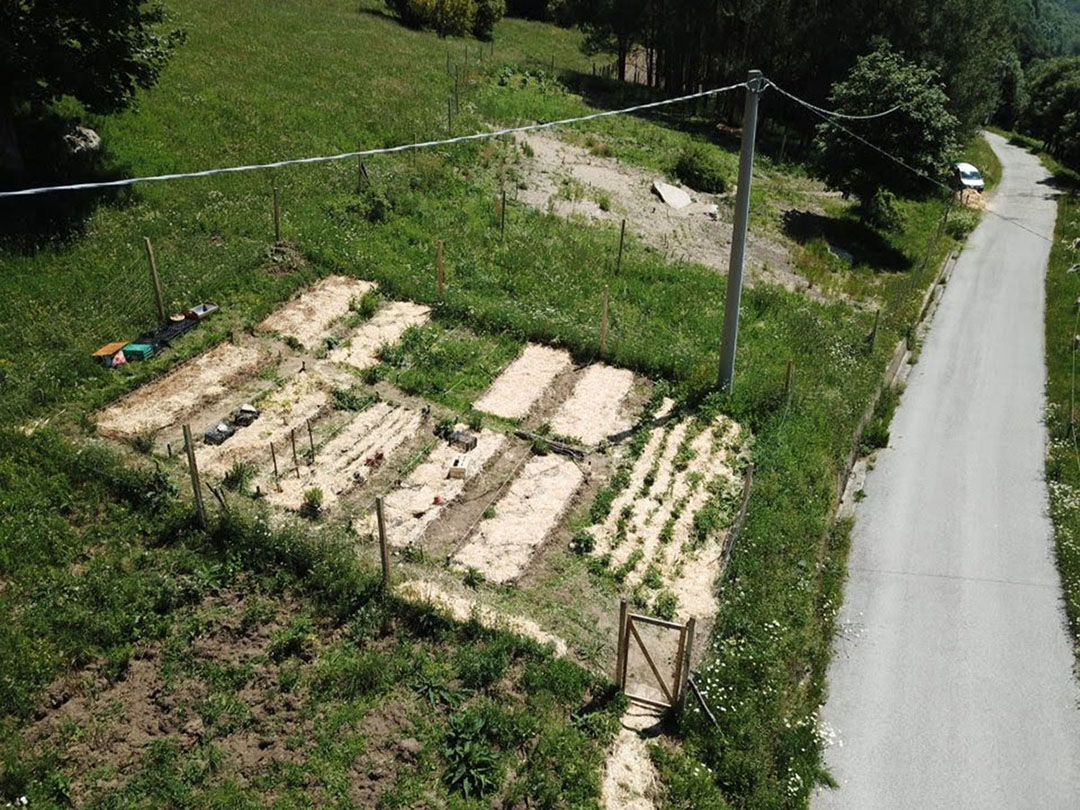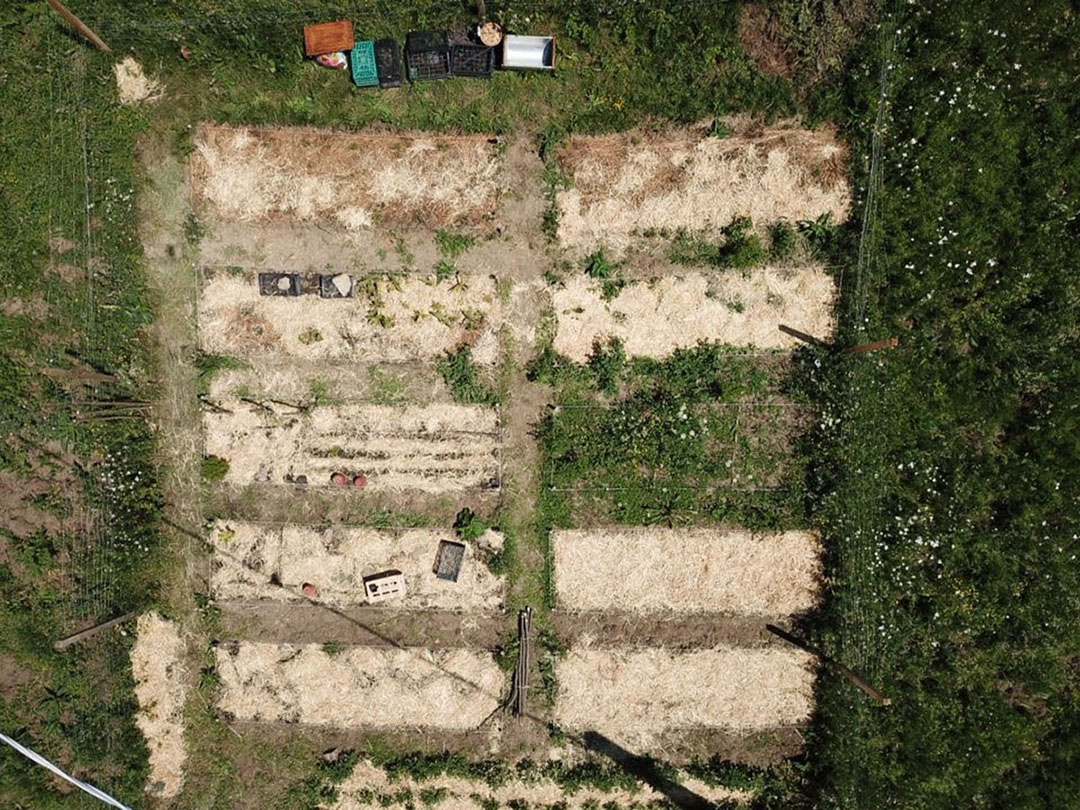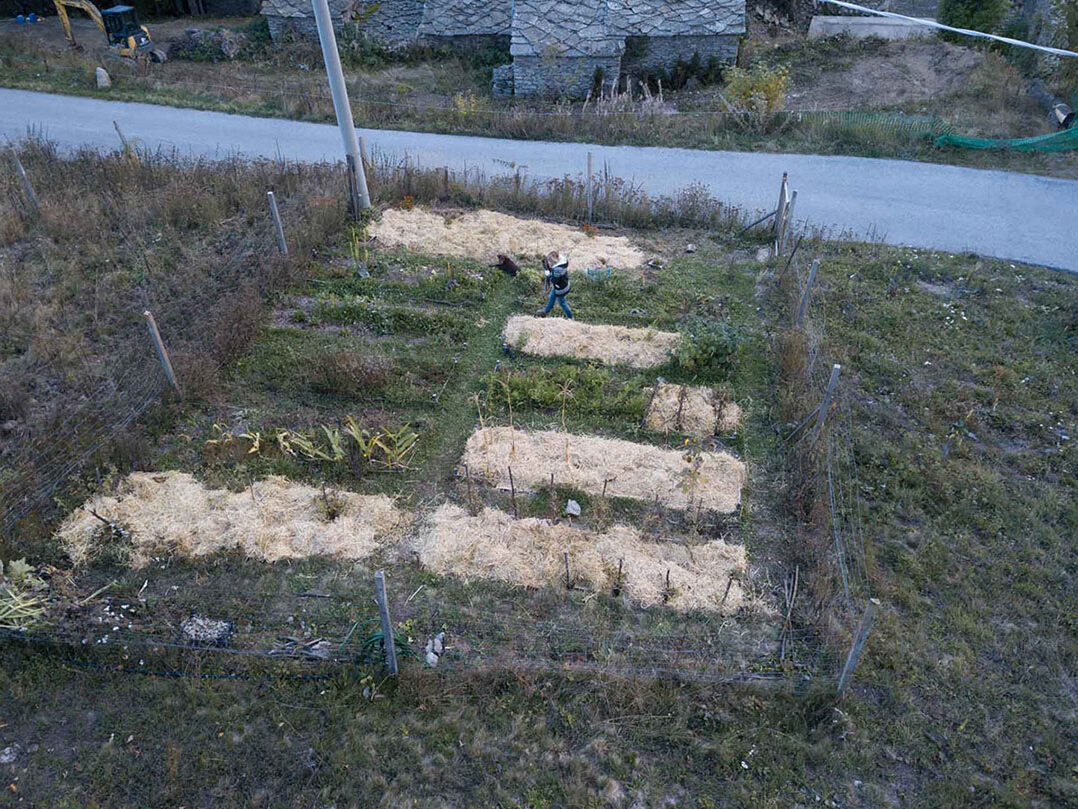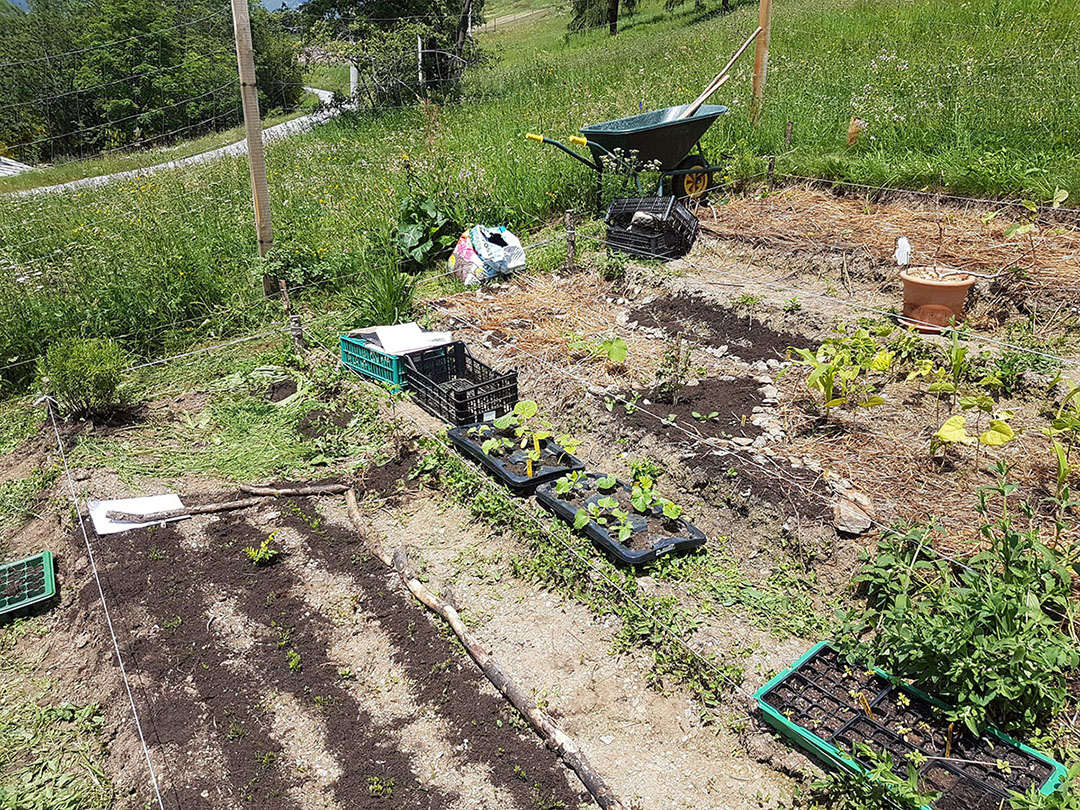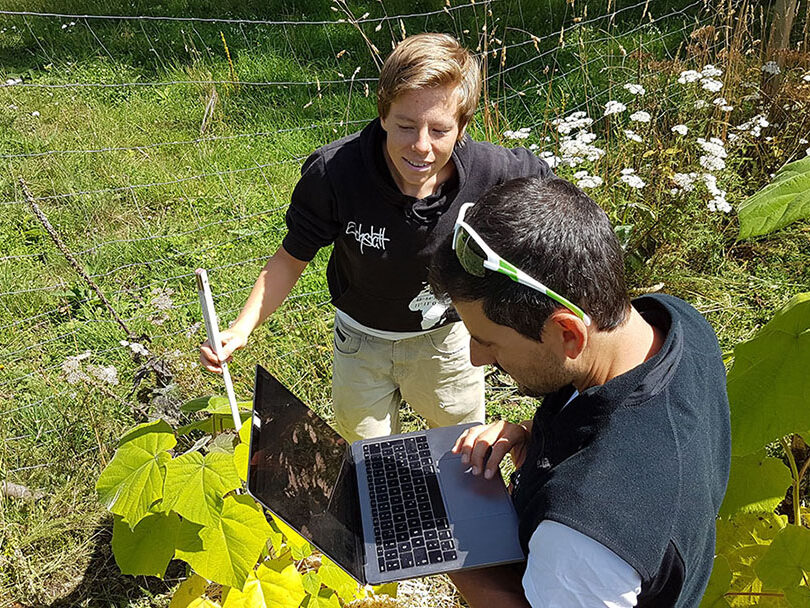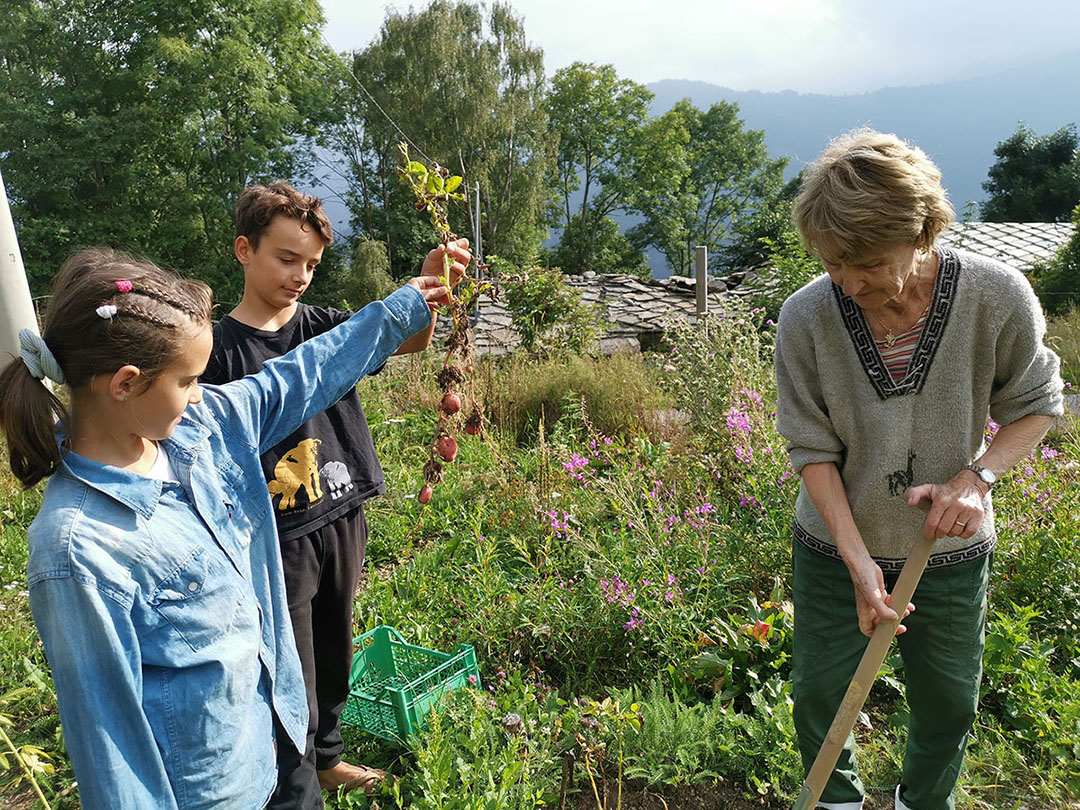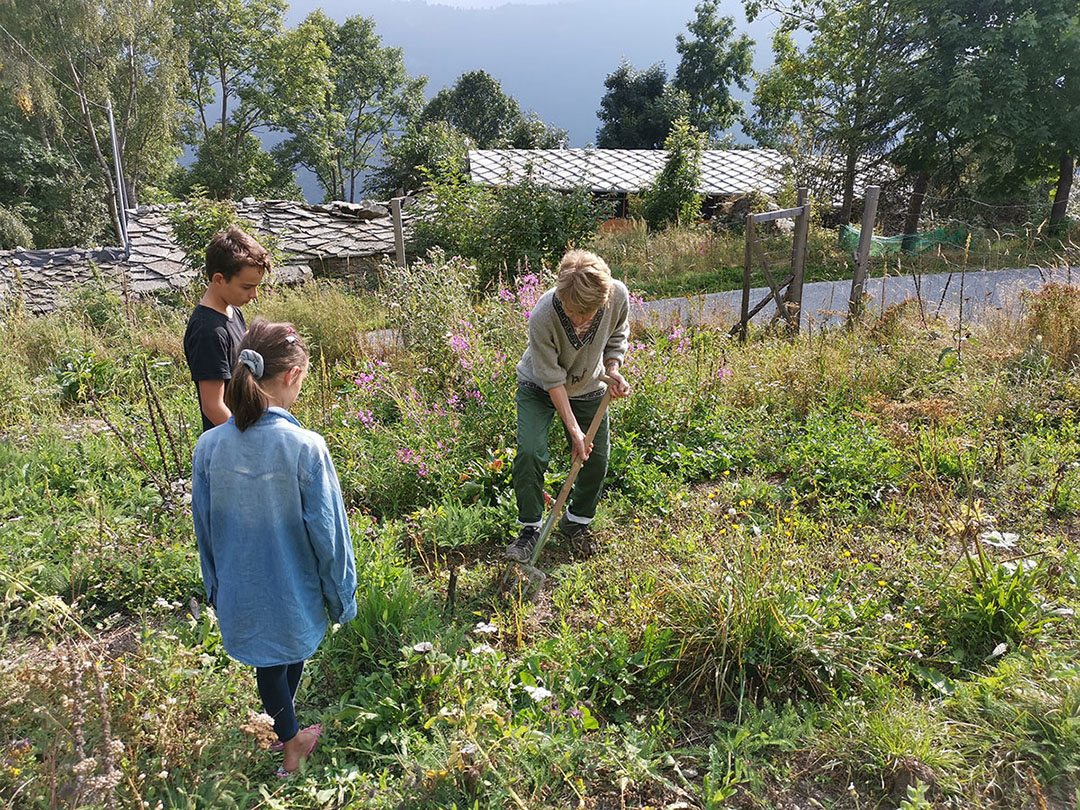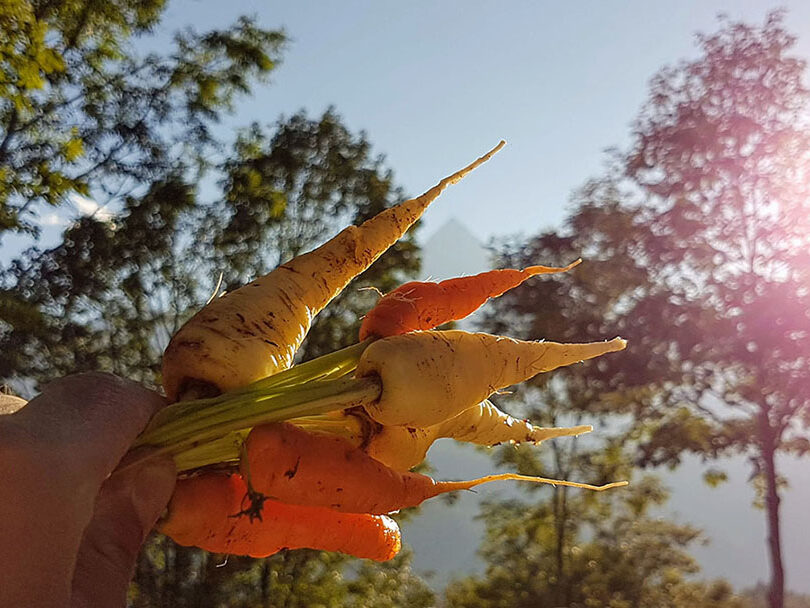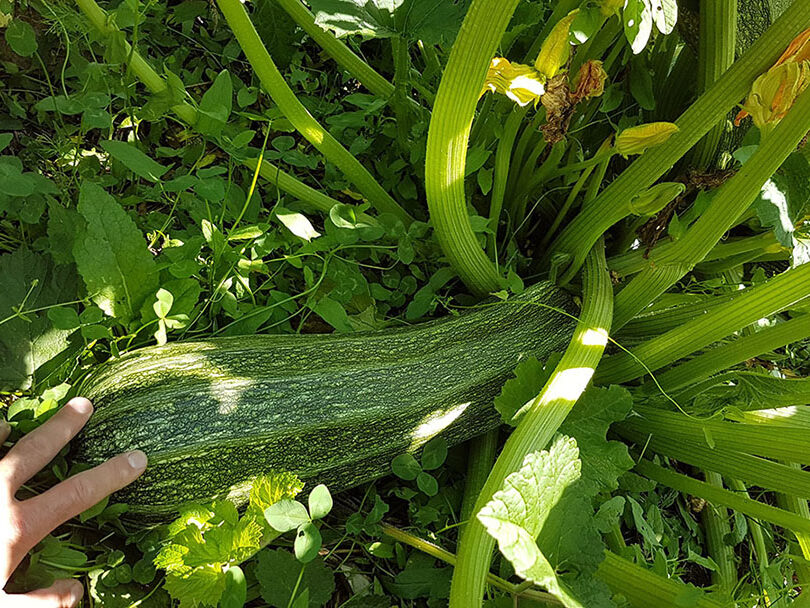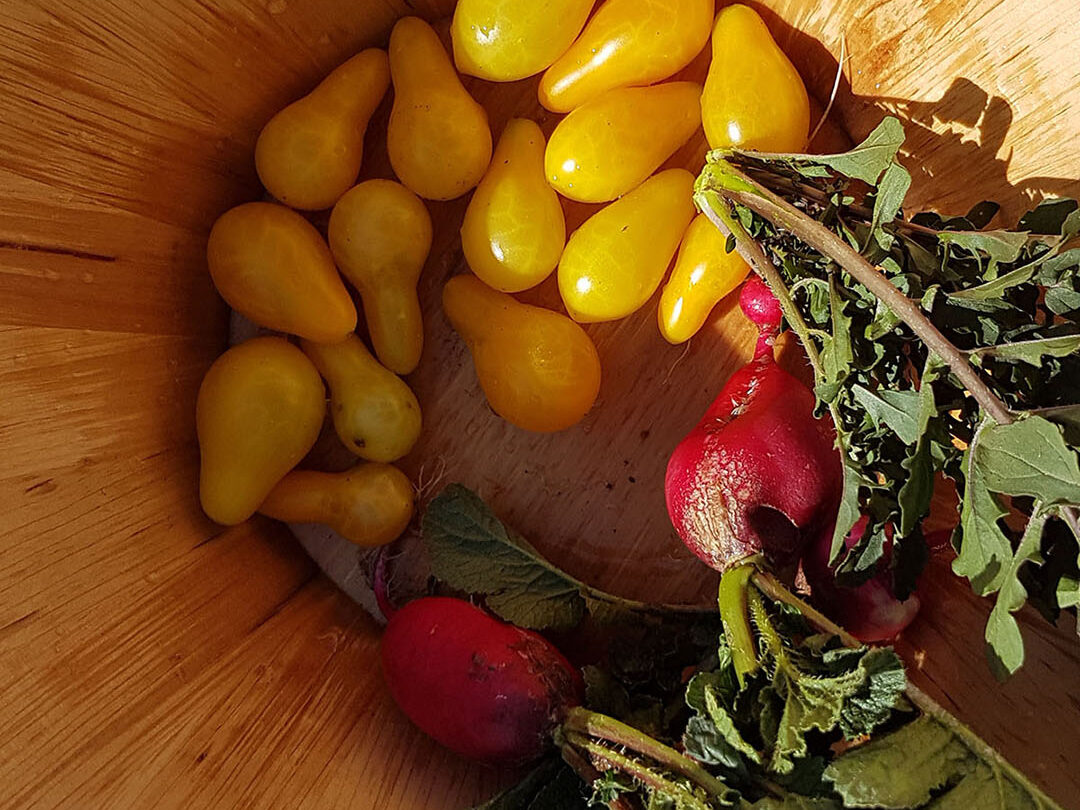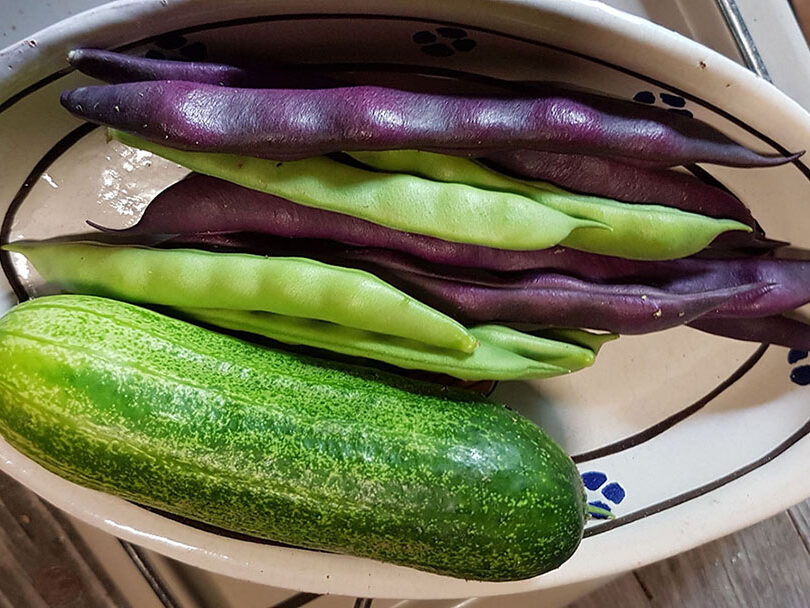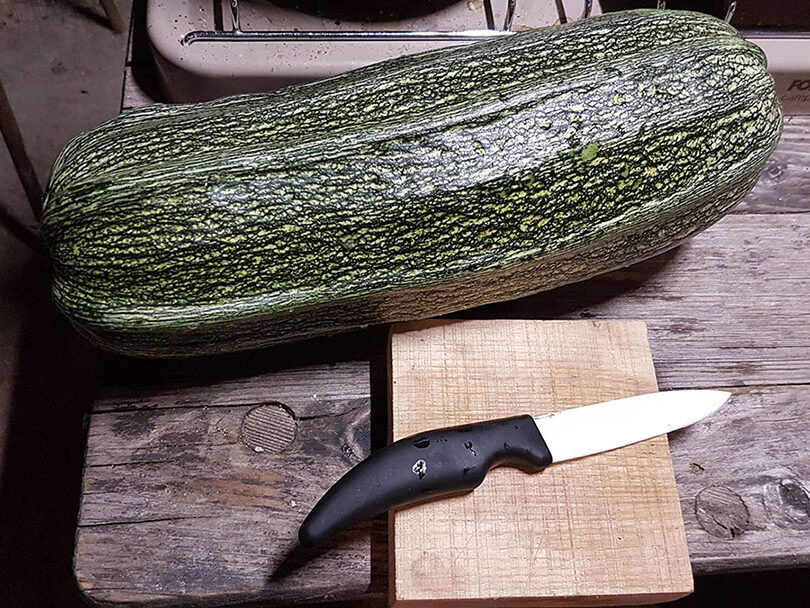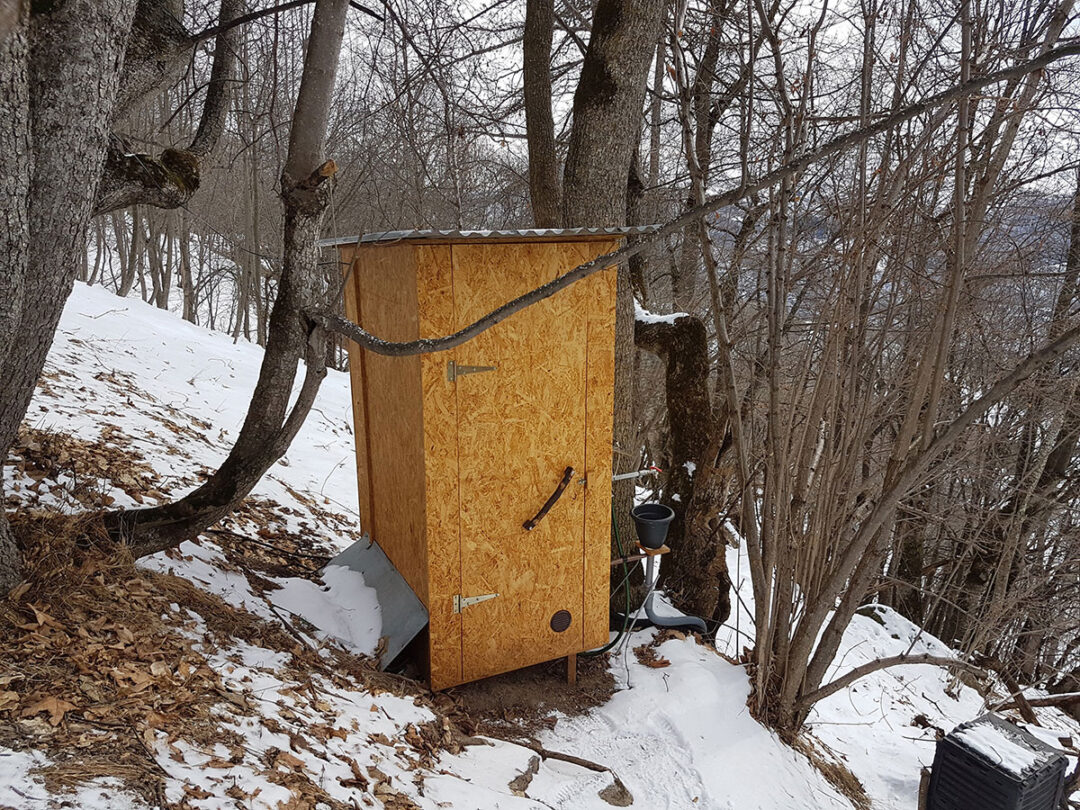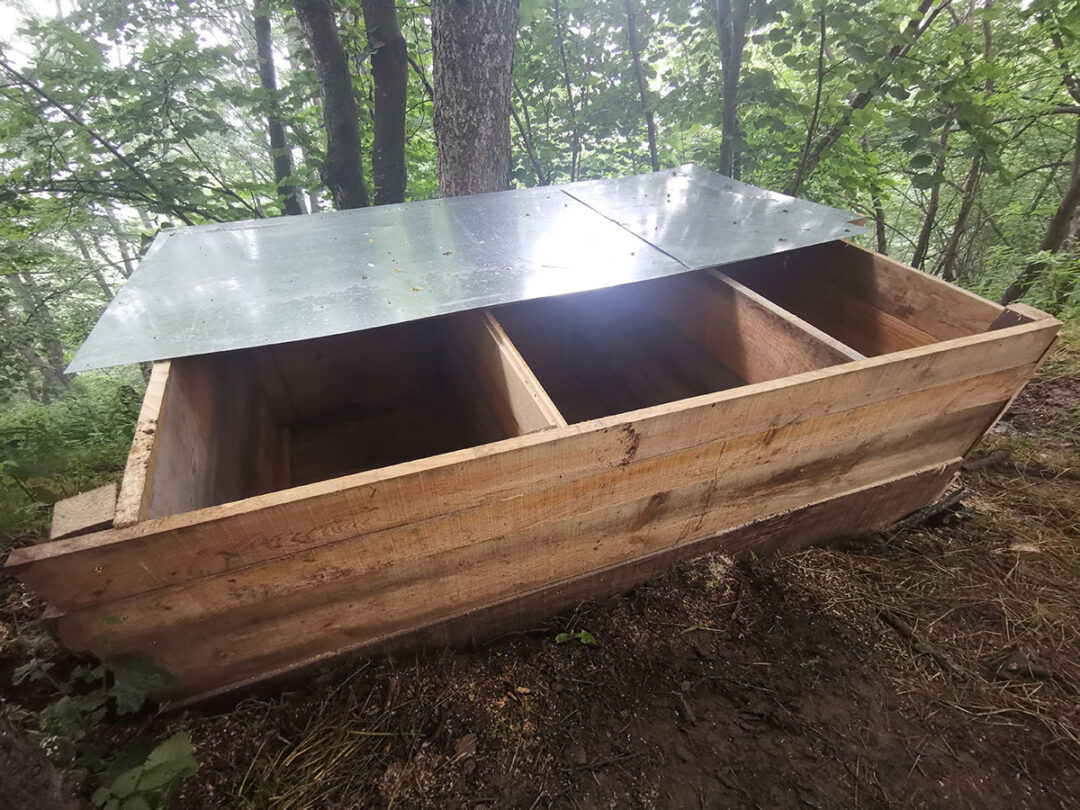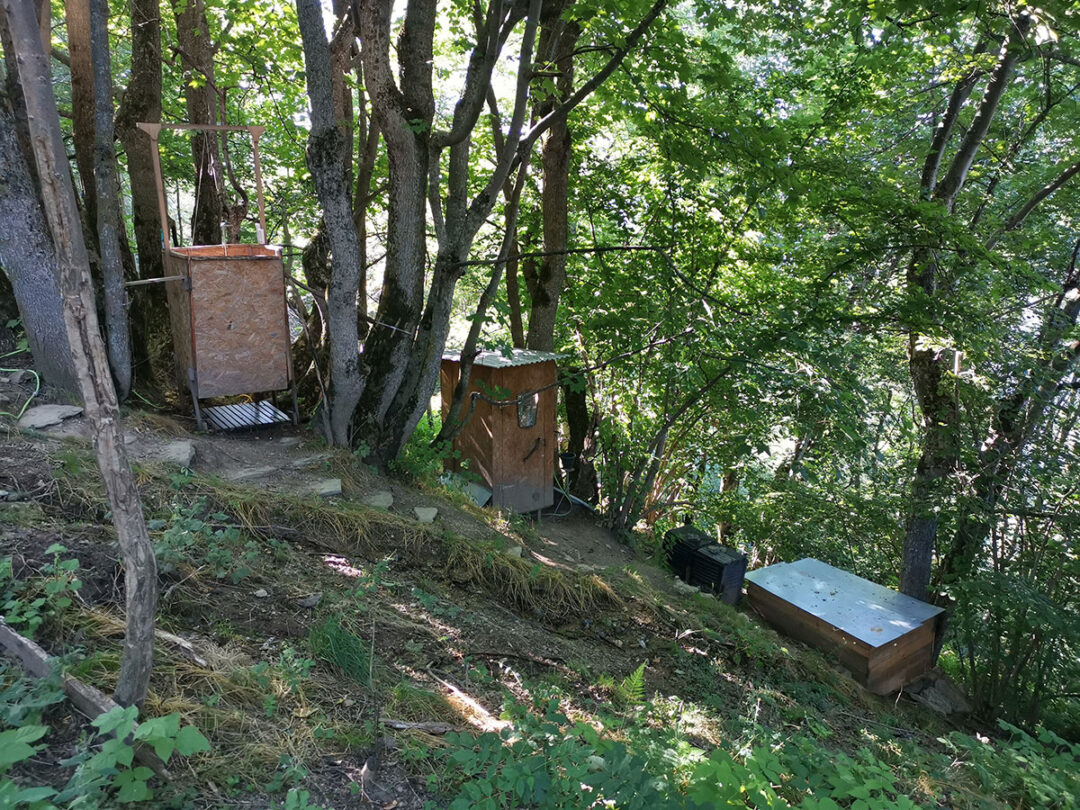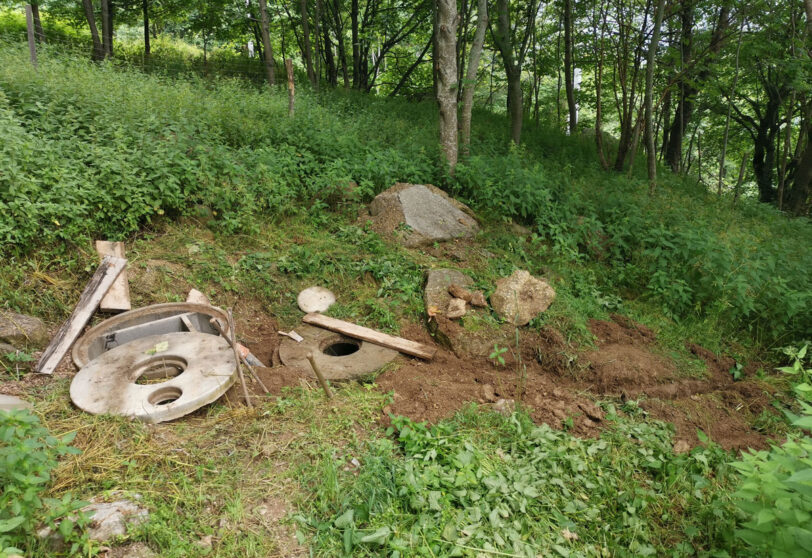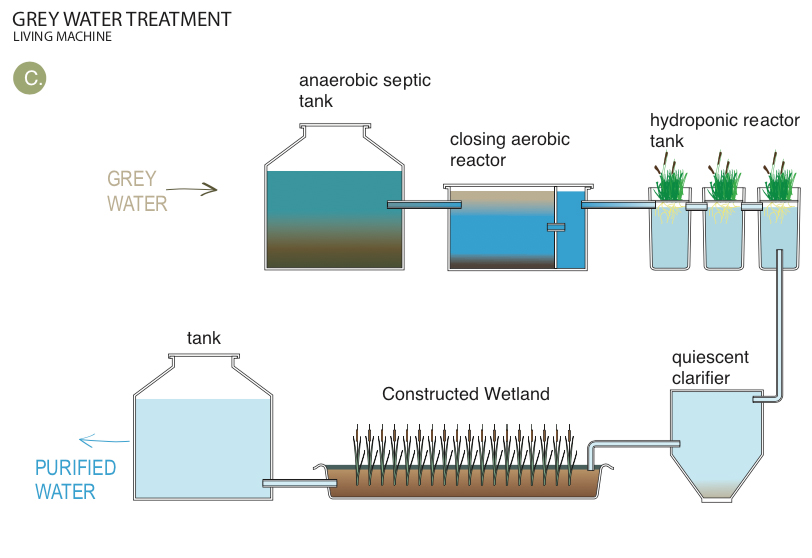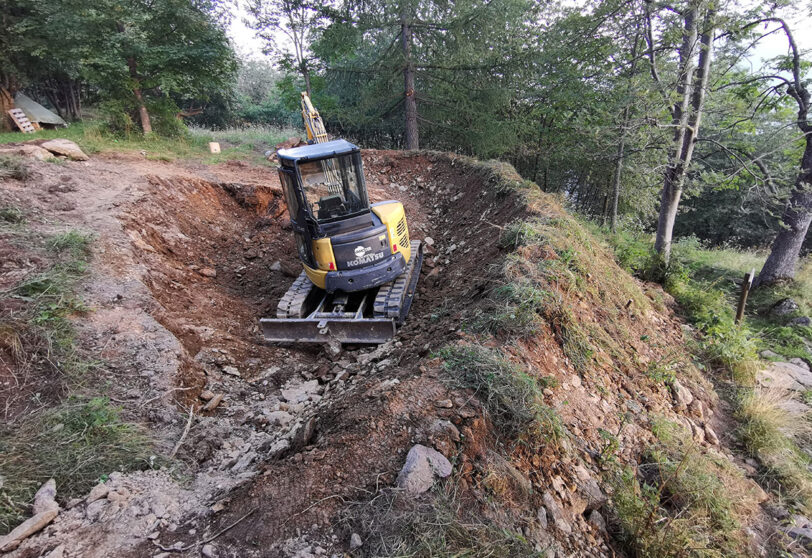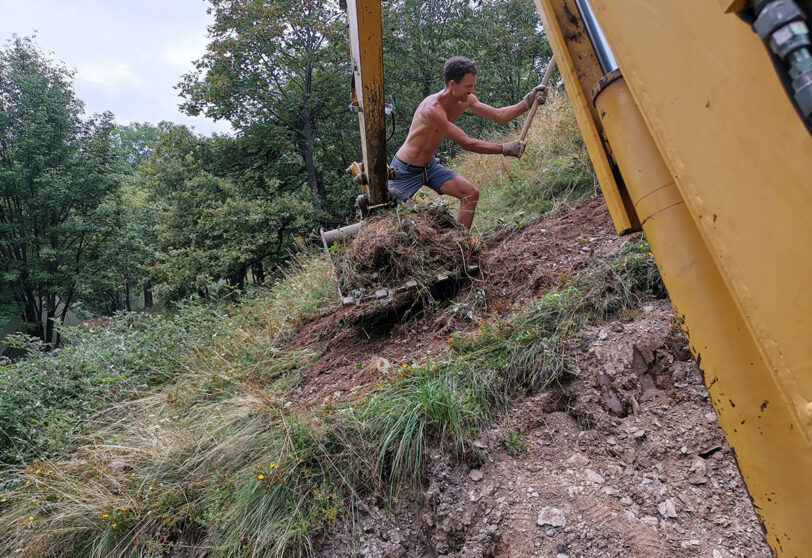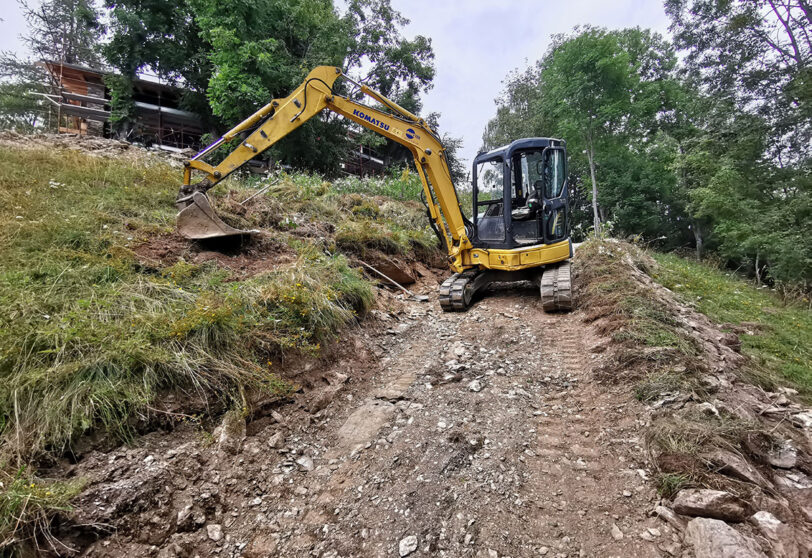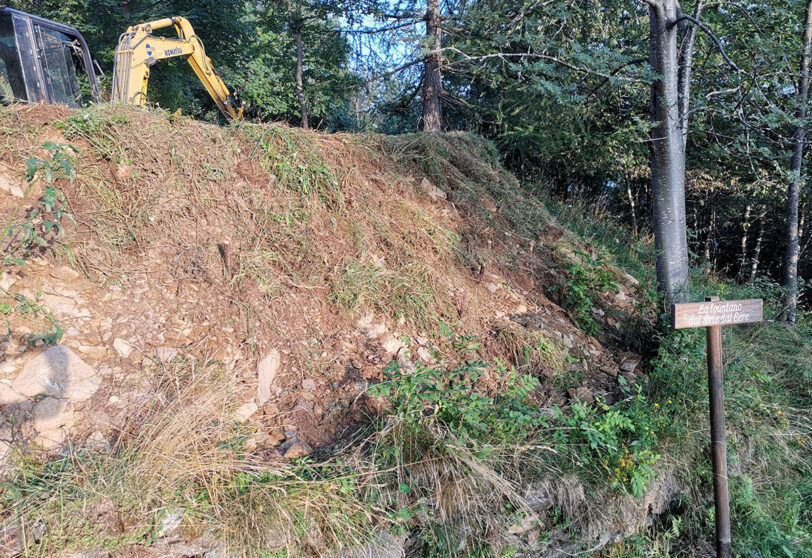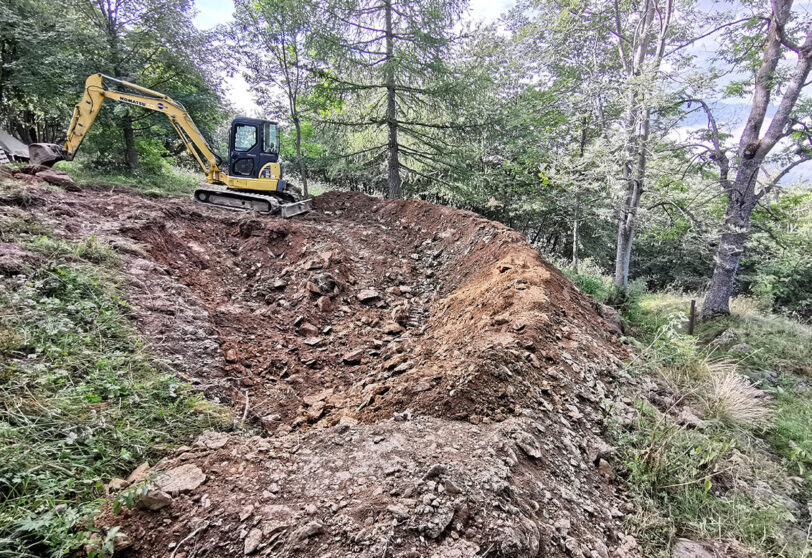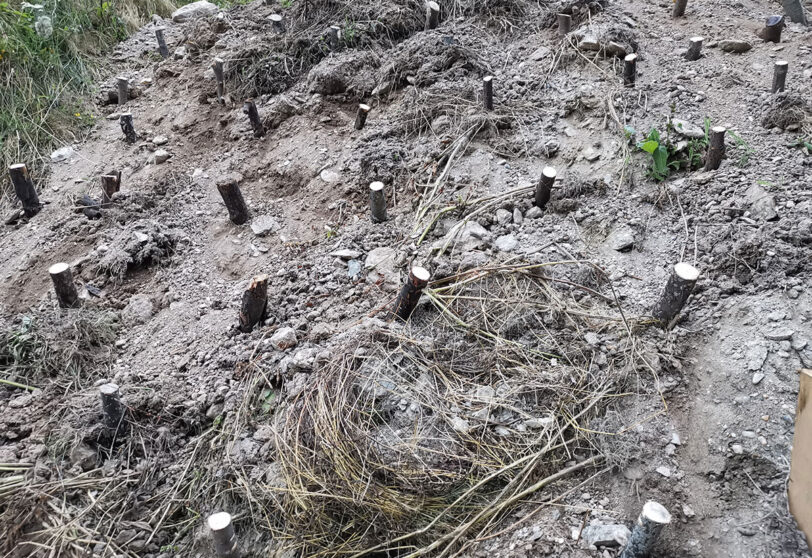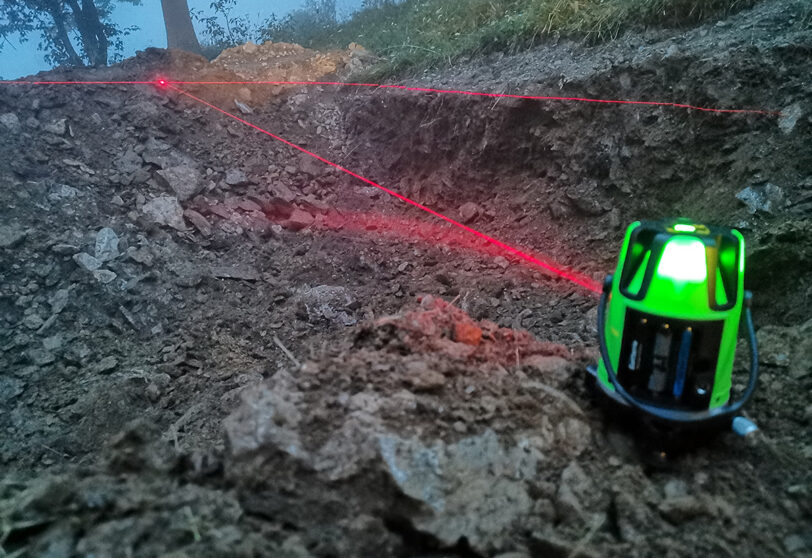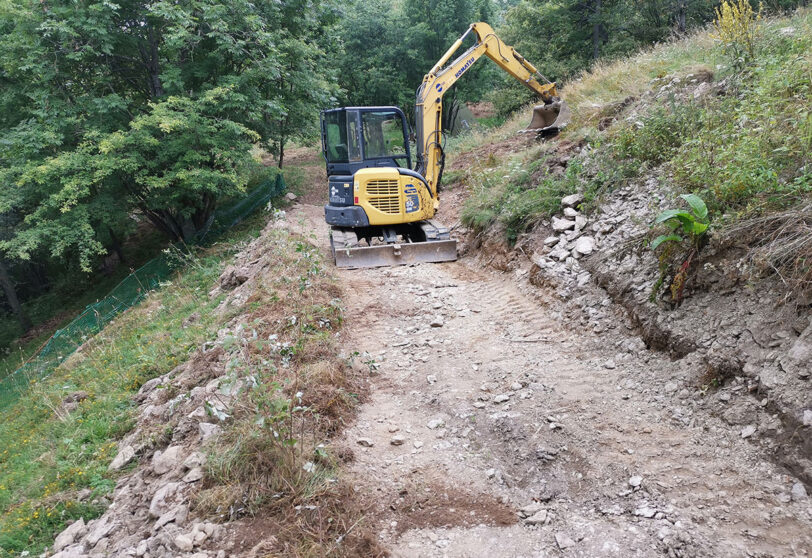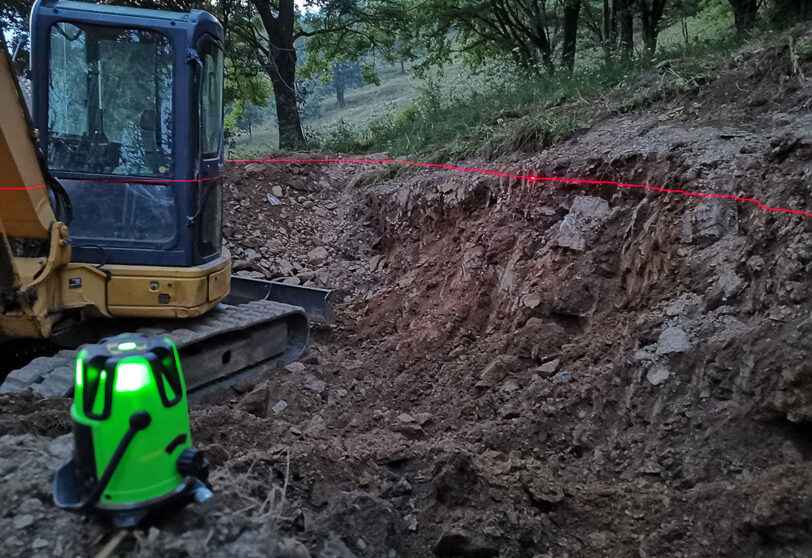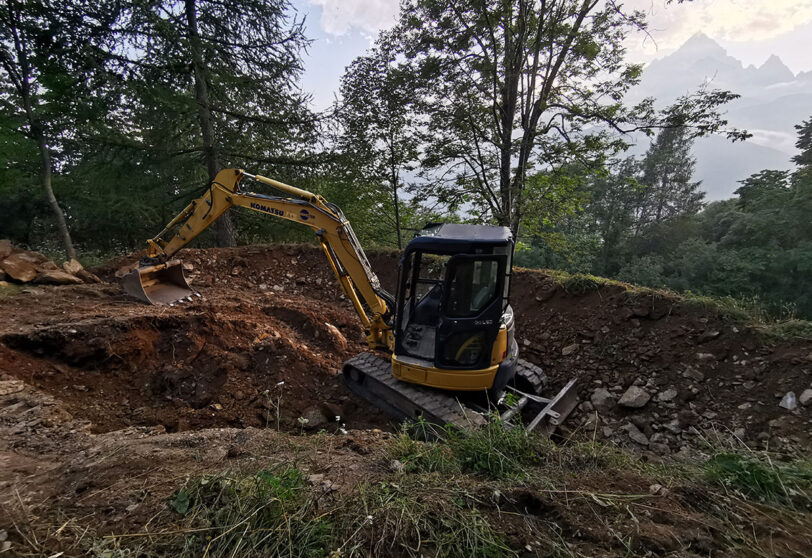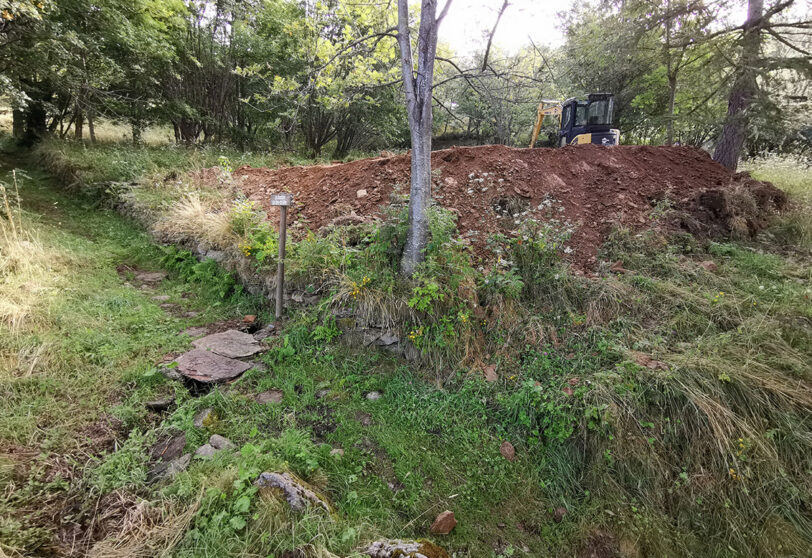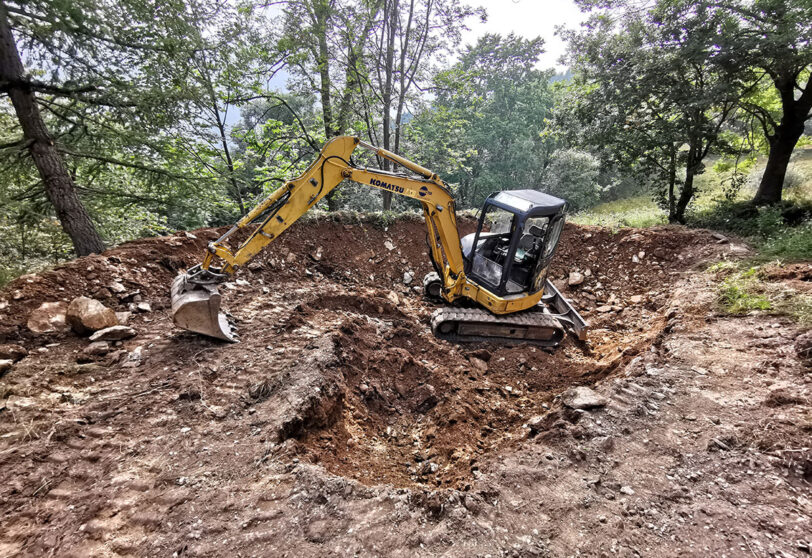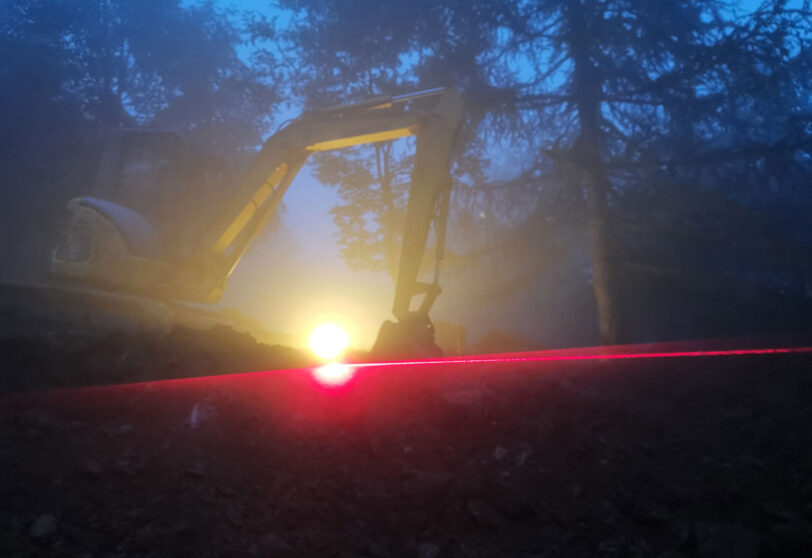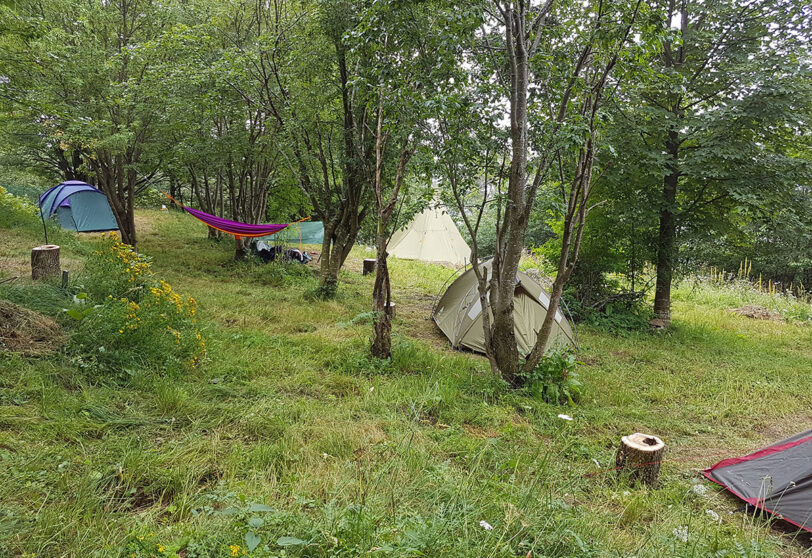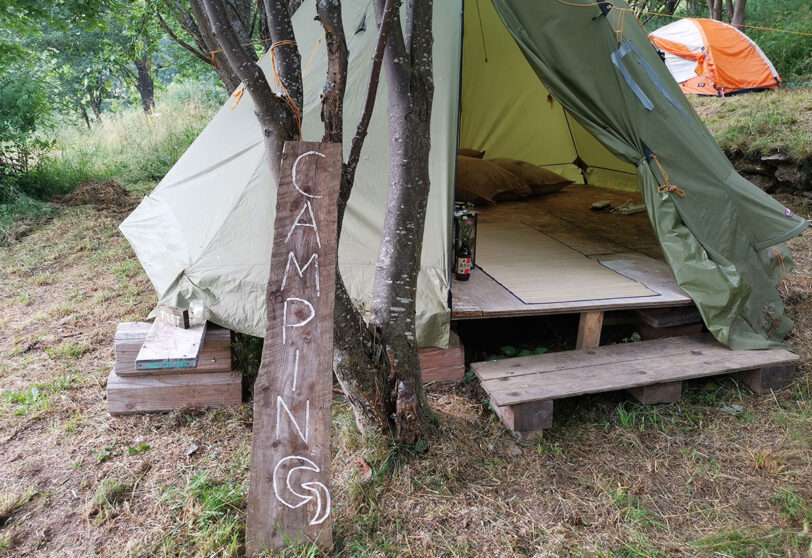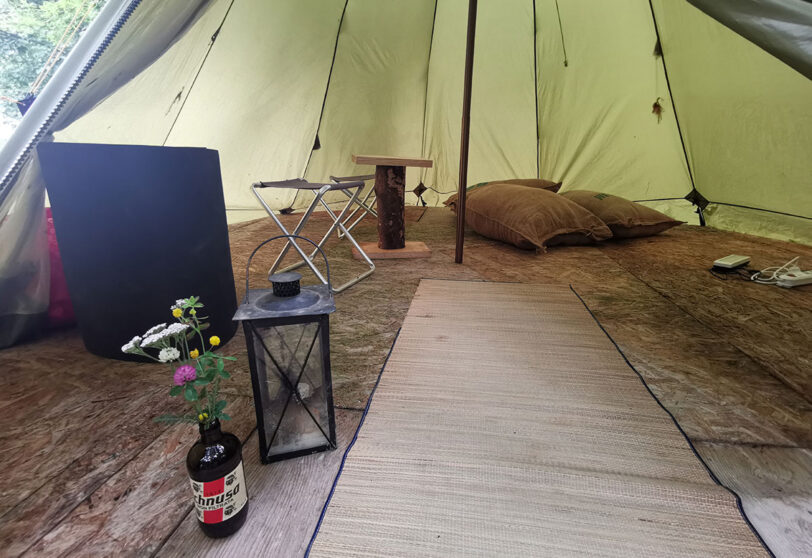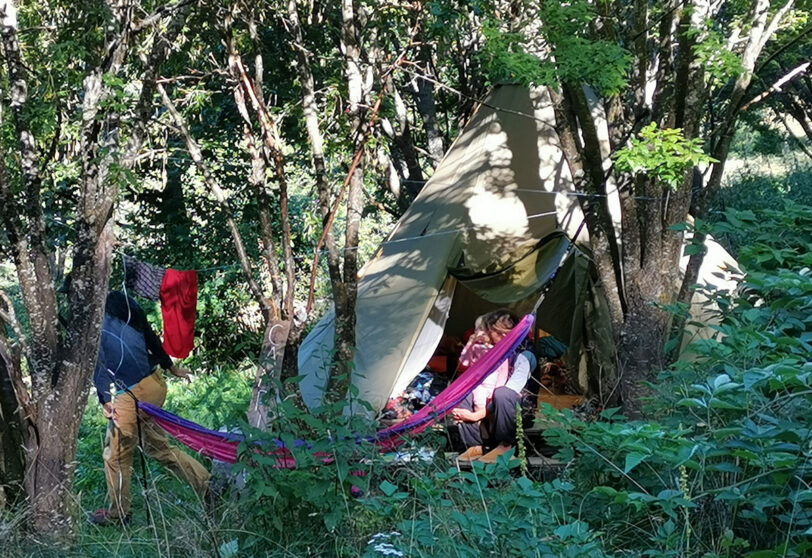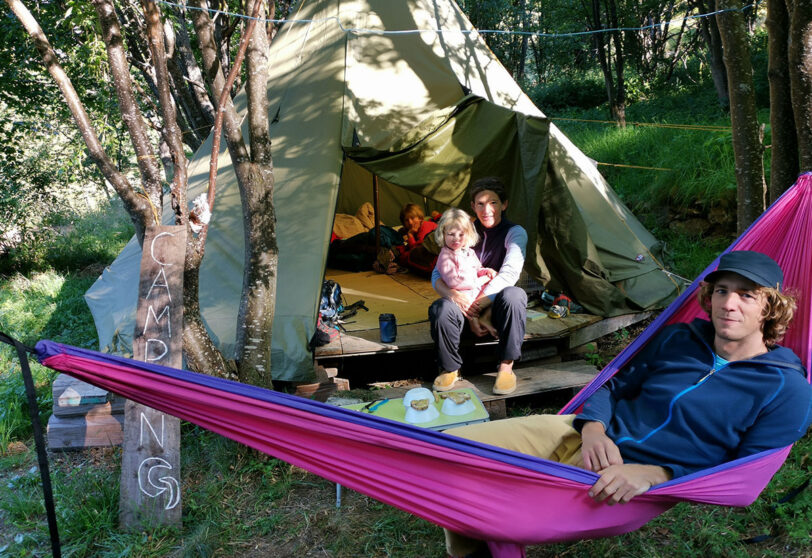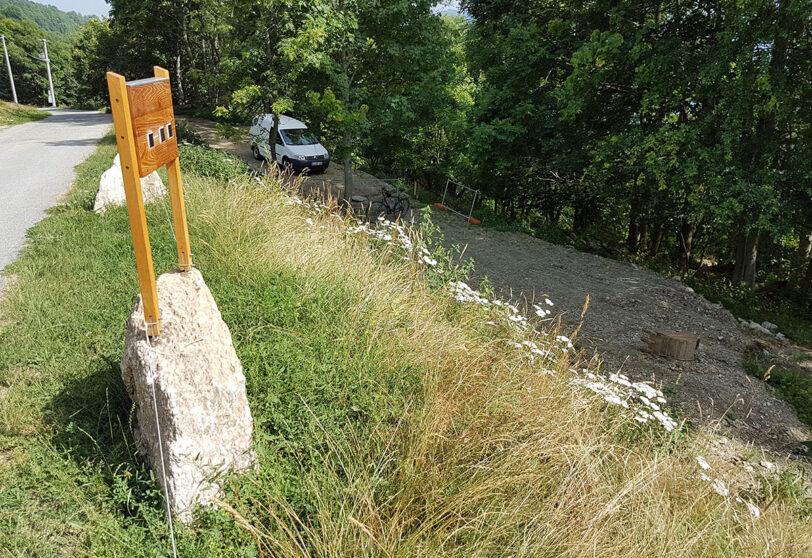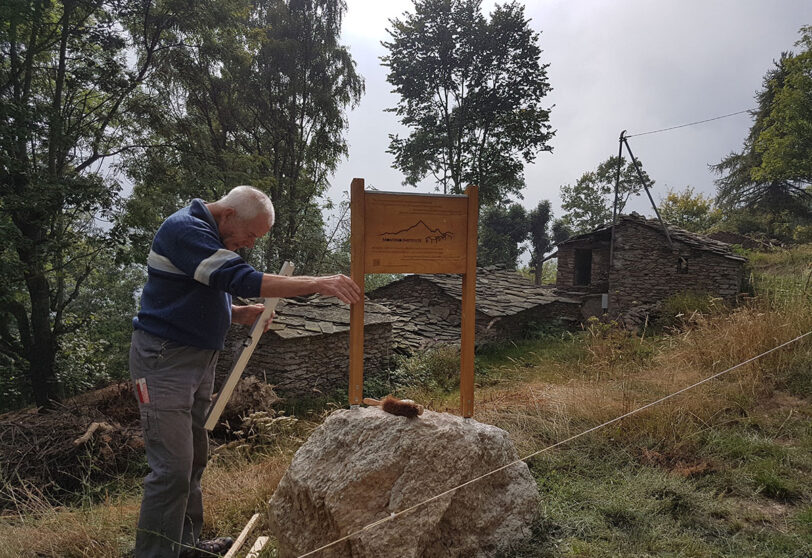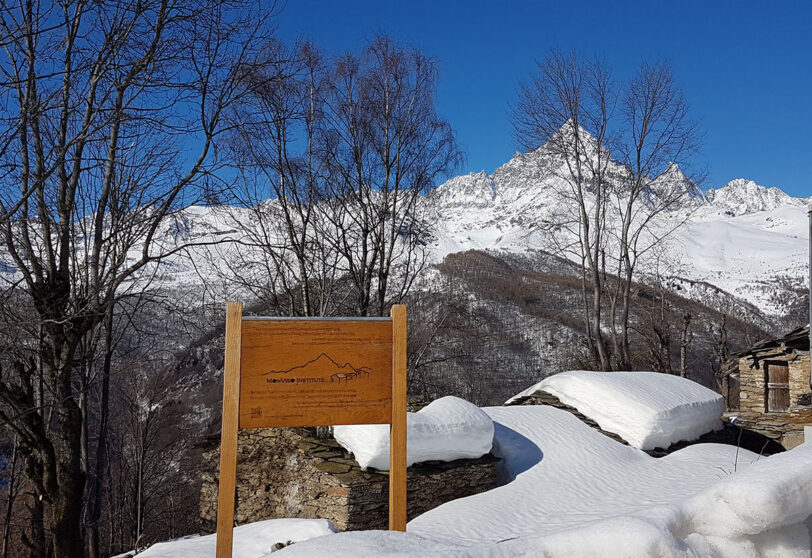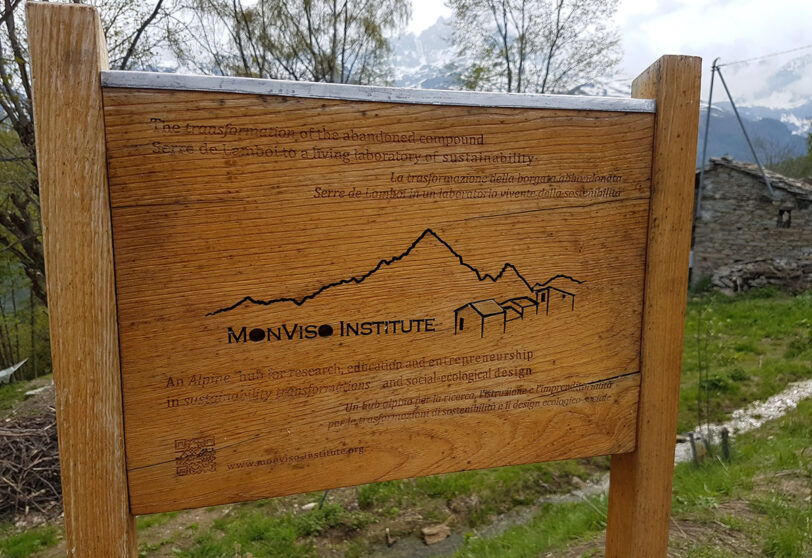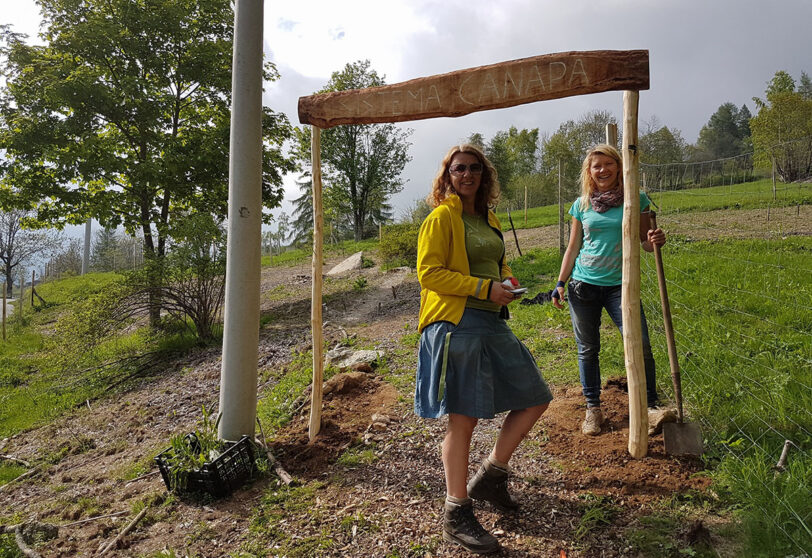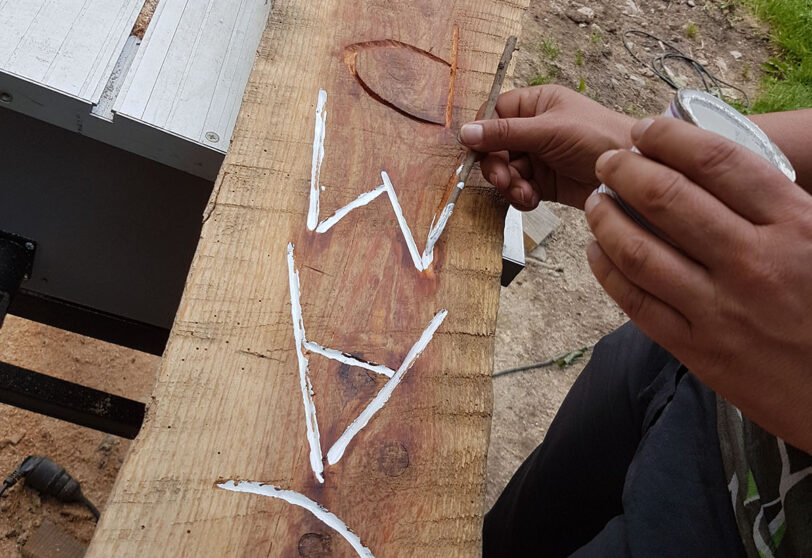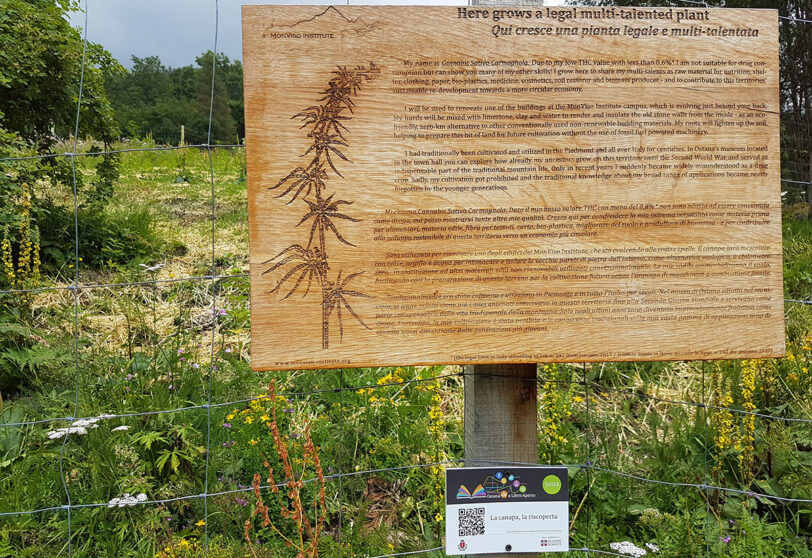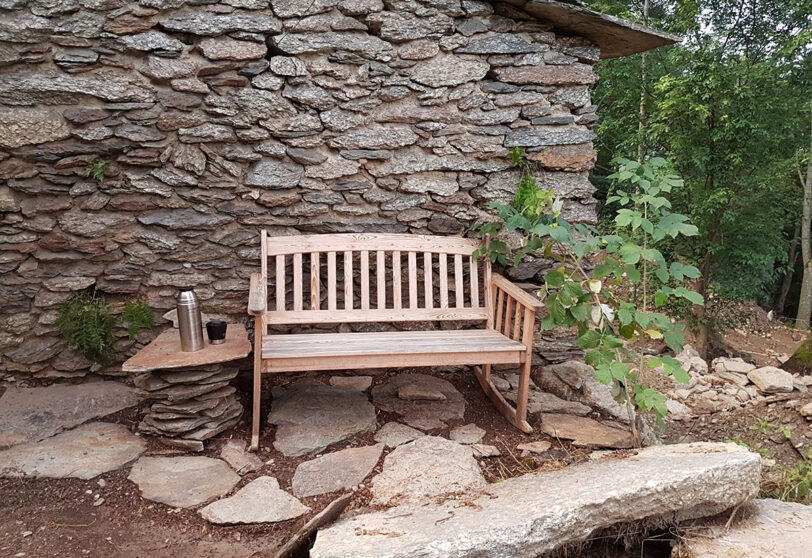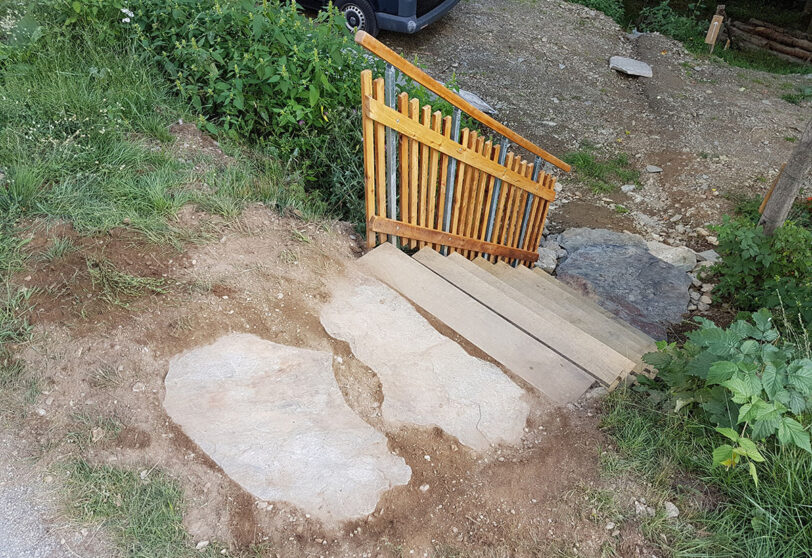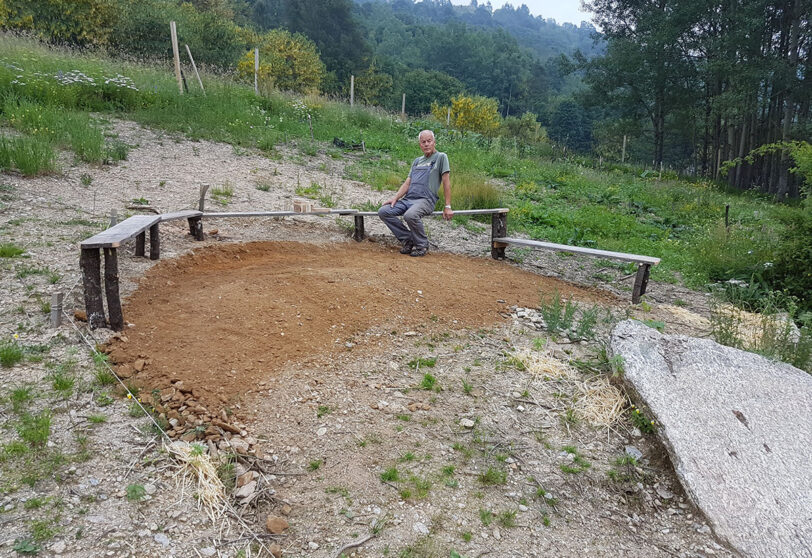Landscape Design
The transition of the MVI campus involves design across scales. The embedding of the buildings into the ecological and cultural landscape is of critical importance, as is the visual landscape quality, its use for renewable energy provision, mobility and access, tourism use, new economic sources of income, and overall the provision of ecosystem services, while restoring and preserving wild landscapes and habitats. Next to the MVI Systemic Design Principles, we embrace the Permaculture Design Principles for regenerative landscape design.
Drone image cartography
For better planning of the landscape design, and in lack of sufficiently detailed public maps of the MVI compound, we developed our own campus map with an equidistance of 20cm. With our drone we took about 300 high resolution photos along a flight grid with 40m distance in 40m elevation. We developed a point cloud from the photos, and from the point cloud a digital terrain and elevation model as the basis for detailed elevation and exposure maps.
For better planning of the landscape design, and in lack of sufficiently detailed public maps of the MVI compound, we developed our own campus map with an equidistance of 20cm. With our drone we took about 300 high resolution photos along a flight grid with 40m distance in 40m elevation. We developed a point cloud from the photos, and from the point cloud a digital terrain and elevation model as the basis for detailed elevation and exposure maps.
Hemp field
We experiment with industrial hemp as a forgotten, multi-functional plant that has the potential to incubate a circular (mountain) economy. We grow hemp since 2017 on our own land as demonstration field. With the hemp fibers, we laminate skis and other composites; we produce CBD oil from the female flowers and use the wooden shives as building insulation.
Paulownia
Paulownia (Paulowniaceae) is one of the world’s fastest growing trees. Originally introduced from Asia to Europe in the 17th century, its wood is one of the lightest, while keeping high flexibility and stability. The fast growth, lightweight and stability make it an ideal wood for regenerative composite constructions (a wood core sandwiched by fiber belts, such as from hemp), like skis, surfboards, orthopedic splines, or electric car chassis. MVI experiments with Paulownia trees on our test plantation on 1500m asl, to understand its growth rate, resilience to frost, snow and hail, and to storms. Paulownia could well become another interesting economic “crop” for mountain valleys. Together with hemp, one would then have the main materials for regenerative composite materials, and a new valuable land use for peripheral and mountainous areas.
We experiment with the resilience of this tree species, amongst the fastest growing trees in the world, with an exceptional weight-stability ratio of its wood, and thus being perfectly tuned to be used for light weight composite materials (such as skis), in combination with hemp fibers.
Group arena
The group arena is our half-circular geographic communication center on the MVI campus. The arena can accommodate up to 100 people for a music or speaker event, or be cozy to have a barbeque fire in the 1.2m big fire bowl for 5-10 people. We built this arena from the remaining large stones that we used to construct the 25x3m large retaining wall behind the Northern “earth cellar” of the Doppio building. The stones are from a neighbouring valley’s quarry.
Pizza oven
As part of the central group arena, we built this wooden oven to bake pizza, bread, and other dishes. The oven insert is a prefabricated dome in single parts. We built the foundation from large rocks, and insulated the dome with about 20cm of hempcrete, insulating hemp shives mixed with hydraulic lime. The outer shell is covered with local stones. The oven reaches up to 400°C inside after lighting a fire for about two hours. Yet it is so well insulated that powder snow on the dome outside stays dry and powdery even after firing the oven for hours. We host social pizza making events with up to 50 people. A pizza takes less than 2 minutes in the oven if properly heated. In the remaining oven temperature, after the pizza production, we can still bake bread with about 150°C for hours.
Vegetable garden
This experimental veggie garden shows crop rotation system. We grow some of our food here in summer.
Compost & dry toilet
We built this outdoor compost and the dry toilet in combination, for not having to use a chemical toilet during the construction of the Doppio, and for demonstrating and experiencing circularity in human waste. It was built with scrap wood from an outdoor sports company and currently is the main toilet for campus visitors and campers. The dry toilet separates the liquid urine from the solid feces; the urine is thinned with creek water and irrigated in the forest soil, the feces are collected in a bucket, covered with a mix of wood saw dust, lime, and charcoal, and then composted into the large three-compartment compost system. The feces are covered with additional layers of lime, left for one year in the first compartment, then they get turned and aired, composted for a 2nd year, then we heat them up above 70°C on a metal rost above a fire to kill any potential worm eggs. After this treatment, we release the compost back into nature
Black and grey water recycling site
We dedicated a forested patch of land about 120m from our main campus as a testing and demonstration area for black and grey water recycling. On purpose we did not connect the house’s black and grey water pipes to the public grid - which would have been 80 additional meters of pipe - but instead installed a traditional three-chambers septic tank system with anaerobic biological water treatment. However, this basic traditional treatment still causes problems with the drain water being polluted with phosphates, nitrogens, and others. We thus add a so-called “living machine” for secondary biological cleaning of this drain water, and currently experiment with plants that grow on this elevation over winter. The system is in development. Water quality is continuously monitored.
Swimming pond
We are in the process of building a natural swimming pond on the lower part of the campus as part of the glamping and wellness site. It will feature protected plant and water life zones with a deep water swimming zone. This water reservoir is fed in parts by our own spring and will serve as fire safety backup.
Gl(c)amping site
We have been using the flatter, lower part as a simple, calm and hidden site for tents. We added one larger tipi as a glamping home (glamorous + camping) on an elevated wooden platform, and will add further glamping sites in the forest adjacent to this site.
Sings
Communicating to the public what we are creating where and why is of high relevance. Digital communication and guided site visits are supported by signs on campus. We use local chestnut wood, laser engraving, and hand-carved variations.
Benches, stairs, various
We are continuously improving accessibility of the campus and keep creating cozy nooks to hang, chill and relax on campus.
Permaculture
PERMACULTURE PRINCIPLES
Applicable to Permanent Agriculture and Landscaping, these principles are guidance for the actions we take.
-
- Observe and Interact – “Beauty is in the mind of the beholder”
By taking the time to engage with nature we can design solutions that suit our particular situation. - Catch and Store Energy – “Make hay while the sun shines”
By developing systems that collect resources when they are abundant, we can use them in times of need. - Obtain a yield – “You can’t work on an empty stomach”
Ensure that you are getting truly useful rewards as part of the working you are doing. - Apply Self Regulation and Accept Feedback – “The sins of the fathers are visited on the children of the seventh generation”
We need to discourage inappropriate activity to ensure that systems can continue to function well. Negative feedback is often slow to emerge. - Use and Value Renewable Resources and Services – “Let nature take its course”
Make the best use of nature’s abundance to reduce our consumptive behavior and dependence on non-renewable resources. - Produce No Waste – “Waste not, want not” or “A stitch in time saves nine”
By valuing and making use of all the resources that are available to us, nothing goes to waste. - Design From Patterns to Details – “Can’t see the forest for the trees”
By stepping back, we can observe patterns in nature and society. These can form the backbone of our designs, with the details filled in as we go. - Integrate Rather Than Segregate – “Many hands make light work”
By putting the right things in the right place, relationships develop between those things and they work together to support each other. - Use Small and Slow Solutions – “Slow and steady wins the race” or “The bigger they are, the harder they fall”
Small and slow systems are easier to maintain than big ones, making better use of local resources and produce more sustainable outcomes. - Use and Value Diversity – “Don’t put all your eggs in one basket”
Diversity reduces vulnerability to a variety of threats and takes advantage of the unique nature of the environment in which it resides. - Use Edges and Value the Marginal – “Don’t think you are on the right track just because it’s a well-beaten path”
The interface between things is where the most interesting events take place. These are often the most valuable, diverse and productive elements in the system. - Creatively Use and Respond to Change – “Vision is not seeing things as they are but as they will be”
We can have a positive impact on inevitable change by carefully observing and then intervening at the right time.
- Observe and Interact – “Beauty is in the mind of the beholder”
These Permaculture Principles were developed by Australian David Holmgren.
